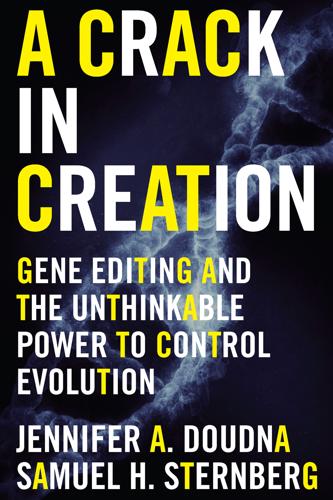
A Crack in Creation: Gene Editing and the Unthinkable Power to Control Evolution
by
Jennifer A. Doudna
and
Samuel H. Sternberg
Published 15 Mar 2017
See CRISPR codon, 102 collaboration, 61, 70, 73, 75, 77, 84, 242 Collins, Francis, 217, 227 communication, 197 IGI Forum on Bioethics, 206–10 lack of, 200–201 need for, 125 with public, 204–5, 243, 244–45 computers, gene editing and, 112 conferences American Society for Microbiology, 70 Asilomar I, 202–3 Asilomar II, 203–4, 207 on CRISPR, 57, 84 Engineering the Human Germline, 192–93 IGI Forum on Bioethics, 206–10 International Congress on Recombinant DNA Molecules, 203–4 International Summit on Human Gene Editing, 219–22 controversies, 99 de-extinction, 146–47 gene drives, 149–52 gene-edited food, 126–27 germline editing, xvi–xvii, 160, 183, 188, 191, 201, 205, 208–40 preimplantation genetic diagnosis, 195 See also ethics Corn, Jacob, 206 correction, spontaneous, 5–7 Crichton, Michael, 145 Crick, Francis, 10 CRISPR (clustered regularly interspaced short palindromic repeats), 34, 42 ability to target many genes at once, 173–74 accuracy, 222–24 as antiviral defense mechanism, 50, 53–57 cost of, 111, 112–13, 199 democratization of, 113 diversity of, 68 dosage of, 181 Doudna’s introduction to, 39–45 ease of use, 111, 112–13, 187, 199 efficiency, 104 efforts to shape future of, 184 excitement around, 87–89, 184 expansion of research into, 111 immune systems, 68–69 inner workings of, 68 kits, 113, 199 off-target edits, 178–81, 214–15, 223–24 potential of, 100–111, 181, 240 programming, 107 puppeteer function, 108 repeat sequences of, 41, 54 role of in bacteria and archaea, 43–44 spacer sequences of, 41, 54 using in human cells, 91–96 as vaccination card, 56, 57 CRISPR project expansion, 65 practical uses, 65 setting up, 51–52 CRISPR RNA, 80, 82 in antiviral defense, 57–58 DNA cutting and, 81, 83 targeting of DNA, 59, 61, 62 CRISPR Therapeutics, 89 CRISPR tourism, 237 CRISPR-associated complex for antiviral defense (Cascade), 67, 69 CRISPR-associated (cas) genes, 51, 52, 62, 63, 66–68 CRISPR-Cas9, 83, 86, 88 crops. See agriculture Csn1, 72, 75 See also Cas9 CXCR4 gene, 4, 5, 14 cystic fibrosis, 14, 225 cytosine, 9 D dairy industry, 54, 73 Daley, George, 216 Danisco, 53–57, 69, 75 Darnovsky, Marcy, 221 Davos, Switzerland, 154, 155 DEC2 gene, 230 de-extinction, 144–47 d’Herelle, Félix, 45–46 Dickey-Wicker Amendment, 236 diseases animal research and, 137–39 cancer, 154, 155, 171–78 gene editing in treatment, 155–58 ribozyme-based therapies, 39 See also therapeutics diseases, blood-based, 162 diseases, genetic, 168–71 beta-thalassemia, 162–64, 214 causes of, 13–14, 15, 223 cured by natural gene editing, 6 diagnosing, 15 dominant inheritance, 14 Duchenne muscular dystrophy (DMD), 169–70 germline editing, 226 monogenic, 161 severe combined immunodeficiency (SCID), 6, 19, 20, 32, 164 sickle cell disease, 13–14, 16, 87–89, 162–64, 224 somatic editing, 160 treating, 15–22, 24–26, 87–89, 100.
…
Using this kind of sophisticated guesswork, computational biologists had already figured out the chemical makeup of hundreds of different cas genes that invariably coexisted with CRISPR regions. No matter which organism you were interested in, if its genome contained CRISPR DNA, there were bound to be cas genes in the immediate vicinity. It was almost as if CRISPR had co-evolved with cas genes; it didn’t seem possible to have one without the other. The proteins encoded by these cas genes, we reasoned, must work intimately with CRISPR DNA—or perhaps CRISPR RNA molecules, or even phage DNA. One thing seemed certain: we’d need to find out how these genes worked and discern the biochemical functions of the proteins they produced before we could understand the CRISPR immune system as a whole.
…
They suspected it was CRISPR and hypothesized that the CRISPR regions of these nine new mutant strains would look different than the CRISPR of the original strain. Sure enough, after isolating the genomic DNA from each mutant strain, the researchers found that every single CRISPR region had expanded to include a new snippet of DNA spliced between the repeats. Furthermore, these new spacers perfectly matched the DNA of the phage to which that strain was now immune. What made this apparent mode of immunity so remarkable was that, because these changes were physically embedded in the bacteria’s CRISPR DNA, the new immunity was heritable and would be passed down every time the bacterial cells reproduced.
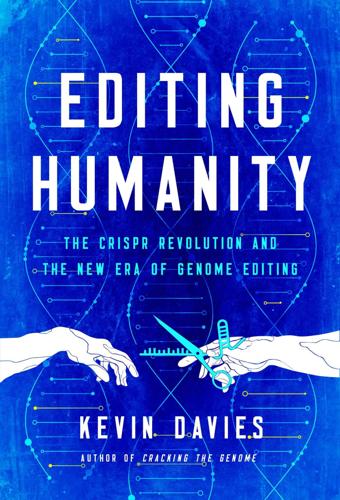
Editing Humanity: The CRISPR Revolution and the New Era of Genome Editing
by
Kevin Davies
Published 5 Oct 2020
J., 323 Cornell Medical Center, 340 Coronavirus (COVID-19) pandemic, 6, 22, 29–30, 100–101, 178, 215–216, 240, 343–344, 364–366 Corteva, 186, 302, 309, 314 Costolo, Dick, 95 Cowan, Chad, 89 Cowell, Simon, 147 Crack in Creation, A, 95 Cracking the Genome, xiv Cramer, Jim, 120 Cravatt, Ben, 366 Crichton, Michael, 76–77, 132 Crick, Francis, 7, 48, 60, 66, 78, 92, 123–125, 131–133, 181, 222, 367 Crick, Kindra, 367 Crick, Michael, 124–126 Crick, Odile, 126, 367 Crick Institute, 222, 234 Crisanti, Andrea, 292–294, 296 CRISPR array, 22–27, 23, 34, 43–44, 50, 50–51, 61, 69, 73, 84 bacteria and, 22–28, 23 benefits of, xii–xviii, 6–16 breakthrough with, xii, 6–7, 35, 39–42, 97 classes of, 24, 24–25 description of, ix–xii, 3–5, 20 editing process, xii explanation of, ix–xii, 3–7 fears about, ix–x, 14–16, 177–178, 295–296, 358–359 genetic code and, x–xviii, 21 genome editing and, 19–21, 28–29, 54–56, 105–122, 289 human DNA and, xii impact of, 5–16 patent applications, 43–44, 56, 92–93, 171, 181–190 safety with, 177–178 term for, 33 types of systems, 56–57 uses for, x–xviii viruses and, xi–xii, 22–27 CRISPR babies, x–xviii, 5, 14–16, 193–205, 214, 230–253, 257–264, 269–276, 338, 354–356. See also Babies “CRISPR Craze,” xi–xiii, 3–16 CRISPR Generation, The, 262 CRISPR Journal, xvii, 21, 152, 248, 257 “CRISPR Quandary, The,” 46 CRISPR RNA (crRNA), 23, 28, 61–65, 85, 186. See also RNA CRISPR sequencing, 41–42 CRISPR Therapeutics, 13, 169–170 CRISPR therapy, 167, 363 CRISPR-Cas9. See also CRISPR cutting actions of, 26–28, 28 DNA and, 21–26, 24 “invention” of, 179–180 RNA and, 23–25, 28, 28–29 role of, 21–25, 27, 55–56, 63 types of, 24, 24–26, 98–99 Crops, 301–315, 319–320 Cross, Ryan, 145 Crossley, Merlin, 153, 168 Crowley, John, 163 Crystal, Ron, 164 Culver, Kenneth, 139 Cura Foundation, 12 Cure Rare Disease, 363 Cutshall, Cynthia, 139–140 CVC, 180–190 CXCR4, 117, 118 Cystic fibrosis, xiii, 163, 231, 248, 322, 334, 337, 339, 354 Czechowicz, Agnieszka, 329 D Da Vinci, Leonardo, xviii, 279 Daley, George, 233–234, 240–241, 253, 265, 273 Dana Farber Cancer Institute, 157 Danisco, 39, 41–45, 54, 57, 81, 180 Danson, Ted, 90 Darwin, Charles, 92, 130, 291, 298 Darwin Life, 214 Davidson, Alan, 101 Davies, Dame Kay, 258 De Jong, Pieter, 18 De Silva, Ashanthi, 139–140 Dean, Michael, 118 Decoding Annie Parker, 138 Deem, Michael, 195, 207, 209, 212, 219, 226, 228, 240, 251, 253, 261, 266 “Defense mechanism,” 32, 38, 51, 63 “Definitely Maybe,” 90 Deisseroth, Karl, 78 Delbrück, Max, 125, 127 Deltcheva, Elitza, 63 Dementia, xvii, 217, 344–345 Dench, Judi, 349 Dengue fever, 101, 289, 294 Designated Survivor, 6 Designer babies, xvii–xviii, 5, 11, 204, 215, 223, 341, 348.
…
ONLINE RESOURCES Addgene: Educational Tools and Resources. www.addgene.org/crispr/ Many useful educational tools available at the non-profit repository. The CRISPR Journal. www.crisprjournal.com Peer-review journal dedicated to CRISPR and genome editing research (published by Mary Ann Liebert Inc.). Guidepost: A podcast series from The CRISPR Journal. home.liebertpub.com/lpages/crispr-guidepost-podcast/215/ In-depth interviews with leading practitioners in the world of CRISPR and genome editing. HHMI BioInteractive: CRISPR-Cas9 Mechanism & Applications. www.biointeractive.org/classroom-resources/crispr-cas-9-mechanism-applications.
…
Urnov, “Genome Editing B.C. (Before CRISPR): Lessons from the ‘Old Testament,’ ” CRISPR Journal 1, (2018): 115–125, https://www.liebertpub.com/doi/10.1089/crispr.2018.29007.fyu. 7. Shirley Tilghman, in The Gene, PBS, 2020, https://www.pbs.org/kenburns/the-gene/. 8. Rebecca Robbins, “The best and worst analogies for CRISPR, ranked,” STAT, December 8, 2017, https://www.statnews.com/2017/12/08/crispr-analogies-ranked/. 9. Lina Dahlberg and Anna Groat Carmona, “CRISPR-Cas Technology In and Out of the Classroom,” CRISPR Journal 1, (2018): 107–114, https://www.liebertpub.com/doi/10.1089/crispr.2018.0007. 10. C. LaManna and R.

The Code Breaker: Jennifer Doudna, Gene Editing, and the Future of the Human Race
by
Walter Isaacson
Published 9 Mar 2021
Then a thought occurred to him: perhaps the wily viruses had developed a way to disarm the bacteria’s CRISPR defenses. That turned out to be right. The viruses had been able to infiltrate the bacteria’s DNA with a little sequence that sabotaged their CRISPR system.5 His anti-CRISPRs didn’t seem to work on CRISPR-Cas9, so the discovery got little attention at first. But in 2016, he and April Pawluk, who had worked with him on the original paper, identified anti-CRISPRs that disabled the Cas9 enzyme. That opened the floodgates for other researchers to join the hunt, and soon more than fifty anti-CRISPR proteins had been discovered. By then Bondy-Denomy had become a professor at the University of California, San Francisco, and he collaborated with Doudna’s lab to show that the anti-CRISPRs could be delivered into human cells to modulate or stop CRISPR-Cas9 editing.6 It was a basic science discovery about the wonders of nature, showing how the amazing arms race between bacteria and viruses evolved.
…
Author’s interviews with Jennifer Doudna, George Church; Gairdner Awards ceremony, Oct. 27, 2016. Chapter 30: The Heroes of CRISPR 1. Author’s interviews with Eric Lander and Emmanuelle Charpentier. 2. Lander, “The Heroes of CRISPR.” 3. Michael Eisen, “The Villain of CRISPR,” It Is Not Junk, Jan. 25, 2016. 4. “Heroes of CRISPR,” eighty-four comments, PubPeer, https://pubpeer.com/publications/D400145518C0A557E9A79F7BB20294; Sharon Begley, “Controversial CRISPR History Set Off an Online Firestorm,” Stat, Jan. 19, 2016. 5. Nathaniel Comfort, “A Whig History of CRISPR,” Genotopia, Jan. 18, 2016; @nccomfort, “I made a hashtag that became a thing!
…
A good guide to the patent issues is the work of Jacob Sherkow of New York Law School, which includes “Law, History and Lessons in the CRISPR Patent Conflict,” Nature Biotechnology, Mar. 2015; “Patents in the Time of CRISPR,” Biochemist, June 2016; “Inventive Steps: The CRISPR Patent Dispute and Scientific Progress,” EMBO Reports, May 23, 2017; “Patent Protection for CRISPR.” 7. Author’s interviews with George Church, Jennifer Doudna, Erik Lander, and Feng Zhang. 8. “CRISPR-Cas Systems and Methods for Altering Expressions of Gene Products,” provisional application No. 61/736,527. 9. Author’s interviews with Luciano Marraffini. 10. Author’s interviews with Feng Zhang and Eric Lander; Lander, “Heroes of CRISPR.” 11. U.S.
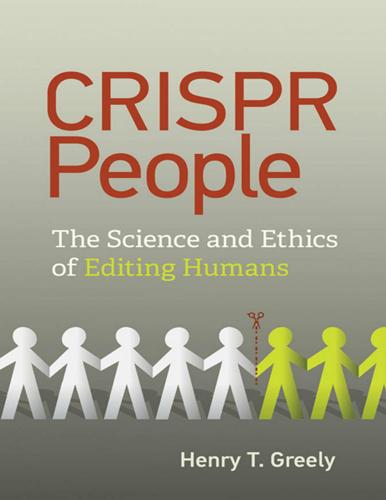
CRISPR People: The Science and Ethics of Editing Humans
by
Henry T. Greely
Published 22 Jan 2021
He also realized that they did not know enough about the function of CRISPR to give it a name that implied any function. So he proposed “regularly spaced short repeats” (RISR), his own favorite, and CRISPR. Jansen also said he preferred CRISPR and noted that “Also not unimportant is the fact that in MedLine CRISPR is a unique entry, which is not true of some of the other shorter acronyms.”10 As to the variations on CRISPR, Jansen told me, “At the time of the publication I could not imagine that there would ever be the verbs crispr, crisprs, crispring and crispred, but it sounds very well.”11 Mojica said he had not thought about how well CRISPR could be used as a verb; it is ‘just a lucky coincidence.’”
…
Scientists have estimated that some kind of CRISPR system is found in 50 percent of bacterial species and 90 percent of species of archaea.20 During this century’s first decade, Mojica and others—including scientists working for Danisco, the company that makes Dannon yogurt—explored CRISPR as a fascinating piece of natural history, a cool and previously unknown trick of Mother Nature. It was not until 2012 that CRISPR, and especially CRISPR in combination with Cas9, began to be seen as a tool for humans. (People will often write about CRISPR along with the particular associated protein they have used, so you’ll see “CRISPR-Cas9,” “CRISPR-Cas13,” “CRISPR-cpf1,” and others. For this book I will usually talk about just “CRISPR,” but remember that it can only work in conjunction with one of these many associated proteins.) It is CRISPR as a tool that is important for us, not CRISPR as an immune system. It makes it much easier, faster, and cheaper for humans to change the DNA of any living organism.
…
Sherkow, “The CRISPR-Cas9 Patent Appeal: Where Do We Go From Here?,” The CRISPR Journal October (2018), https://doi.org/10.1089/crispr.2018.0044; Jacob Sherkow, “The CRISPR Patent Decision Didn’t Get the Science Right. That Doesn’t Mean It Was Wrong,” STAT, September 11, 2018. 32. Eric S. Lander, “The Heroes of CRISPR,” Cell 164, no. 1–2 (2016): 18–28, https://doi.org/10.1016/j.cell.2015.12.041. 33. Tracy Vence, “‘Heroes of CRISPR’ Disputed,” The Scientist, January 19, 2016, https://www.the-scientist.com/news-analysis/heroes-of-crispr-disputed-34188; Michael Eisen, “The Villain of CRISPR,” it is NOT junk, 2016, http://www.michaeleisen.org/blog/?
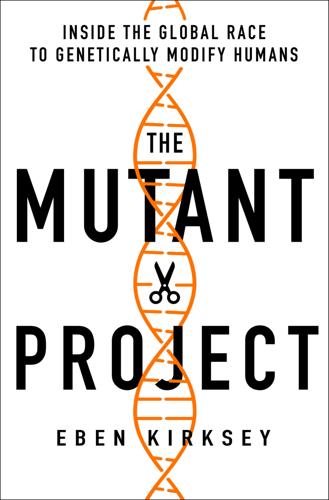
The Mutant Project: Inside the Global Race to Genetically Modify Humans
by
Eben Kirksey
Published 10 Nov 2020
CRISPR is actually an acronym that stands for “clustered regularly interspaced short palindromic repeats.” When scientists initially discovered the code for CRISPR in bacteria, they puzzled over its function. Eventually they figured out that it worked like an immune system for microbes: chopping up foreign bits of DNA. CRISPR is linked with another molecule called Cas9 in some bacteria. After it binds to DNA, CRISPR-Cas9 unwinds part of the double helix into two single strands. While CRISPR holds everything in place, Cas9 makes two cuts or “nicks.” This produces a break in both strands of DNA. Rather than making a clean cut at each target, CRISPR-Cas9 leaves little tails of DNA dangling out from the end.
…
TO LULU AND NANA THE MUTANT TIMELINE PAST 1818 Mary Shelley’s Frankenstein, the world’s first science fiction novel, depicts a young researcher who produces a creature with superhuman powers. 1869 Charles Darwin publishes On the Origin of Species. 1901 The Mutation Theory, by Hugo de Vries, introduces foundational ideas about genetic variation and evolutionary change. 1953 James Watson and Francis Crick claim to have discovered “the secret of life” with DNA’s double-helix structure, after sneaking a peek of an X-ray diffraction photograph taken by Rosalind Franklin. 1963 The X-Men debut in a Marvel Comics series as mutant superheroes fighting for equality and justice. 1978 The world’s first test-tube baby, Louise Brown, is born in England. 1987 CRISPR, or clustered regularly interspaced short palindromic repeats, is discovered by Yoshizumi Ishino in bacteria. The function is unknown. 2000 President Bill Clinton unveils preliminary findings from the Human Genome Project, saying, “Human beings, regardless of race, are 99.9% the same.” 6.2012 Jennifer Doudna and Emmanuelle Charpentier demonstrate how to modify DNA with CRISPR. PRESENT 4.2015 Genetically modified human embryos created with CRISPR are reported from Junjiu Huang’s laboratory in Guangzhou, China. 6.2016 The first CRISPR clinical trial in the United States secures initial approval from a government panel. 2016 Stranger Things, describing secret government experiments on children with uncanny powers, debuts on Netflix. 9.2016 The China National GeneBank opens with the goal of collecting DNA from every human on earth. 10.2017 President Jinping Xi gives his “China Dream” speech, calling on the country to prioritize innovation with “cutting-edge frontier technologies.” 2018 Dr.
…
Ashley Fischer flew in from the company’s offices in St. Louis to help teach the course. She introduced CRISPR as a success story of women in science. A “CRISPR craze” started sweeping biology in 2012, she said, after Jennifer Doudna and her French collaborator, Emmanuelle Charpentier, turned a bacterial enzyme into a tool for cutting DNA. She did not need to mention the men at Harvard University who filed for a CRISPR patent after Doudna and Charpentier’s discovery. While teams of lawyers fought over the proceeds in federal courts, the scientific community knew who deserved the credit. CRISPR is too small to be seen under a microscope. Models of the protein show a tangle of squiggly lines and looping corkscrews that wrap around DNA at a targeted site.
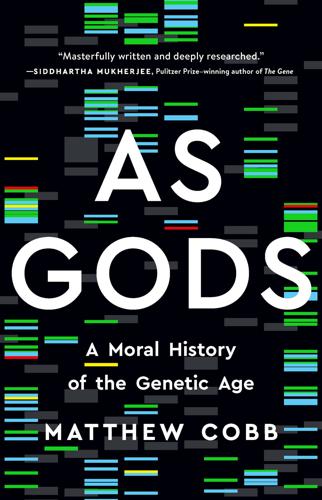
As Gods: A Moral History of the Genetic Age
by
Matthew Cobb
Published 15 Nov 2022
At the turn of the century, Jansen’s group also noticed these odd repeats, and the two groups agreed to come up with a common terminology. They finally settled on the snappy acronym CRISPR to describe the repeated sequences, avoiding Jansen’s alternative of SPIDR (SPacers Interspersed Direct Repeats).19 CRISPR was first used in the scientific literature in 2002, in the same year that it was suggested that nearby CRISPR-associated (or Cas) genes, which appeared to encode enzymes capable of unwinding DNA and cutting it, might be involved in DNA repair in these microbes.20 Email from Ruud Jansen to Francisco Mojica, November 2001, approving the CRISPR acronym. As the CRISPR acronym indicates, these repeated sequences tended to be clustered in the genome, were vaguely palindromic and were regularly interspaced with other stuff.
…
Effectively I was conceding that all of the work we had done with TALENs was now obsolete and should be ignored, and that everyone should start using CRISPR–Cas9 instead… my laboratory never used TALENs again.47 In the middle of 2013 Science magazine announced that scientists were gripped by the CRISPR craze.48 They still are. From 2014 the number of publications on CRISPR far outstripped those on those gene editing has-beens, TALENs and zinc finger nucleases, increasing exponentially and passing 7,000 papers in 2021. Exactly as hoped, CRISPR proved a game-changer, allowing genetic manipulation of any organism. The precise details of the system continue to evolve as researchers explore the huge range of CRISPR systems to be found in nature, searching for new enzymes or new hints of how even greater ease and precision might be obtained.
…
Even if the inclusion of the phrase was an error, it raises questions about whether the participants in the project fully understood what they were signing up to. 42 National Academies of Sciences, Engineering, and Medicine (2017), Human Genome Editing: Science, Ethics, and Governance (Washington, DC, The National Academies Press. 43 Ibid., p. 188. 44 Ibid., p. 189. 45 Kaiser, J. (2017), Science 355:675. 46 Ibid. 47 Nuffield Council on Bioethics (2018), Genome Editing and Human Reproduction: Social and Ethical Issues (London, Nuffield Council on Bioethics). 48 Anonymous (2018), Nature Medicine 24:1081. 49 This and subsequent quotes from Gregorowius, D., et al. (2017), EMBO Reports 18:355–8. 50 Baylis, Altered Inheritance, pp. 135–6. 51 New York Times, 23 January 2019. 52 Cohen, J. (2019), Science 365:430–7, p. 433. 53 Regalado, A. (2018), MIT Technology Review, 25 November 2018; Washington Post, 26 November 2018; The He Lab (2018), https://www.youtube.com/watch?v=th0vnOmFltc 54 Davies, K. (2020), Editing Humanity: The CRISPR Revolution and the New Era of Genome Editing (New York, Pegasus), p. 237. 55 Greely, CRISPR People, p. 100. 56 Yong, E. (2018), The Atlantic, 15 December 2018. https://www.theatlantic.com/science/archive/2018/12/15-worrying-things-about-crispr-babies-scandal/577234/; Ryder, S. (2018), CRISPR Journal 1:355–7. 57 Davies, Editing Humanity; Greely, H. (2019), Journal of Law and the Biosciences 13:111–183; Greely, CRISPR People. 58 Greely (2019), p. 113. 59 Genetic Dreams, Genetic Nightmares (BBC Radio, 2021), episode 3: https://www.bbc.co.uk/sounds/play/m000ycvv 60 Wang, C., et al. (2019), Lancet 393:25–6. 61 Yi, L. (2018), https://www.yicai.com/news/100067069.html (in Chinese). 62 Wang et al. (2019); Zhang, B., et al. (2019), Lancet 393:25; Zhang, L., et al. (2019), Lancet 393:26–7. 63 Cohen, J. (2019), Science 8 May 2019, http://doi.org/10.1126/science.aax9733 64 Cyranoski, D. (2020), Nature 577:154–5. 13 Aftermath 1 Nie, J.

Warnings
by
Richard A. Clarke
Published 10 Apr 2017
Charpentier, a French scientist working at Umea University in Sweden, was studying the genome of flesh-eating bacteria. She and her colleagues had been investigating the process by which bacterial CRISPR sequences, coupled to a CRISPR-associated (Cas) protein, protect the cell from viral invasion. Charpentier hoped to recruit the well-known structural microbiologist to their effort and tease out the structure of the CRISPR/Cas complex. Dr. Doudna agreed. After about a year’s work, Doudna and Charpentier’s teams had determined that in a specific type of CRISPR/Cas system, type-II, two strands of RNA copied from the bacteria’s genetic material combine with a protein referred to as Cas9.
…
Professor Doudna and the others in attendance saw their Napa conference as a prelude to a broader international and public dialogue on the practical, ethical, social, and legal implications of CRISPR. The two-page commentary they published called for a worldwide moratorium on any use of CRISPR for human germ-line editing. But to inform more robust consideration of CRISPR’s potential and risks, they also encouraged the continuation and expansion of ongoing basic research that might one day be applicable to engineering human genetics. Just as significantly, the Napa group called for better communication and discussion about CRISPR. Doudna, Berg, Baltimore, and the other attendees believed that an open and frank discussion among the public, scientists, legal experts, bioethicists, and other stakeholders was necessary to tackle these issues.
…
Because suppose somebody like Hitler had access to this—we can only imagine the kind of horrible uses he could put it to.”22 CRISPR might be the key to one day curing formerly terminal or life-altering diseases, but what about other traits: Asperger’s, a tendency to overeat, or even an introverted personality? We are entering an era where CRISPR will be used to splice genes into embryos to improve IQ, select for taller children, and enhance athletic prowess. CRISPR will very likely, one day soon, give parents the option of choosing the color of their children’s eyes, skin, and hair. The sequencing of the human genome coupled with the power of CRISPR/Cas9 has brought eugenics forward from an uncomfortable fiction.
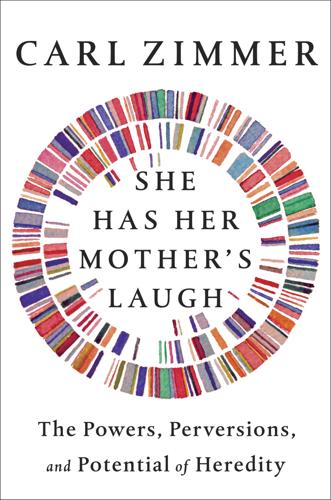
She Has Her Mother's Laugh
by
Carl Zimmer
Published 29 May 2018
It typically took eighteen months to create a line of mice, and often it took more than one try to get the mouse right. Now, with CRISPR, Jaenisch needed only five months to get the job done. * * * — I was working as a reporter during those frenzied years, and I did my best to keep up with CRISPR’s advances. But very soon the parade of CRISPR animals became a stampede. Scientists were altering the DNA of zebrafish and butterflies, of beagles and pigs. By 2014, it dawned on me that I was witnessing the beginning of something enormous. Biologists began speaking about their life before and after CRISPR. But I didn’t truly appreciate what CRISPR meant to scientists until I returned to Cold Spring Harbor one early spring day to spend an afternoon in a giant greenhouse with cathedral-like ceilings made of glass.
…
“We realized, ‘Whoa, this could go through the germ line,’” Bier told me. If Gantz mated a CRISPR-carrying fly to an ordinary fly, it could break Mendel’s Law. It would pass down one of its chromosomes that carried its genes for CRISPR, along with the gene that the CRISPR molecules were designed to copy. In the embryos of the second-generation flies, the CRISPR molecules would rewrite its partner chromosome. The result would be that the second generation would not be hybrids, each with a single copy of the CRISPR genes. They would all carry two copies. And the result would be the same when they bred with ordinary flies, too.
…
Before long, scientists were starting to use CRISPR to replace stretches of genes with new sequences. Along with the Cas9 enzymes and RNA guides, the researchers would deliver small pieces of DNA to cells. After the enzymes cut out a section of DNA, the cells would patch the new pieces into the gap. CRISPR was a drastic improvement on both X-ray mutagenesis and restriction enzymes. CRISPR did not introduce random mutations like mutagenesis. Nor was it limited to inserting an existing gene from one species into another. Since researchers were now able to synthesize short pieces of DNA from scratch, CRISPR could potentially let them make any sort of change they wanted to any species’ own genes.

Hacking the Code of Life: How Gene Editing Will Rewrite Our Futures
by
Nessa Carey
Published 7 Mar 2019
‘Discovery and Seminal Developments in the CRISPR Field’. In: Barrangou R., Van Der Oost J. (eds). CRISPR-Cas Systems (2013); Springer, Berlin, Heidelberg. 5. Mojica, F.J., Díez-Villaseñor, C., García-Martínez, J. et al. J. Mol. Evol. (2005); 60: 174. https://doi.org/10.1007/s00239-004-0046-3 6. For an interesting but rather partial review see: Lander, E.S. ‘The Heroes of CRISPR’. Cell (14 January 2016); 164(1–2): 18–28. 7. Rodolphe Barrangou, Christophe Fremaux, Hélène Deveau, Melissa Richards, Patrick Boyaval, Sylvain Moineau, Dennis A. Romero, Philippe Horvath. ‘CRISPR Provides Acquired Resistance Against Viruses in Prokaryotes’.
…
So what choice do we really have but to embrace it and use it well, to create a safer, more equal world for all? Notes 1. https://www.scientificamerican.com/article/disputed-crispr-patents-stay-with-broad-institute-u-s-panel-rules/ 2. https://www.bionews.org.uk/page_138455 3. https://www.the-scientist.com/the-nutshell/epo-revokes-broads-crispr-patent-30400 4. https://www.statnews.com/2016/08/16/crispr-patent-fight-legal-bills-soaring/ 5. https://www.fiercebiotech.com/biotech/editas-commits-125m-to-broad-secure-source-genome-editing-inventions 6. Lander, E.S. ‘The Heroes of CRISPR’. Cell (14 January 2016); 164(1–2): 18–28. 7. https://www.scientificamerican.com/article/the-embarrassing-destructive-fight-over-biotech-s-big-breakthrough/ 8. https://www.scientificamerican.com/article/the-embarrassing-destructive-fight-over-biotech-s-big-breakthrough/ 9. https://www.statnews.com/2018/05/31/crispr-scientists-kavli-prize-nanoscience/ 10. https://breakthroughprize.org/Laureates/2/P1/Y2015 11. https://gruber.yale.edu/prize/2015-gruber-genetics-prize 12. https://gairdner.org/2016-canada-gairdner-award-winners/ 13. https://www.nobelprize.org/prizes/medicine/2012/press-release/ * A partner of Harvard University and the Massachusetts Institute of Technology.
…
‘Efficient genome editing in plants using a CRISPR/Cas system’. Cell Res. (2013); 23: 1229–1232. 14. Li, J., Norville, J.E., Aach, J., McCormack, M., Zhang, D., Bush, J., et al. ‘Multiplex and homologous recombination-mediated genome editing in Arabidopsis and Nicotiana benthamiana using guide RNA and Cas9’. Nat. Biotechnol. (2013); 31: 688–691. 15. Xie, K., and Yang, Y. ‘RNA-guided genome editing in plants using a CRISPR/Cas system’. Mol. Plant (2013); 6: 1975–1983. 16. Gil, L., et al. ‘Phylogeography: English elm is a 2,000-year-old Roman clone’. Nature (28 October 2004); 431: 1053. 17. Waltz, E. ‘Gene-edited CRISPR mushroom escapes US regulation’.
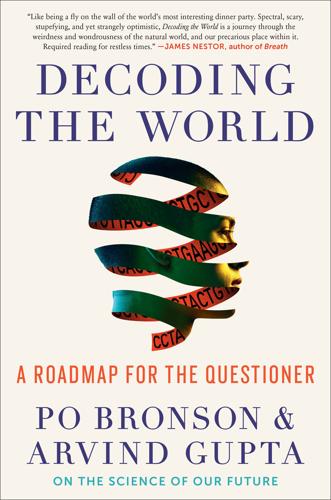
Decoding the World: A Roadmap for the Questioner
by
Po Bronson
Published 14 Jul 2020
Don’t be a sheep or this will happen to you. 5 Mail-Order CRISPR Kits Allow Absolutely Anyone to Hack DNA Scientific American CRISPR wasn’t the first way to edit the genome, just like the Apple Macintosh wasn’t the first computer. But there was something about CRISPR’s ease of use (at least the way it was portrayed in the media) that made it seem like it would lead to this great mass democratization of gene editing—the biological equivalent of every home having a desktop computer connected to the internet. Rather quickly, there were reports of high schoolers doing CRISPR in biology class. Plenty of people found this inherently scary.
…
Both institutions are fighting to the death over the rights to CRISPR for a simple reason: cash money. Billions of dollars of licensing royalties are at stake. And the reputations of their hallowed institutions. This East Coast versus West Coast showdown makes Tupac versus Biggie look small. Even if the two sides in the patent case settled their dispute, CRISPR wouldn’t be available to everyone to use. You may think everyone can use CRISPR and just pay a royalty, but that’s not how it works. A small group of companies paid licensing fees to each patent holder for exclusive rights to use CRISPR in certain domains—therapeutics, diagnostics, agriculture, and the like.
…
This distracts them from full product development and getting to market as soon as they could without the fight. There are only two uses of CRISPR approved in humans. One is for inherited blindness—CRISPR works in the eye because the eye is not defended by an immune system (which anywhere else in the body would attack CRISPR). The second is for spinal muscular atrophy, the leading genetic cause of death for infants. But the treatment damages the liver, as the liver tries to clear the virus from the body. We have funded a few companies that use CRISPR technology for different applications. Dahlia is a diagnostics company that uses a modified version of Cas9, also invented by the Doudna lab, to glow when it binds to RNA.
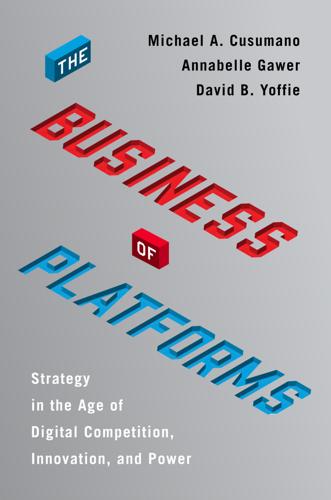
The Business of Platforms: Strategy in the Age of Digital Competition, Innovation, and Power
by
Michael A. Cusumano
,
Annabelle Gawer
and
David B. Yoffie
Published 6 May 2019
We also acknowledge assistance from Gigi Hirsch and David Fritsche of the MIT Center for Biomedical Innovation. 32.Carl Zimmer, “Breakthrough DNA Editor Born of Bacteria,” Quanta, February 6, 2015. 33.McKinsey & Company, “Realizing the Potential of CRISPR,” January 2017, https://www.mckinsey.com/industries/pharmaceuticals-and-medical-products/our-insights/realizing-the-potential-of-crispr (accessed June 6, 2018). 34.Michael Specter, “How the DNA Revolution Is Changing Us,” National Geographic, August 2016. 35.Gina Kolata and Pam Belluck, “Why Are Scientists So Upset About the First Crispr Babies?” New York Times, December 5, 2018. 36.Samantha Zyontz, “Running with (CRISPR) Scissors: Specialized Knowledge and Tool Adoption,” Technological Innovation, Entrepreneurship, and Strategic Management Research Seminar, MIT Sloan School of Management, October 22, 2018. 37.See AddGene, “CRISPR Plasmids and Resources,” https://www.addgene.org/crispr/ (accessed October 19, 2018). 38.See Antonio Regalado, “Start-up Aims to Treat Muscular Dystrophy with CRISPR,” MIT Technology Review, February 27, 2017; and Editas Medicine, “Our Pipeline,” http://www.editasmedicine.com/pipeline (accessed June 14, 2018). 39.Amirah Al Idrus, “Feng Zhang and David Liu’s Base-Editing CRISPR Start-up Officially Launches with $87 Million,” FierceBiotech.com, May 14, 2018. 40.Kashyap Vayas, “New CRISPR-based Platform Could Soon Diagnose Diseases from the Comfort of Your Home,” Science, April 29, 2018; and Megan Molteni, “A New Start-up Wants to Use CRISPR to Diagnose Disease,” Wired, April 26, 2018. 41.
…
New York Times, December 5, 2018. 36.Samantha Zyontz, “Running with (CRISPR) Scissors: Specialized Knowledge and Tool Adoption,” Technological Innovation, Entrepreneurship, and Strategic Management Research Seminar, MIT Sloan School of Management, October 22, 2018. 37.See AddGene, “CRISPR Plasmids and Resources,” https://www.addgene.org/crispr/ (accessed October 19, 2018). 38.See Antonio Regalado, “Start-up Aims to Treat Muscular Dystrophy with CRISPR,” MIT Technology Review, February 27, 2017; and Editas Medicine, “Our Pipeline,” http://www.editasmedicine.com/pipeline (accessed June 14, 2018). 39.Amirah Al Idrus, “Feng Zhang and David Liu’s Base-Editing CRISPR Start-up Officially Launches with $87 Million,” FierceBiotech.com, May 14, 2018. 40.Kashyap Vayas, “New CRISPR-based Platform Could Soon Diagnose Diseases from the Comfort of Your Home,” Science, April 29, 2018; and Megan Molteni, “A New Start-up Wants to Use CRISPR to Diagnose Disease,” Wired, April 26, 2018. 41.“CRISPR Company Cofounded by Jennifer Doudna Comes Out of Stealth Mode,” Genome Web, April 26, 2018, https://www.genomeweb.com/business-news/crispr-company-cofounded-jennifer-doudna-comes-out-stealth-mode#.WxgKnVVKicM (accessed June 6, 2018). 42.David Cyranoski, “CRISPR Alternative Doubted,” Nature, August 11, 2016, 136–37. 43.Labiotech editorial team, “The Most Important Battle in Gene Editing: CRISPR Versus TALEN,” Labiotech, March 13, 2018, https://labiotech.eu/features/crispr-talen-gene-editing/ (accessed October 22, 2018); and Michael Boettcher and Michael T.
…
“CRISPR Company Cofounded by Jennifer Doudna Comes Out of Stealth Mode,” Genome Web, April 26, 2018, https://www.genomeweb.com/business-news/crispr-company-cofounded-jennifer-doudna-comes-out-stealth-mode#.WxgKnVVKicM (accessed June 6, 2018). 42.David Cyranoski, “CRISPR Alternative Doubted,” Nature, August 11, 2016, 136–37. 43.Labiotech editorial team, “The Most Important Battle in Gene Editing: CRISPR Versus TALEN,” Labiotech, March 13, 2018, https://labiotech.eu/features/crispr-talen-gene-editing/ (accessed October 22, 2018); and Michael Boettcher and Michael T. McManus, “Choosing the Right Tool for the Job: RNAi, TALEN, or CRISPR,” Molecular Cell 58, no. 4 (May 21, 2015): 575–85, https://www.ncbi.nlm.nih.gov/pmc/articles/PMC4441801/ (accessed October 23, 2018). 44.Eric Lander, “The Heroes of CRISPR,” Cell, January 14, 2016. 45.Carl Zimmer, “What Is a Genetically Modified Crop?
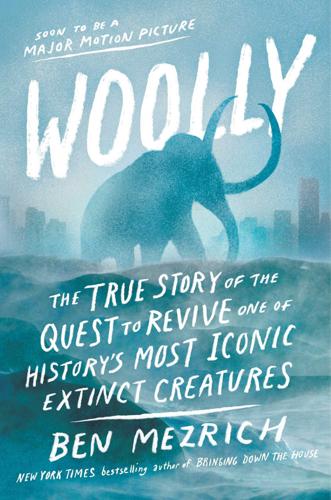
Woolly: The True Story of the Quest to Revive History's Most Iconic Extinct Creature
by
Ben Mezrich
Published 3 Jul 2017
Before she realized what she was doing, Luhan had launched into a monologue about her own philosophies of scientific engineering, colored by the work she and the Revivalists were doing. “I think we are often stupid in the face of nature,” she said, knowing that her English competency was still trailing behind her ideas. “For instance, we didn’t invent CRISPR, nature invented CRISPR—it was a bacteria’s natural way to defend against viruses. That’s all CRISPR is, a natural mechanism of defense that we’ve borrowed and turned into a tool for genetic engineering. Before CRISPR, our own efforts to edit DNA were so cumbersome, so time-consuming. Then nature gave us an elegant solution.” A line of people had formed behind Thiel, trying to edge into the man’s orbit, but he didn’t cut her off, so she continued.
…
Because the process by which they would place those genes into the elephant’s living cell represented one of the most important developments in modern science. CRISPR—“clustered regularly interspaced short palindromic repeats”—was a scientific breakthrough that revolutionized genetic biology. A new method of editing large numbers of genes simultaneously, it had jumped onto the scene just six months earlier, through a pair of papers published in Science magazine, one of which had come from George Church and the Church Lab itself (including Luhan), plus three other papers in the same month. Multiple labs claimed credit for having invented CRISPR. Luhan, Bobby, and Margo had come of age as scientists using CRISPR, and they understood it as well as anyone.
…
Luhan, Bobby, and Margo had come of age as scientists using CRISPR, and they understood it as well as anyone. Quinn worked with CRISPR every day, and in fact often volunteered to speak at local high schools, because he knew, as complex as the science behind CRISPR might be, it was such an important tool that everyone should have at least a basic understanding of how it worked. Over the past few months, he had tried to come up with simple ways to explain what was essentially now the primary tool in genetic engineering. With high school students, he started with the basics. Every cell in every living creature contained a copy of the creature’s genome—the double strands of DNA, made up of billions of base pairs of molecules, that coded for every trait or characteristic that made the creature what it was.

Under a White Sky: The Nature of the Future
by
Elizabeth Kolbert
Published 15 Mar 2021
This dream has now been realized, and then some, thanks to CRISPR. In bacteria, which might be said to hold the original patent on the technology, CRISPR functions as an immune system. Bacteria that possess a “CRISPR locus” can incorporate snippets of DNA from viruses into their own genomes. They use these snippets, like mug shots, to recognize potential assailants. Then they dispatch CRISPR-associated, or Cas, enzymes, which work like tiny knives. The enzymes slice the invaders’ DNA at critical locations, thus disabling them. Genetic engineers have adapted the CRISPR-Cas system to cut pretty much any DNA sequence they wish.
…
In the last decade or so, genetic engineering has undergone its own transformation, thanks to CRISPR. CRISPR is shorthand for a suite of techniques—most of them borrowed from bacteria—that make it vastly easier for researchers and biohackers to manipulate DNA. (The acronym stands for “clustered regularly interspaced short palindromic repeats.”) CRISPR allows its users to snip a stretch of DNA and then either disable the affected sequence or replace it with a new one. The possibilities that follow are pretty much endless. Jennifer Doudna, a professor at the University of California, Berkeley and one of the developers of CRISPR, has put it like this: we now have “a way to rewrite the very molecules of life any way we wish.”
…
Jennifer Doudna, a professor at the University of California, Berkeley and one of the developers of CRISPR, has put it like this: we now have “a way to rewrite the very molecules of life any way we wish.” With CRISPR, biologists have already created, among many, many other living things: ants that can’t smell, beagles that grow superhero-like muscles, pigs that resist swine fever, macaques that suffer from sleep disorders, coffee beans that contain no caffeine, salmon that don’t lay eggs, mice that don’t get fat, and bacteria whose genes contain, in code, Eadweard Muybridge’s famous series of photographs showing a racehorse in motion. A few years ago, a Chinese scientist, He Jiankui, announced that he had produced the world’s first CRISPR-edited humans—twin baby girls. According to He, the girls’ genes had been tweaked to confer resistance to HIV, though whether this is actually the case remains unclear.

Falter: Has the Human Game Begun to Play Itself Out?
by
Bill McKibben
Published 15 Apr 2019
Allowing any form of human germline modification leaves the way open for all kinds—especially when fertility clinics start offering ‘genetic upgrades’ to those able to afford them.”23 In fact, given that PGD already lets you deal with disease, CRISPR may well end up being less about saving cute babies from genetic illness and more about “improvement.” Jennifer Doudna tells a startling story: Not long after news emerged of her CRISPR breakthrough, one of the PhD students in her lab, Sam Sternberg, got an email “from an entrepreneur I’ll call Christina. She wanted to know if Sam would be interested in being part of her new company, which somehow involved CRISPR, and she asked him to meet so she could pitch her business idea.” When Sam and Christina sat down “at an upscale Mexican restaurant near campus,” she began “speaking passionately over cocktails” about how she hoped her business would offer “some lucky couple the first healthy ‘CRISPR baby,’” with “customized DNA mutations, installed via CRISPR, to eliminate any possibility of genetic disease.”
…
When Sam and Christina sat down “at an upscale Mexican restaurant near campus,” she began “speaking passionately over cocktails” about how she hoped her business would offer “some lucky couple the first healthy ‘CRISPR baby,’” with “customized DNA mutations, installed via CRISPR, to eliminate any possibility of genetic disease.” As she tried to lure him aboard, she stressed that she wanted him to work only on diseases, but he was so rattled that he “excused himself before dessert.” He’d perceived a “Promethean glint in her eyes and suspected she had in mind other, bolder genetic enhancements.”24 The important thing, Doudna stressed, was that CRISPR had in fact opened the door to precisely such enhancements. “Had this conversation occurred just a few years earlier, Sam and I would have dismissed Christina’s proposal as pure fantasy,” she said.
…
As Michael West, the CEO of Advanced Cell Technology, said, “The dream of biologists is to have the sequence of DNA, the programming code of life, and to be able to edit it the way you can a document on a word processor.”2 As you can tell from the archaic use of the term word processor, he said this quite a while ago—in 2000, to be exact. But then CRISPR happened. First, Japanese scientists noticed something odd about some bacteria they were studying: regularly repeating sequences of DNA whose “biological significance is unknown.” They called them “clustered regularly interspaced short palindromic repeats,” or CRISPR, pronounced like the drawer in your refrigerator where you leave your produce until it wilts. It turned out that they were actually part of the bacteria’s immune system.
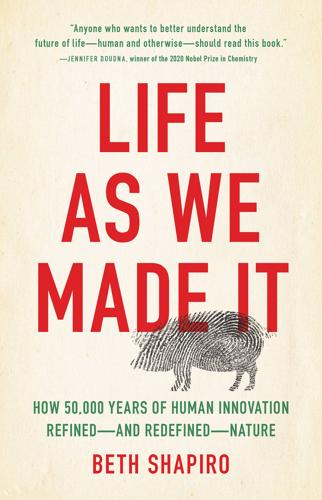
Life as We Made It: How 50,000 Years of Human Innovation Refined--And Redefined--Nature
by
Beth Shapiro
Published 15 Dec 2021
These repeated sequences, now known as clustered regularly interspaced short palindromic repeats, or CRISPR, are part of a system that evolved in bacteria to help them evade viral attack. Doudna and Charpentier discovered how to harness this system to edit genomes and, in 2020, won the Nobel Prize in chemistry for these discoveries. In the CRISPR system, the palindromic repeats separate short fragments of DNA that match viruses that infected the bacteria in the past. Together with other molecules encoded by the bacterial genome (CRISPR-associated, or Cas, proteins), these short DNA fragments make up an adaptable bacterial immune system.
…
When an edited male breeds with a wild-type female, their offspring will initially be heterozygous; they will inherit the edited allele from their dad and the wild-type allele from their mom. But during the early stages of development, the CRISPR components in the edited allele will be transcribed—made by the cell—along with all the other proteins that the cell needs to function. Those CRISPR components will then find, cut, and edit the wild-type allele inherited from mom, transforming it into the edited allele. All offspring become homozygous for the edited allele. And since both chromosomes now have the edited allele (and CRISPR), the same thing will happen when those individuals mate with wild-type individuals. And the same thing will happen in the next generation.
…
The guide sequence would then bind to the matching PG gene sequence and Cas9 would cut the DNA, just as Fok1 cuts DNA in ZFNs and TALENs. Unlike ZFNs and TALENs, however, CRISPR guide sequences are cheap to make and easy to design since they’re made of RNA letters rather than engineered protein complexes. They’re also smaller and somewhat simpler to deliver into the cell. And they are more flexible. Since their original description, other Cas proteins have been discovered that do different things, such as cut only one strand of DNA or bind to the DNA and stay there without cutting, suppressing expression of the gene. With CRISPR-based gene editing tools, everyone can be a genome engineer. Programmable DNA-cutting technologies changed the landscape of genetic engineering.

The Coming Wave: Technology, Power, and the Twenty-First Century's Greatest Dilemma
by
Mustafa Suleyman
Published 4 Sep 2023
GO TO NOTE REFERENCE IN TEXT CRISPR use cases are multiplying Michael Le Page, “Three People with Inherited Diseases Successfully Treated with CRISPR,” New Scientist, June 12, 2020, www.newscientist.com/article/2246020-three-people-with-inherited-diseases-successfully-treated-with-crispr; Jie Li et al., “Biofortified Tomatoes Provide a New Route to Vitamin D Sufficiency,” Nature Plants, May 23, 2022, www.nature.com/articles/s41477-022-01154-6. GO TO NOTE REFERENCE IN TEXT In the future, it could offer Mohamed Fareh, “Reprogrammed CRISPR-Cas13b Suppresses SARS-CoV-2 Replication and Circumvents Its Mutational Escape Through Mismatch Tolerance,” Nature, July 13, 2021, www.nature.com/articles/s41467-021-24577-9; “How CRISPR Is Changing Cancer Research and Treatment,” National Cancer Institute, July 27, 2020, www.cancer.gov/news-events/cancer-currents-blog/2020/crispr-cancer-research-treatment; Zhihao Zhang et al., “Updates on CRISPR-Based Gene Editing in HIV-1/AIDS Therapy,” Virologica Sinica, Feb. 2022, www.sciencedirect.com/science/article/pii/S1995820X22000177; Giulia Maule et al., “Gene Therapy for Cystic Fibrosis: Progress and Challenges of Genome Editing,” International Journal of Molecular Sciences, June 2020, www.ncbi.nlm.nih.gov/pmc/articles/PMC7313467.
…
Impacts can be enormous: editing germ-line cells that form eggs and sperm, for example, means changes will echo down through generations. After the initial CRISPR paper was published, progress applying it was rapid; the first gene-edited plants were created within a year, the first animals—mice—even before that. CRISPR-based systems with names like Carver and PAC-MAN promise effective prophylactic ways of fighting viruses that, unlike vaccines, don’t trigger an immune response, helping protect us against pandemics of the future. Fields like RNA editing are themselves opening a range of new treatments for conditions like high cholesterol and cancer. New techniques like Craspase, a CRISPR tool working with RNA and proteins rather than DNA, might allow for safer therapeutic interventions than conventional methods.
…
Not only is there the question of how you might coordinate between competing groups, but there’s the fact that at the frontier it’s also impossible to predict where breakthroughs might come from. CRISPR gene editing technology, for example, has its roots in work done by the Spanish researcher Francisco Mojica, who wanted to understand how some single-celled organisms thrive in brackish water. Mojica soon stumbled across repeating sequences of DNA that would be a key part of CRISPR. These clustered repeating sections seemed important. He came up with the name CRISPR. Later work from two researchers at a Danish yogurt company looked at protecting the bacteria vital for starter cultures in the yogurt’s fermentation process.
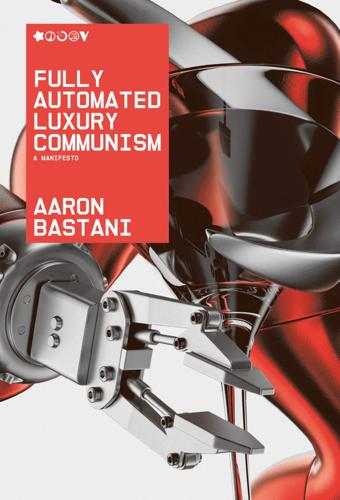
Fully Automated Luxury Communism
by
Aaron Bastani
Published 10 Jun 2019
The Atlantic, 16 September 2015. Extreme Supply in Healthcare: Gene Therapies Beall, Abigail. ‘Genetically-modified Humans: What Is CRISPR and How Does It Work?’ Wired, 5 February 2017. ‘CRISPR Reverses Huntington’s Disease in Mice’. Genetic Engineering and Biotechnology News, 20 June 2017. ‘CRISPR Timeline’. Broad Institute. Cyranoski, David. ‘CRISPR Gene Editing Tested in a Person’. Nature, 24 November 2016. pp. 479. Molteni, Megan. ‘Everything You Need to Know About Crispr Gene Editing’. Wired, 5 December 2017. Regalado, Antonio. ‘First Gene-Edited Dogs Reported in China’. MIT Technology Review, 19 October 2015.
…
As a result experimentation and trials were rare, expensive and slow. That has changed in recent years, however, with the arrival of CRISPR-Cas9. CRISPR is a new approach which reduces the costs of gene editing by 99 per cent while cutting experiment times from months to weeks. While it is yet to be fully perfected and is not always sufficiently precise, CRISPR is a programmable and easy-to-use technique for almost any lab, allowing scientists to edit genetic information with unprecedented efficiency. Just like SpaceX and rocket technology, CRISPR-Cas9 doesn’t permit humans to do anything particularly new. Rather, it illustrates how information wanting to be free disrupts mainstream views about scarcity and makes extreme supply possible.
…
The technique itself is both simple and elegant. That’s because CRISPR, which stands for ‘Clustered Regularly Interspaced Short Palindromic Repeat’, imitates the immune mechanism of bacteria when attacked by a virus in nature. Confronted with such a situation, the bacteria will take strips of the virus’s DNA and insert it into their own using an enzyme called Cas. These newly formed sequences are the CRISPR, which the bacteria then uses to produce RNA copies to recognise viral DNA and repel future attacks. While these processes have been observed and understood since the early 1990s, it wasn’t until 2013 that CRISPR was transformed into a tool suitable for gene-editing.
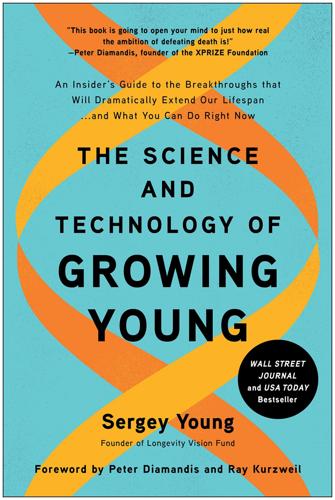
The Science and Technology of Growing Young: An Insider's Guide to the Breakthroughs That Will Dramatically Extend Our Lifespan . . . And What You Can Do Right Now
by
Sergey Young
Published 23 Aug 2021
Perhaps the most consequential aspect of gene sequencing as concerns our Longevity Revolution, however, is that it makes all manner of gene engineering possible. MAKING CRISPR WORK OF GENE EDITING The success of the Human Genome Project has empowered us to do truly remarkable things with our genes. Once we know what genes are located where and what characteristics and functions each is responsible for, it is possible to target and repair genes that are malfunctioning, such as we saw with Victoria Gray and her sickle-cell anemia. How this works is so remarkable that it really reads like science fiction. And it starts with a kind of immune system of bacteria called CRISPR-Cas9. Why do bacteria need immune systems at all?
…
In both cases, the host becomes a ticking time bomb, bent on doing the virus’s bidding. But bacteria have long memories. They keep a careful record of these infections. When a similar virus comes around to cause trouble, the bacteria is ready—with a series of DNA sequences called clustered regularly interspaced short palindromic repeats (CRISPR). This CRISPR record alerts the bacteria to the invader and sets its defenses in motion. Like the protagonist in a Hollywood action film, a protein called Cas9 arrives to defuse the virus. Cas9 seeks out a specific part of the virus DNA and cuts it before it can achieve its nefarious goals, just like a bomb disposal expert cutting the precise wire necessary to prevent an explosion.
…
In 2012, Doudna and Charpentier released a revolutionary paper in Science magazine announcing to the world that Cas9 could be “programmed” to cut any sequence of DNA desired. The scientific community immediately recognized the revolutionary possibilities of this technology: in 2013, a young Chinese American biochemist by the name of Feng Zhang managed to adapt CRISPR for mouse and human cells in a petri dish. Genomic luminary and Harvard professor George Church, whose contributions to the field are too numerous to recount here, used CRISPR-Cas9 to edit human stem cells. Soon, scientists were deleting, adding, and changing human genes as if they were merely notes on lines of sheet music! Some of these projects seem frivolous on the surface—glow-in-the-dark rabbits, frogs, dogs, and pigs, for example.

The Future Is Faster Than You Think: How Converging Technologies Are Transforming Business, Industries, and Our Lives
by
Peter H. Diamandis
and
Steven Kotler
Published 28 Jan 2020
Since then, though, the price has plummeted: “DNA Sequencing Costs: Data.” Genome.gov, See: https://www.genome.gov/about-genomics/fact-sheets/DNA-Sequencing-Costs-Data. Today, sequencing a human genome takes a few days: Ibid. CRISPR-Cas9, for example: “CRISPR 2.0: Genome Engineering Made Easy as A-B-C,” November 5, 2017. Hardvard.edu, See: http://sitn.hms.harvard.edu/flash/2017/crispr-2-0-genome-engineering-made-easy-b-c/. scientists at Harvard unveiled CRISPR 2.0: Eric S. Lander, “The Heroes of CRISPR,” Cell, January 14, 2016, pp. 18–28. See: https://www.cell.com/cell/fulltext/S0092-8674(15)01705-5?_returnURL=https%3A%2F%2Flinkinghub.elsevier.com%2Fretrieve%2Fpii%2FS0092867415017055%3Fshowall%3-Dtrue.
…
David Liu, the Harvard chemical biologist who led the work, told the LA Times: Deborah Netburn, “New Gene-Editing Technique May Lead to Treatment for Thousands of Diseases,” LA Times, October 25, 2017. See: https://www.latimes.com/science/sciencenow/la-sci-sn-dna-gene-editing-20171025-story.html. Human germline engineering is another CRISPR application: Antonion Regalado, “EXCLUSIVE: Chinese Scientists Are Creating CRISPR Babies,” MIT Review, November 25, 2018. See: https://www.technologyreview.com/s/612458/exclusive-chinese-scientists-are-creating-crispr-babies/. See also: Heidi Ledford, “CRISPR Babies: When Will the World Be Ready?,” Nature, June 19, 2019, https://www.nature.com/articles/d41586-019-01906-z. There’s also stem cells to consider: “Stem Cell Information,” National Institutes of Health.
…
Gene therapy replaces defective or missing DNA inside a cell, gene-editing techniques like CRISPR-Cas9 allow you to repair the DNA inside that cell, and stem cell therapies replace that cell entirely. Thanks to faster genomic sequencing, all of these interventions are now hitting the market. CRISPR-Cas9, for example, has become our leading weapon in the fight against genetic diseases. Technically, it’s an engineering tool that allows us to target precise locations in the gene code and then rewrite that DNA. Want to remove the string of DNA that produces muscular dystrophy? Simple. Just target that spot in the genome, unleash CRISPR-Cas9, and snip, snip, snip—problem solved.
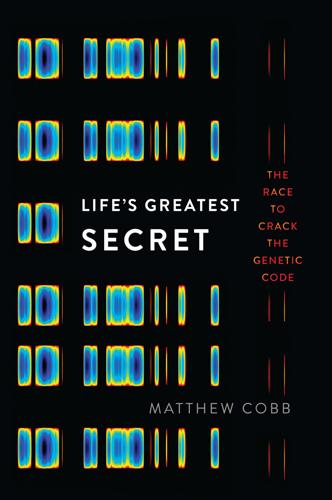
Life's Greatest Secret: The Race to Crack the Genetic Code
by
Matthew Cobb
Published 6 Jul 2015
A total novice in my lab got it to work.47 If patent issues can be overcome – the Broad Institute, jointly run by MIT and Harvard, has successfully obtained a patent on CRISPR, and the two main inventors of the technique, Charpentier and Doudna, have also filed patents – then this technique could transform biology and medicine.48 Already, Doudna has extended the power of CRISPR to be able to alter RNA, thereby enabling finely tuned detection and manipulation of mRNA.49 Whatever happens next, I would bet that Charpentier and Doudna will eventually receive that telephone call from Stockholm. A glimpse of the radical implications of CRISPR is given by the suggestion from a group of Harvard researchers that CRISPR could be used to potentially ‘prevent the spread of disease, support agriculture by reversing pesticide and herbicide resistance in insects and weeds, and control damaging invasive species’.50 None of the researchers were ecologists, but they sounded the alarm about potential side-effects, and simultaneously published a call for discussion about how to regulate the new technology, coming up with criteria that should be adhered to before the implementation of any such programme, and also identifying regulatory gaps that need to be filled by legislators around the globe.51 In January 2015, the same group of Harvard researchers came up with an ingenious technofix for ensuring that GMOs with potentially problematic modifications do not cause havoc in the environment – a group from Yale simultaneously published a similar report.
…
In 2012, Emmanuelle Charpentier and Jennifer Doudna, then based at Umeå University in Sweden and the Howard Hughes Medical Institute at Berkeley, announced that they had found out how to harness this system to change any DNA sequence.44 Within a year, CRISPR was being used to genetically manipulate DNA from a wide range of organisms, including humans.45 The principle is straightforward: the Cas9 enzyme is introduced into a cell along with a piece of synthetic RNA containing CRISPR sequences interspersed with a sequence from a gene that you are interested in rather than a bit of viral DNA. The Cas9 enzyme looks for that sequence, finds it in the genomic DNA of your organism, and snips it out. The gene of interest has either been disabled, or, if you combine CRISPR with other techniques, altered in some way.
…
This approach is called directed mutation – targeting a particular gene in a predetermined way – and will apparently be available in virtually any organism; it is even possible to correct mistakes in the DNA sequence, such as occur in genetic diseases.46 Although the technique is in its early days, it is clearly going to revolutionise scientific discovery and may lead to the development of new gene therapies. CRISPR looks like it will be far more effective and flexible than the previous tool of choice, RNAi (RNA interference). RNAi is based on a naturally-occurring mechanism of gene regulation that is of fundamental importance in our cells, in which short strands of RNA that complement the mRNA from a particular gene, together with a complex of proteins, block the activity of the gene by binding to its mRNA. On hearing of the CRISPR breakthrough, Craig Mello, who with Andrew Fire won the 2006 Nobel Prize in Physiology or Medicine for the discovery of RNAi, described his reaction: CRISPR is absolutely huge.
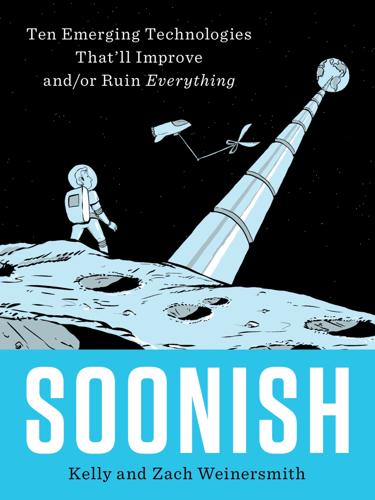
Soonish: Ten Emerging Technologies That'll Improve And/or Ruin Everything
by
Kelly Weinersmith
and
Zach Weinersmith
Published 16 Oct 2017
What if we could just fix the damaged code in all the right cells? In the last chapter, we discussed a new gene-editing technique called CRISPR-Cas9. It may allow scientists to actually fix the mutations causing cystic fibrosis in patients with the disease. In case you have already managed to forget what CRISPR does, the short version is that we can now precisely snip out and replace parts of DNA in cells. In principle, this should mean we can snip and fix whatever mutations are causing cystic fibrosis in a living person. CRISPR has already worked in slabs of intestinal tissue in the lab, which gives you some idea about how fun medical lab work is.
…
Even if they’re carefully engineered, there might be some risk of a mutation that makes them dangerous. But, as Dr. Silver notes, dangerous mutations are already a possibility with the nonsynthetic bacteria inhabiting your body. In the next chapter we discuss using CRISPR-Cas9 to fix genetic disorders in human beings. Most of us are cool with the idea of using the techniques of synthetic biology to cure diseases in adults, but some scientists are also proposing using CRISPR-Cas9 to cure diseases in human embryos, making changes that would be passed on to subsequent generations. There are some who argue that the benefits outweigh the risks. But where would we stop?
…
Figuring out how to apply the technique in actual patients is still a big hurdle, and scientists are worried that we might mess up other parts of the genome while trying to fix the mutations. When you’re editing a trillion cells at once, you don’t want to have too many whoopsies. But the cool thing about CRISPR is that it’s a general tool for fixing genetic disorders. Any disease that is caused by one or more genetic mutations should be vulnerable to this method of targeted gene edits. If CRISPR ends up being a silver bullet for gene problems, you could fire it at Huntington’s disease, sickle cell anemia, Alzheimer’s disease, and more. Cancer Diagnosis, Treatment, and Monitoring DIAGNOSIS Cancer cells are hard to kill for the same reason secret androids are going to be hard to kill in the Robot Uprising of 2027: They look just like us.
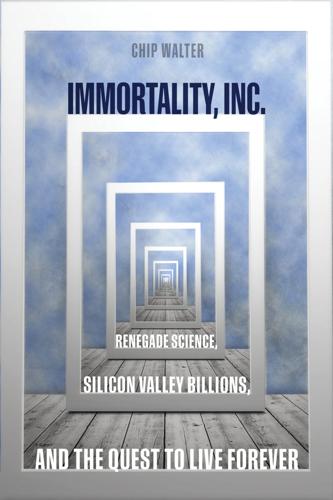
Immortality, Inc.
by
Chip Walter
Published 7 Jan 2020
He was co-founder of Harvard’s vaunted Wyss Institute, a member of the National Academy of Sciences, and a key player (along with several others) in the development of the gene-editing system Crispr (Clustered Regularly Interspaced Short Palindromic Repeats). When Church spoke, people listened. Still, this was quite a prediction. What excited—and frightened—biologists and policymakers about Crispr was its ability to cheaply and easily edit genes; just go into a string of DNA and change them with hardly more difficulty than scissors snipping a bit of ribbon. Gene editing had been around since Boyer and Cohen invented recombinant DNA technology, but Crispr was easier and more accurate, which also made it cheap—and therefore, potentially, dangerous.
…
Introducing new stem cells into the body of someone with a predisposition to various cancers might actually encourage tumors rather than eliminate them. In some ways, cancer cells were like pluripotent stem cells in that they can replicate indefinitely. Down the road, Crispr technology might fix problems like these with a couple of nicks of the Crispr scissors. But Crispr had its own problems. It could easily change and swap cells, but once the DNA of a pluripotent stem cell is rearranged, that change remains forever and is even passed along to the next generation, just as if evolution and your own parents had provided the DNA.
…
Gene editing had been around since Boyer and Cohen invented recombinant DNA technology, but Crispr was easier and more accurate, which also made it cheap—and therefore, potentially, dangerous. But the way Church saw it, Crispr’s powerful gene-editing capabilities would soon mean a quick death for dying. Levinson wasn’t so sure, and he certainly wasn’t willing to make any predictions. In fact, part of him still wondered if the very idea of this company he was getting involved in might not become a monumental waste of time: a big fat lamp without a genie. After all, hadn’t the human race been trying to outfox the grim reaper from time in memoriam? Levinson didn’t mind if something was difficult, as long as it was possible. Possible could be handled. Complexity was to be expected, even sought out and enjoyed.

Lifespan: Why We Age—and Why We Don't Have To
by
David A. Sinclair
and
Matthew D. Laplante
Published 9 Sep 2019
Sontheimer, “CRISPR Interference Limits Horizontal Gene Transfer in Staphylococci by Targeting DNA,” Science 322, no. 5909 (December 19, 2008): 1843–45, https://www.ncbi.nlm.nih.gov/pmc/articles/PMC2695655/; see also J. Cohen, “How the Battle Lines over CRISPR Were Drawn,” Science, February 17, 2017, https://www.sciencemag.org/news/2017/02/how-battle-lines-over-crispr-were-drawn. 38. M. R. O’Connell, B. L. Oakes, S. H. Sternberg, et al., “Programmable RNA Recognition and Cleavage by CRISPR/Cas9,” Nature 516, no. 7530 (December 11, 2014): 263–66, https://www.ncbi.nlm.nih.gov/pubmed/25274302. 39. L. Cong, F. A. Ran, D. Cox, et al., “Multiplex Genome Engineering Using CRISPR/Cas Systems,” Science 339, no. 6121 (February 15, 2013): 819–23, https://www.ncbi.nlm.nih.gov/pubmed/23287718. 40.
…
COMPLEMENTARY: Describes any two DNA or RNA sequences that can form a series of base pairs with each other. Each base forms a bond with a complementary partner: T (in DNA) and U (in RNA) bond with A, and C bonds with G. CRISPR: Pronounced “crisper.” An immune system found in bacteria and archaea, co-opted as a genome-engineering tool to cut DNA at precise places in a genome. CRISPR, which stands for “clustered regularly interspaced short palindromic repeats,” is a section of the host genome containing alternating repetitive sequences and snippets of foreign DNA. CRISPR proteins such as Cas9, a DNA-cutting enzyme, use these as molecular “mug shots” as they seek out and destroy viral DNA. DAF-16/FOXO: An ally of sirtuins, DAF-16/FOXO is a gene control protein called a transcription factor that activates cell defense genes, upregulation of which extends lifespan in worms, flies, mice, and perhaps humans; required for Daf-2 to extend lifespan in worms.
…
They, too, garnered fame—and some very valuable patents.39 News of the discovery spread quickly down the hall to my lab. It seemed too good to be true—except it was. The technology is colloquially known as CRISPR, for “clustered regularly interspaced short palindromic repeats,” which are the natural DNA targets of Cas9 cutting in bacteria. Cas9, and now dozens of other DNA-editing enzymes from other bacteria, can alter plant genes with accuracy, without using any foreign DNA. They can create exactly the same kind of alterations that occur naturally. Using CRISPR is far more “natural” than bombarding seeds with radiation, a treatment that is not banned. That’s why the decision by the Court of Justice of the European Union in 2018 was so unexpected and upsetting to the United States.

The Driver in the Driverless Car: How Our Technology Choices Will Create the Future
by
Vivek Wadhwa
and
Alex Salkever
Published 2 Apr 2017
And then, in April 2016, yet another group of Chinese researchers reported that it had succeeded in modifying the genome of a human embryo in an effort to make it resistant to HIV infection.10 The scientists used a new technique, the CRISPR-cas9 system, which was developed in the United States by Jennifer Doudna, of UC Berkeley, and Feng Zhang, of M.I.T. Cas9 helps to snip out a piece of DNA from a cell and then enables the cell to stitch the ends back together. It can be used to edit out faulty parts of the DNA. The rough material cost of editing a gene using CRISPR is between $50 and $100. In other words, it’s a lot more expensive to go to an NBA basketball game than to edit a gene or to create a new DNA structure using CRISPR. In the short term, scientists hope to use CRISPR to edit human genes for therapies against cystic fibrosis and other hereditary fatal conditions.
…
See Argus retinal prosthesis Bioterrorism, 131, 136–137 Bladders, bio-printed, 172 Boxtel, Amanda, 170 BRETT (Berkeley Robot for the Elimination of Tedious Tasks), 85–86 Brown, Micah, 95 Brynjolfsson, Erik, 96 209 Cancer, 40–41, 124–127 Car accidents, 148. See also Driverless cars Cell phones, 14–15 Cheney, Dick, 101–102 China, 150, 188 Clearwell (software), 42 Clinton, Hillary, 3 Clustered regularly interspaced short palindromic repeats. See CRISPR-cas9 system Computers in the classroom, 53–54 Concorde, 8 Copyright laws, 29 CRISPR-cas9 system, 133–135 Crohn’s disease, 130 Cyber attacks, 103–104, 164, 174. See also Hacking Cybersecurity, 101–103. See also Hacking; Internet of Things all your weaknesses, in one place, 106–107 citizens caught in the cyber crossfire, 102–105 the race to make it accessible, 108–109 DARPA Robotics Challenge, 87, 88 Data breaches.
…
Regardless, research toward precisely that end is happening all over the world. Although we can’t yet reformat our genomes as we can our hard disks, we are approaching such a capability. Messing with our genetic material is, however, a risky thing. Leading scientists have called for a ban on editing the human genome, citing the enormous risks. The CRISPR’s inventor herself, Jennifer Doudna, has come out strongly in favor of a cautious approach to modifying the human germ line. “The idea that you would affect evolution is a very profound thing,” she said to the New York Times.12 Never before have I advocated slowing down technological development, but, in September 2015, I wrote a column for the Washington Post titled “Why there’s an urgent need for a moratorium on gene editing.”13 I argued that we need to better understand the technologies and develop a consensus on what is ethical before allowing researchers to edit the DNA of human embryos.

I, Warbot: The Dawn of Artificially Intelligent Conflict
by
Kenneth Payne
Published 16 Jun 2021
We now have personalised medicines tailored clinically to the individual genes of patients. And in the last few years, geneticists have started to use CRISPR to engineer human genes. They removed patients’ cells, engineered the defective bit of DNA, and then injected healthy cells back into the body. In one trial the genetic CRISPR scissors were themselves injected directly into the eyeballs of patients with an inherited form of blindness.37 So far, so uncontentious, if not for the squeamish. But in 2018 Chinese scientists caused international controversy by using CRISPR to edit the genes in human embryos which subsequently developed into two baby girls.38 The goal of the edit was to genetically block HIV infection.
…
Princeton, NJ: Princeton University Press, 2018. 36. See Plomin, Robert. Blueprint: How DNA Makes Us Who We Are. London: Penguin, 2019. 37. Ledford, Heidi. ‘CRISPR treatment inserted directly into the body for first time’, Nature 579, no. 7798 (2020): 185–185. 38. Regalado, Antonio, ‘Exclusive: Chinese scientists are creating CRISPR babies’, MIT Technology Review, 25 November 2018, https://www.technologyreview.com/2018/11/25/138962/exclusive-chinese-scientists-are-creating-crispr-babies/. 39. Fu, Rui, Dawei Yu, Jilong Ren, Chongyang Li, Jing Wang, Guihai Feng, Xuepeng Wang et al. ‘Domesticated cynomolgus monkey embryonic stem cells allow the generation of neonatal interspecies chimeric pigs’, Protein & Cell 11, no. 2 (2020): 97–107. 40.
…
Declassified October 2015. https://nsarchive.gwu.edu/nukevault/ebb533-The-Able-Archer-War-Scare-Declassified-PFIAB-Report-Released/2012-0238-MR.pdf. Rawls, John. A Theory of Justice. Boston, MA: Harvard University Press, 2009. Regalado, Antonio. ‘Exclusive: Chinese scientists are creating CRISPR babies’, MIT Technology Review, 25 November 2018, https://www.technologyreview.com/2018/11/25/138962/exclusive-chinese-scientists-are-creating-crispr-babies/. Rid, Thomas. Cyber War Will Not Take Place. New York: Oxford University Press, USA, 2013. Rid, Thomas. Rise of the Machines: The Lost History of Cybernetics. New York: WW Norton, 2016. Robinson, Heath. Heath Robinson’s Second World War.
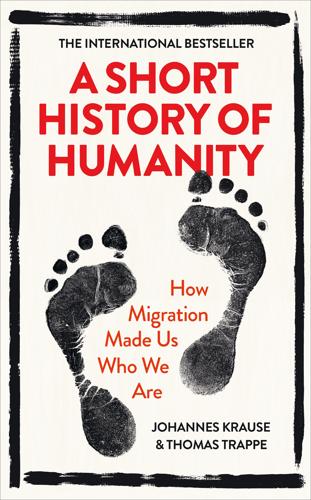
A Short History of Humanity: How Migration Made Us Who We Are
by
Johannes Krause
and
Thomas Trappe
Published 8 Apr 2021
Now we’re facing one of the biggest—if not the biggest—revolution in human history. Decoding the human genome is only the beginning of the road: eventually we will become the first creatures on Earth to take evolution into our own hands. The CRISPR/ Cas9 system was only developed in 2012, but already these “genetic scissors” are a standard tool in gene technology, allowing us to edit the genome of living beings in a precise and targeted way.1 The game-changing nature of CRISPR/Cas9 is also reflected by the fact that Jennifer Doudna and Emmanuelle Charpentier, who discovered the basic principle, received the Nobel Prize for their groundbreaking discovery in 2020.
…
CHAPTER 6: EUROPEANS FIND A LANGUAGE 1.We refer to them as Mycenaens here, even though this term dates from the nineteenth century and we can safely assume they referred to themselves by an entirely different name. CHAPTER 8: THEY BRING THE PLAGUE 1.“Reservoir” is the term for the mammals in which the pathogen primarily lives, and from which it is transmitted to human beings. CHAPTER 10: CONCLUSION 1.CRISPR stands for “clustered regularly interspaced short palindromic repeats.” “Cas9” stands for “CRISPR-associated protein 9.” Sources In the interests of flow, we have avoided using footnotes to reference sources. The following list includes the publications, books, and other sources we drew on for each chapter. A few details in the book are taken from conversations with scientific colleagues, whose assessments and interpretations found their way into the text if they were shared by the authors.
…
Nobody can yet say for sure whether gene editing may not simply eliminate one disease only to replace it with another. We’re still some way off from using genetic scissors as a standard form of treatment, although the first experiments on human stem cells are already under way. In late 2018, Chinese scientist He Jiankui announced the birth of the first gene-edited babies using CRISPR/Cas9. According to He’s own statements, he switched off the CCR5 receptor in twins Lulu and Nana, editing the genome at the embryonic stage, to protect the children from HIV. It was a relatively simple intervention, because the CCR5 gene is well researched. At the same time, there seems little justification for it, because HIV is relatively rare in China and the virus can be effectively controlled through medication—whereas there is no treatment for the potentially deadly West Nile fever, a virus that may be encouraged by a mutation in the CCR5 receptor.
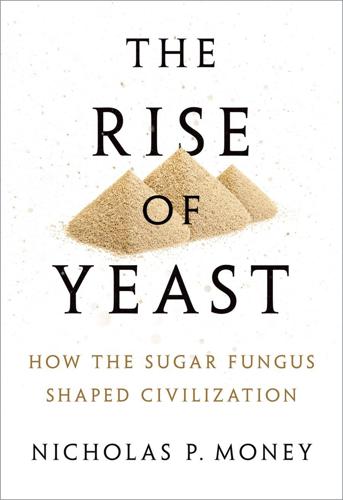
The Rise of Yeast: How the Sugar Fungus Shaped Civilisation
by
Nicholas P. Money
Published 22 Feb 2018
The use of a powerful genetic editing technique called CRISPR/ Cas9 promises a new era of bioengineering in which yeast will be manipulated in ways unimagined by earlier biologists.13 Long standing approaches to gene editing require the targeted deletion of genes followed by several steps to incorporate a replacement that confers new characteristics upon the resulting mutant. These techniques have been highly successful, as we have seen with the humanization of the yeast genome discussed in Chapter 4, but CRISPR technology saves an enormous amount of time by chopping out the target genes and substituting their replacements in one go. CRISPR has been described as “a molecular Swiss army knife,” which allows multiple edits to the yeast genome in a single sweep.14 The method relies on using an RNA molecule as a guide for an enzyme that does the cut and paste job.
…
The enzyme was discovered in bacteria, which use the CRISPR mechanism to destroy viruses that infect their cells. It evolved as a kind of primitive immune system that protects bacteria from viruses that inject their DNA into their cells. The method can be used to make changes to single letters in a DNA sequence.15 This level of precision is very exciting for clinical researchers because it offers the possibility of correcting human mutations that cause many devastating illnesses. 117 t he l i t t l e y e ast on t he pr a ir ie: biot echnology CRISPR raises plenty of ethical concerns too, whether the method is used to re-engineer a microbial workforce or, as many worry, ourselves.16 The essential problem lies with the fact that there are more than seven billion of us, more consumers than ever.
…
The enzyme is injected into the eye to dissolve connections between the vitreous humor and the retina that distort vision with the natural deformation of the vitreous humor associated with aging.29 Insulin and ocriplasmin are pretty simple drugs whose production in yeast is achieved via relatively straightforward manipulations of the fungal genome with individual genes from humans. Artemisinin production belongs to a different category of advanced biotechnology involving the re-engineering of entire metabolic pathways. With the encouraging breakthrough of CRISPR technology, it seems feasible that continuing modifications of Saccharomyces will enable us to employ the single-celled fungus as a GM surrogate for the unnatural manufacture of a treasure trove of valuable natural products. This is exciting and terrifying. For all the good that may be done, there is a very troubling side to yeast and its potential for manipulation.

Machine, Platform, Crowd: Harnessing Our Digital Future
by
Andrew McAfee
and
Erik Brynjolfsson
Published 26 Jun 2017
accessed February 8, 2017, http://www.synbioproject.org/topics/synbio101/definition. 272 The campaign attracted over $70,000: Indiegogo, “DIY CRISPR Kits, Learn Modern Science by Doing,” accessed February 8, 2017, https://www.indiegogo.com/projects/diy-crispr-kits-learn-modern-science-by-doing#. 272 “I played God”: Andrew Tarantola, “I Played God with The Odin’s DIY CRISPR Kit,” Engadget, June 30, 2016, https://www.engadget.com/2016/06/30/i-played-god-with-the-odins-diy-crispr-kit. 272 Harper’s Open Agriculture Initiative: Open Agriculture Initiative, “Farming for the Future,” accessed February 8, 2017, http://openag.media.mit.edu. 272 “permissionless innovation”: Adam Thierer, Permissionless Innovation: The Continuing Case for Comprehensive Technological Freedom (Arlington, VA: Mercatus Center, 2014), section 1.02. 273 He came across a video: “Large Mechanical Hand,” YouTube, April 2, 2011, 0:48, https://www.youtube.com/watch?
…
Around the world, members of the “DIY bio” movement create their own useful strings of the amino acids denoted G, C, T, and A that carry the code of life, then share their recipes over the net. The biohacking movement got a huge boost with the 2012 discovery of the CRISPR-Cas9 gene-editing tool, which gave researchers unprecedented precision in modifying the DNA molecule. Former NASA scientist Josiah Zayner wanted this technology to be as broadly available as possible. In 2015 he launched an Indiegogo campaign to develop a “DIY Bacterial Gene Engineering CRISPR Kit.” The campaign attracted over $70,000 in support (which was 333% of its goal) and led to a $140 kit available for purchase from the biohacking collective The ODIN.
…
Shaw), 267 composition, musical, 117 computational biology, 116–17 computer-aided design, 119–20 computers (generally) and Go, 3–6 origins of programming, 66–67 and standard partnership, 31 concentration, sales/profits, 311–12 confabulation, 45n conference venues, 189 confirmation bias, 57 Confucius, 1 connections, human, 122–24 consciousness, 120 construction sites, drones for mapping, 99 consumer loyalty and, 210–11 consumer surplus, 155–56, 159, 161, 164, 173 content, crowd-created, 8, 234 content platforms, 139 contracts blockchain and, 291–95 and failure mode of decentralized things, 317–19 inherent incompleteness of, 314–17 contributions, to open-source software, 242–43 coordination costs, 313–14 Cope, David, 117, 119 Copyright Arbitration Royalty Panel (CARP), 147n core in centrally planned economies, 235, 236 as counterpart to the crowd, 15 crowd as, 230–31 crowd as independent of, 271–75 DAO vs., 303 handling of bad actors, 234 leveraging of crowd by, 260–70 libraries as, 230 mismatching of problem to, 256–58 Cornell Aeronautical Laboratory, 72 “Corporal Coles hand,” 273–74 counterfeit goods, 290 Cowen, Tyler, 208–9 Craigslist, 138–39 Crawford, Kate, 52 creative destruction, 330 creativity definitions of, 113 human connection in digitized world, 122–24 limits of computers’ contributions, 119–22 machines and, 110–19 other forms of computer-aided activity vs., 119–22 credit cards, 214–16 credit scores, 46–47 CRISPR, 258 CRISPR-Cas9 gene-editing tool, 271–72 Crocker, F. B., 19 crop spraying, 101 cross-elasticity, 216, 218 cross-selling, 47 crowd acquiring innovation via, 264–66 acquiring new customers via, 263–64 automated investing, 266–70 bad actors in, 234 and Bitcoin, 279–88 and companies, 301–27 core as counterpart to, 15 core’s leveraging of, 260–70 and “decentralizing all the things,” 278–300 and deficiencies of experts, 255–59 defined, 14 early history, 229–35 experts vs. outsiders, 252–75 failure to adhere to organizing principles, 246–49 finding right resource among, 261 genome sequencing contributions, 252–55 GE’s use of, 10–11 as independent of the core, 271–75 and marginal utility, 258–59 market as, 235–39 for market research, 261–63 medical device design, 272–75 methods for handling unruliness of, 232–35 open-source software development by, 240–45 organizing, 239–49 origins, 229–30 and prediction markets, 237–39 principles for effective harnessing of, 241–45 Wikipedia and, 246–49 crowdfunding, 13–14, 262–63 crowdlending platforms, 263 cryptocurrency, 280, 296–97, 308; See also Bitcoin Cunningham, Ward, 247 CuratedAI, 121 curation Android vs. iOS, 167 core’s use of, 232 as key to successful platforms, 169 with open platforms, 165 currency, See Bitcoin current accounts, 202 curse of knowledge, 21 customers, using crowd to acquire, 263–64 customer service, free apps and, 162 Cvent, 189 Cyclopaedia: or, An Universal Dictionary of Arts and Sciences (Chambers), 246 Dalzell, Rick, 142 DANCE and advancements in robotics, 103 and Cambrian Explosion of robotics, 95–98 Danzinger, Shai, 39–40 DAO (decentralized autonomous organization) attacks on, 303–5 failure mode of, 318 and inherent incompleteness of contracts, 315 origins, 302–3 Daojia, 192 DARPA, 103–4 Dartmouth artificial intelligence conference (1956), 67, 69 data centers, 77–78 data-driven decision making, 46–60 credit scores, 46–47 increase in, 42 superiority of System 2 decisions, 58–60 data gathering as benefit of open platforms, 164 humans vs. machines, 53–54 Davenport, Thomas, 54, 56, 81 David, Paul, 21 Davis, Ernest, 71 D.
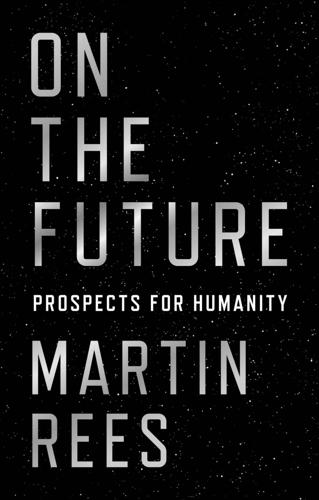
On the Future: Prospects for Humanity
by
Martin J. Rees
Published 14 Oct 2018
But there are genuine concerns that reduced genetic diversity in crucial crops (wheat, maize, and such) might render the world’s food supply more vulnerable to plant diseases. The new gene-editing technology, CRISPR/Cas9, could modify gene sequences in a more acceptable manner than earlier techniques. CRISPR/Cas9 makes small changes in the sequences of DNA to suppress (or alter the expression of) damaging genes. But it doesn’t ‘cross the species barrier’. In humans, this most benign and uncontroversial use of gene editing removes single genes that cause specific disease. In vitro fertilisation (IVF) already provides a less invasive way than CRISPR/Cas9 to weed out damaging genes. In this procedure, after hormone treatment to induce ovulation, several eggs are harvested, fertilised in vitro, and allowed to develop to an early stage.
…
In 2018 a paper was published reporting the synthesis of the horsepox virus—with the implication that a smallpox virus could be similarly synthesised.4 Some questioned the justification for this research, carried out by a group in Edmonton, Alberta, because a safe smallpox virus already exists and is stockpiled; others argued that even if the research were justifiable, publication was a mistake. As already mentioned, experiments using CRISPR/Cas9 techniques on human embryos raise ethical concerns. And the rapid advance of biotech will bring up further instances where there’s concern about the safety of experiments, the dissemination of ‘dangerous knowledge’, and the ethics of how it’s applied. Procedures that affect not just an individual but his or her progeny—altering the germ line—are disquieting.
…
This list can be found online at https://www.telegraph.co.uk/news/uknews/7798201/Robert-Boyles-Wish-list.html. 3. Two highly accessible books on these developments are Jennifer A. Doudna and Samuel S. Sternberg, A Crack in Creation (Boston: Houghton Mifflin Harcourt, 2017) (Jennifer Doudna is one of the inventors of CRISPR/Cas9); and Siddhartha Mukherjee, The Gene: An Intimate History (New York: Scribner, 2016). 4. The paper, by D. Evans and R. Noyce of the University of Alberta, is in PLOS One and is discussed in Science News on January 19, 2018. Ryan S. Noyce, Seth Lederman, and David H. Evans, ‘Construction of an Infectious Horsepox Virus Vaccine from Chemically Synthesized DNA Fragments’, PLOS One (January 19, 2018): https://doi.org/10.1371/journal.pone.0188453. 5.
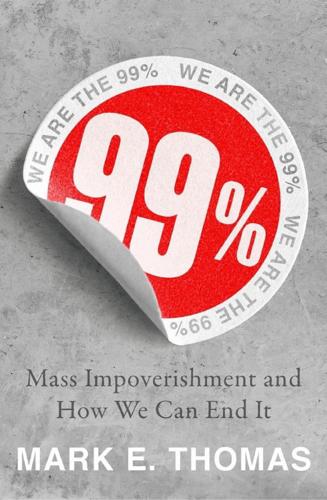
99%: Mass Impoverishment and How We Can End It
by
Mark Thomas
Published 7 Aug 2019
The medical applications of products created by additive manufacturing and using new materials, genetic editing and advanced computing to solve complex problems relating to these other technologies will transform the treatment of many serious diseases. There is already research underway in Canada on using CRISPR to target a rare form of blindness, as well as ovarian, brain, retinal and colorectal cancers and Duchenne muscular dystrophy.15 Propensity to contract Alzheimer’s disease, diabetes and many other serious conditions is also genetic and therefore potentially addressable using CRISPR. CRISPR technology is also being researched in the US as a potential treatment for HIV. Outside of medicine, new materials, clean energy and advanced computational power will improve the performance – and the environmental footprint – of many forms of transport and distribution.
…
Genetic editing Genetic editing is a type of genetic engineering in which DNA is inserted, deleted or replaced in the genome of a living organism, rather in the way that a film is edited. For genetic editing, ‘molecular scissors’ are used and there are currently four distinct types of these scissors, of which perhaps the best known is CRISPR. CRISPR was co-discovered in 2012 by molecular biologist Professor Jennifer Doudna, whose team at Berkeley, University of California, was studying how bacteria defend themselves against viral infection.7 They found that when a bacterium comes under attack it produces a strand of genetic material that matches the genetic sequence of the invading virus.
…
NANOTECHNOLOGY The term nanotechnology refers to any technology that is extremely small: of the order of a few nanometres in size. (1 nanometre equals 10-9 metres – i.e. 1 billionth of a metre). Two areas where nanotechnology looks set to become extremely important are in the development of new materials and in the construction of extremely small machines that can be either mechanical or biological, such as the CRISPR technology used in gene editing (see below). New materials such as graphene In 2004, Professors Andre Geim and Kostya Novoselov of the University of Manchester, discovered how to extract from graphite (the form of carbon found in pencil lead) an atom-thick, two-dimensional crystal called graphene.6 In 2010, they were awarded the Nobel Prize in Physics for their work.

Green Swans: The Coming Boom in Regenerative Capitalism
by
John Elkington
Published 6 Apr 2020
The latter was the subject of a wonderfully insightful survey by Oliver Morton, published by The Economist.12 New tools like Crispr are helping to radically accelerate genetic engineering.13 “Every now and then,” noted Wired magazine, “nature politely taps us on the shoulder and hands over a world-changing gift. A mold spore wafts through the open window of a laboratory, and lo, we have penicillin. A military radar array melts a chocolate bar in an engineer’s pocket, and voilà, it’s humanity’s first microwave oven. The discovery of the gene-editing technology known as Crispr was just such a fluke [. . .] The results have been revolutionary. Crispr is fast, cheap, and shockingly simple to operate.”14 As Wired continued, Crispr “is gradually giving us the power to alter not only our own genetic destiny, but also that of the entire planet—to eradicate illness, develop new crops and livestock, even resurrect extinct species.”
…
See also: https://www.theguardian.com/world/2019/sep/14/major-saudi-arabia-oil-facilities-hit-by-drone-strikes. 11.“Bitcoin Mining Ban Considered by China’s Economic Planner,” BBC News, April 9, 2019. See also: https://www.bbc.co.uk/news/technology-47867031. 12.“Synthetic Biology: A Whole New World,” The Economist Technology Quarterly, April 6, 2019. 13.https://en.wikipedia.org/wiki/CRISPR 14.Jennifer Kahn, “Preparing to Unleash Crispr on an Unprepared World,” Wired, March 19, 2019. 15.Clive Cookson, “Scientists Model ‘Gene Drive’ for Carrier Insect,” Financial Times, April 29, 2019. 16.Olaf J. Groth, Mark J. Nitzberg, and Stuart J. Russell, “AI Algorithms Need FDA-style Drug Trials,” Wired, August 16, 2019. 17.Karen Hao, “Training a Single AI Model Can Emit As Much Carbon As Five Cars In Their Lifetimes,” TechnologyReview, June 6, 2019. 18.John Elkington, “The Elkington Report: Should Governments Make Emerging Technologies a Priority?
…
Crispr is fast, cheap, and shockingly simple to operate.”14 As Wired continued, Crispr “is gradually giving us the power to alter not only our own genetic destiny, but also that of the entire planet—to eradicate illness, develop new crops and livestock, even resurrect extinct species.” Spielberg territory, you might conclude. A moment when the Wired team were brought up sharp was when they came across work designed to tackle the critical shortages of transplant organs—hearts, kidneys, lungs, and so on—by growing them inside pigs. One of the Wired team then asked a yuck-factor-driven question: “What if scientists inadvertently created a pig able to intellectualize its own suffering, one with a sense of moral injustice?”

Augmented: Life in the Smart Lane
by
Brett King
Published 5 May 2016
If we can learn to “edit” that code and reinsert it into our DNA in the proper sequence, we can fill required gaps, or simply remove errors. CRISPR/Cas9 and TALEN Gene Editing In 1987, biologists noted that bacteria possess a natural defence mechanism that recognises invading viruses. Then in 2000 to 2002, scientists recognised that bacteria not only responded to but also reacted by processing and dissembling the attacking virus DNA. They dubbed the process CRISPR, an acronym for “clustered regularly interspaced short palindromic repeats”. Between 2009 and 2012, CRISPR techniques were explored to optimise the cutting of DNA in virus candidates by examining the proteins that bacteria cells used in their immune defence.
…
By 2012, it was proposed that Cas9 could be used as a genome editing or engineering tool in human cell culture to possibly single out and destroy genes responsible for diseases like Parkinson’s, Alzheimer’s, diabetes, inherited cancers like breast cancer, immune deficiencies and so on. Right now, gene therapy is focused on monogenic diseases, or diseases that involve a single gene. CRISPR/Cas9 not only makes cuts in DNA but also allows for new genetic sequences to be inserted. Scientists can then introduce an engineered virus or DNA plasmid with the required DNA sequence. A project spearheaded by researchers at the University of California, San Francisco, used CRISPR/Cas9 to edit HIV out of human T-cells. When HIV infects the body, it modifies the body’s own immune system by changing the DNA of T-cells. With innovations in the Cas9 process, researchers were able to successfully edit the CXCR4- and PD-1-infected genes in the T-cells, replacing them with healthy cells.
…
In Philadelphia, researchers were able to make HIV patients resistant to the virus by removing the CCR-5 protein from white blood cells through gene therapy. In March 2015, Chinese scientists announced that they had successfully used CRISPR techniques to modify the gene responsible for β-thalassaemia, a potentially fatal blood disorder, in non-viable human embryos. The Chinese team injected 86 embryos and then waited 48 hours. This allowed enough time for the CRISPR/Cas9 system and the molecules that replace the missing DNA to act, as well as for the embryos to grow to about eight cells each. Of the 71 embryos that survived, 54 were genetically tested.
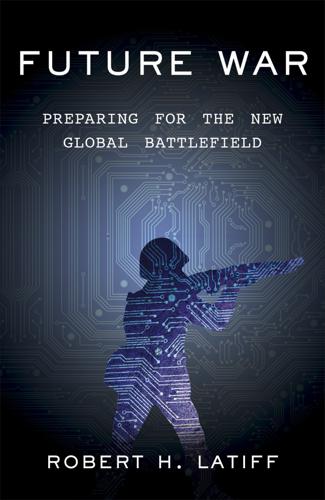
Future War: Preparing for the New Global Battlefield
by
Robert H. Latiff
Published 25 Sep 2017
In my conversations with Sanchez, he was adamant, and convincing, that their work in biotechnology was all for therapeutic or defensive purposes, but he reluctantly agreed that such advances in knowledge can just as easily be used for evil. So-called gene editing techniques, like virus manipulation and the newly discovered CRISPR/cas9, are becoming more prevalent. The techniques are exciting in that they promise to help in eradicating serious diseases. On the other hand, such techniques may be used against us. So worrisome is the CRISPR capability that the director of national intelligence has listed it specifically as a bioterror threat. In an interview with Stanford University writer Mark Shwartz, biophysicist Steven Block raised the specter of “black biology,” a shadowy science in which microorganisms are genetically engineered to create novel weapons.
…
Synthetic biology is an emerging area: Royal Society, “Call for Views: Synthetic Biology,” June 2007, https://royalsociety.org/~/media/Royal_Society_Content/policy/projects/synthetic-biology/CallForViews.pdf. It holds great promise: Office of Technical Intelligence, Technical Assessment: Synthetic Biology (Washington, DC: Department of Defense, January 2015). So worrisome is the CRISPR capability: Kathryn Ziden, “The Dark Side of CRISPR,” Potomac Institute for Policy Studies Center for Revolutionary Scientific Thought, September 20, 2016. In an interview with Stanford University writer: Mark Shwartz, “Biological Warfare Emerges as 21st-Century Threat,” Stanford Report, January 11, 2001. Some scientists believe it is possible: See Douglas R.
…
This type of research on humans must be approached with extreme caution. Many researchers are concerned about so-called gain-of-function experiments wherein genes are modified to do new things. While the United States and other Western countries prohibit such work, Chinese researchers have recently become among the first to apply the CRISPR gene editing technique to human embryos. At the same time, the Chinese company BGI (formerly Beijing Genomics Institute) is conducting large-scale gene sequencing studies of very-high-IQ individuals. Reportedly, Chinese researchers seek to use genetic engineering to increase the average intelligence in the population.

Human Frontiers: The Future of Big Ideas in an Age of Small Thinking
by
Michael Bhaskar
Published 2 Nov 2021
The costs of genome sequencing (and synthesis) are falling fast, following what The Economist called the Carlson curve. It took $3 billion, years of work and thousands of scientific minds to sequence the first genome. Now it takes a matter of hours and costs a few hundred dollars. The falling cost of DNA analysis and synthesis, new technologies and techniques like CRISPR-Cas9 gene editing and machine learning, and, often, new medical applications, mean biological technology and knowhow will touch almost every corner of our lives. Just as digital technology provided a civilisation-wide ‘platform’ for new thinking, from scientific advance and creative expression to business and political possibility, rendering biology itself a platform or general purpose technology has far-reaching implications.
…
It allows for fine-grained editing, but also for major changes, including alterations to the germ cells that produce eggs and sperm and from there to all 40 trillion cells of the human body: these genetic changes are permanently embedded in the germline, passed on to succeeding generations. Natural selection has been comprehensively supercharged, perhaps overcome. Gene editing techniques like CRISPR can work on almost any species with relative ease. They thus provide a platform for curiosity, enabling imaginative experiments, catalysing knowledge and boosting scientific capability. One example of gene editing-enabled research comes from biologists studying how butterflies produce their distinctive wing patterns.
…
Unlike telescopes or the personal computer, tools and techniques like AI and synthetic biology come parcelled with a degree of existential risk. That should give us – at the very least – pause for thought. Some unsurprisingly argue we should stop working on these rightly contested technologies altogether (more on that in the final chapter). Society could intervene in other ways. Gene editing is a good example. While the science of CRISPR proceeds apace and companies develop new medical treatments, the field has been dogged by uneven regulation and battles over IP. As knowledge galloped ahead, Berkeley (where Jennifer Doudna is based) and the Massachusetts-based Broad Institute slugged it out in the courts. Gene editing is ready to change the world, but a combination of over-regulation in some territories, patent wars and scientific nationalism weighs down on the field.
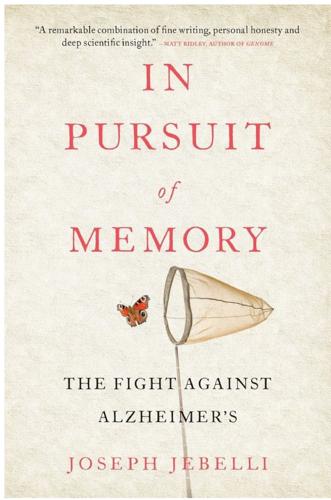
In Pursuit of Memory: The Fight Against Alzheimer's
by
Joseph Jebelli
Published 30 Oct 2017
It was surely this curiosity that provoked a critical moment in not just Alzheimer’s but all realms of biology: CRISPR (or Clustered Regularly Interspaced Short Palindromic Repeats) was little more than a repetitive sequence of bacterial DNA when it was first spotted by Japanese scientists in the 1980s. But in 2007 it was discovered that CRISPR is in fact a clever molecular defence system protecting bacteria from viruses: when a virus attacks, CRISPR first stores a fragment of the virus’s DNA in the bacterium’s genome, recording the threat, and then uses that information to delete any DNA with the same sequence. Over the past few years, scientists have figured out that CRISPR can also be used as a gene-editing tool for humans.
…
Over the past few years, scientists have figured out that CRISPR can also be used as a gene-editing tool for humans. That’s because CRISPR is composed of two parts: an enzyme called Cas9, which deletes the viral DNA, and a ‘guide’ molecule, which ferries Cas9 to the correct location in the genome. By artificially altering the guide molecule, scientists can theoretically add or remove any DNA sequences they want. The technology is in its early days, but the transformative effect it will have on medicine is staggering. Picture it: you go to your doctor and are then referred to a geneticist, who informs you that your son has cystic fibrosis but that they can simply delete the causative gene and replace it with a healthy one.
…
Picture it: you go to your doctor and are then referred to a geneticist, who informs you that your son has cystic fibrosis but that they can simply delete the causative gene and replace it with a healthy one. It will be as if he never had the disease. Or you walk into a clinic with an untreatable and inoperable type of cancer, but the geneticist can use CRISPR to edit your immune system’s DNA to spot and destroy the malignant cells. And of course, the geneticist could explain that you have the APOE4 gene, that it’s a strong risk factor for Alzheimer’s, and offer you an APOE2 instead. While discussing that, they could even offer to screen and edit any other genetic risk factors for Alzheimer’s as well. Film enthusiasts will have already drawn parallels to the 1997 film Gattaca, a futuristic drama about a world where gene-editing technology has reached its zenith, and, as a consequence, every child has their genome sequenced and edited at birth, ensuring a long and disease-free life.

How to Spend a Trillion Dollars
by
Rowan Hooper
Published 15 Jan 2020
He genetically altered two human embryos, implanted them and allowed them to develop into babies – two girls – and be born. He was jailed and fined in 2019 for violating medical regulations. He says he was attempting to make the children immune to HIV by editing a gene called CCR5 to prevent infection. The technique that He used is called CRISPR/Cas9, and it allows genes to be located and changed or disabled. This kind of genetic engineering was possible before 2012, when CRISPR was invented, but it was very complicated, time-consuming and expensive. Now, it is cheap and easy. It is far from clear whether He succeeded, or if the gene-edited girls will experience any health consequences. But the condemnation from the medical and scientific community was almost universal.
…
DOI: 10.1126/science.aau8650 21 Chelsea Gohd (2019) ‘Can we genetically engineer humans to survive missions to Mars?’ www.space.com/genetically-engineer-astronauts-missions-mars-protect-radiation.html 22 David Cyranoski (2019) ‘Russian “CRISPR-baby” scientist has started editing genes in human eggs with goal of altering deaf gene’. www.nature.com/articles/d41586-019-03018-0 23 Giorgio Sirugo et al. (2019) ‘The missing diversity in human genetic studies’. Cell 177(1), 26–31. DOI: 10.1016/j.cell.2019.02.048 24 Ergin Beyret et al. (2019) ‘Single-dose CRISPR-Cas9 therapy exceeds lifespan of mice with Hutchinson–Gilford progeria syndrome’. Nature Medicine 25, 419–422. DOI: 10.1038/s41591-019-0343-4 25 Cori Bargmann (2018) ‘How the Chan Zuckerberg Science Initiative plans to solve disease by 2100’.
…
But the condemnation from the medical and scientific community was almost universal. We don’t know if the procedure was safe; the parents were ill-informed and documents were forged. However, the genie is out of the bottle. If we wanted to, we could easily set up a lab to do the same. If I wanted to in real life, even without the trillion bucks, I could do it. CRISPR is no longer so technically difficult that only professionals can attempt it: there are YouTube videos and internet guides available and it’s on the verge of becoming a hobby activity. It’s become cheap to assemble the equipment (a few thousand dollars) and I could even purchase human embryos. It’s not illegal to buy the cells or the equipment, but it is illegal, at least in the UK, where I live, to edit the genome of a human embryo for reproductive purposes.

Utopia Is Creepy: And Other Provocations
by
Nicholas Carr
Published 5 Sep 2016
With thousands of academic and corporate researchers, not to mention scores of amateur biohackers, experimenting with CRISPR, progress in genome editing has reached a “breakneck pace,” according to Jennifer Doudna, a University of California biochemist who helped develop the tool. Combined with ever more comprehensive genomic maps, CRISPR promises to expand the bounds of gene therapy, giving doctors new ways to repair disease-causing mutations and anomalies in DNA, and may allow transplantable human organs to be grown in pigs and other animals. CRISPR also brings us a step closer to a time when genetic engineering will be practicable for a variety of human enhancements, at both the individual and the species level.
…
The economic and social advantages of enhanced intelligence, however narrowly defined, will override medical and moral qualms. Cosmetic neurology will join cosmetic surgery as a consumer choice. Then there’s genetic engineering. The much discussed gene-editing tool CRISPR, derived from bacterial immune systems, has in just the past few years transformed genomic research. Scientists can rewrite genetic code with far greater speed and precision, and at far lower cost, than was possible before. In simple terms, CRISPR pinpoints a target sequence of DNA on a gene, uses a bacterial enzyme to snip the sequence out, and then splices a new sequence in its place. The inserted genetic material doesn’t have to come from the same species.
…
As innovation researchers Paul Nightingale and Paul Martin point out in an article in the journal Trends in Biotechnology, the translation of scientific breakthroughs into practical technologies remains “more difficult, costly and time-consuming” than is often supposed. That’s particularly true of medical procedures and pharmaceutical compounds, which often require years of testing and tweaking before they’re ready for the market. Although CRISPR is already being used to reengineer goats, monkeys, and other mammals—Chinese researchers have created beagles with twice the normal muscle mass—scientists believe that, barring rogue experiments, clinical testing on people remains years away. But even taking a skeptical view of biotechnology, discounting wishful forecasts of immortality, designer babies, and computer-generated superintelligence, it’s clear that we humans are in for big changes.
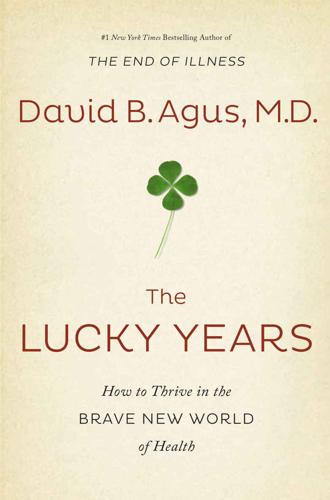
The Lucky Years: How to Thrive in the Brave New World of Health
by
David B. Agus
Published 29 Dec 2015
One team of researchers at Stanford has taken the study of the turquoise killifish (which owes its name partly to the slight shimmering turquoise hue on its scales) to new levels by sequencing the fish’s entire genome, and in the process identifying a number of genes known to influence aging in other species, including mice and humans. They’ve even built molecular tools to play with the fish’s genes, one of which is the same one I mentioned earlier: CRISPR. As I described, CRISPR acts like scissors to cut out pieces of DNA, literally, so they can be replaced by other pieces of DNA. Using this technique, the researchers have managed to tweak certain genes related to aging and affect how the fish age. Research like this is exciting and offers hope of finding antiaging treatments that can help us age slower and live longer.
…
And cancer involves genes with a defect or defects that enable the “bad” cells containing those genes to block their own death or to continually divide, creating more rogue cells that can then maim the body’s tissues and functionality. So with molecular anti-cancer therapies, it’ll be like fixing the typos and misspellings in your personal “document” to live as long as humanly possible. Cancer will become a manageable life sentence, not a death sentence. One genetic editing tool already exists. It’s called CRISPR, which stands for Clustered Regularly Interspaced Short Palindromic Repeats. This genome editing tool is remarkably easy to use and effective, but it raises many concerns because of its ability to alter human DNA in a way that can be passed along to one’s children and future generations. On the one hand, it can be used to cure diseases inherited from birth or acquired in life.
…
Indeed, our knowledge is incomplete, but we’ll be learning more as we move forward and try to deal with these possibilities—and challenges—on technical, logistical, moral, and ethical levels. I concur with Lander’s concluding statement: “It has been only about a decade since we first read the human genome. We should exercise great caution before we begin to rewrite it.” Over the past few years, thousands of laboratories around the world have begun to use CRISPR technology in their research. In April 2015, Chinese scientists reported that, for the first time, they had edited the genomes of human embryos.5 Wow! This was all made possible by a single discovery in 2012 by Jennifer A. Doudna, a biochemist at the University of California, Berkeley, who changed this field virtually overnight.
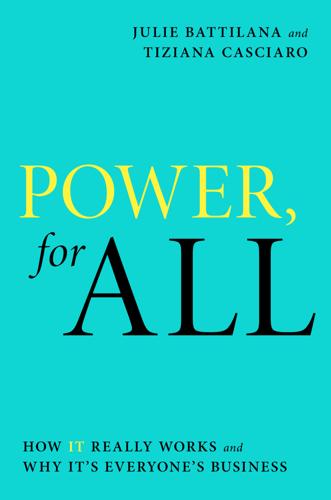
Power, for All: How It Really Works and Why It's Everyone's Business
by
Julie Battilana
and
Tiziana Casciaro
Published 30 Aug 2021
Norton, 2014); Kaplan, Humans Need Not Apply (2015); Alec Ross, The Industries of the Future (New York: Simon & Schuster, 2016); and Richard Susskind and Daniel Susskind, The Future of the Professions (Oxford: Oxford University Press, 2017). 79 David Autor, David Mindell, and Elisabeth Reynolds, “The Work of the Future: Shaping Technology and Institutions,” MIT Work of the Future, November 17, 2020, https://workofthefuture.mit.edu/research-post/the-work-of-the-future-shaping-technology-and-institutions/. 80 The acronym CRISPR stands for “clustered regularly interspaced short palindromic repeats,” which refers to a region of DNA that, with various CRISPR-associated proteins, functions like genetic scissors, enabling a cell or scientist to edit DNA or its messenger RNA very precisely. See Jennifer A. Doudna and Emmanuelle Charpentier, “The New Frontier of Genome Editing with CRISPR-Cas9,” Science 346, no. 6213 (2013). 81 Megan Rose Dickey, “Human Capital: ‘People Were Afraid of Being Critical with Me,’ ” TechCrunch, August 28, 2020, https://social.techcrunch.com/2020/08/28/human-capital-it-doesnt-have-to-be-this-way/. 82 Ottmar Edenhofer et al., “Summary for Policymakers,” in Climate Change 2014: Mitigation of Climate Change, Contribution of Working Group III to the Fifth Assessment Report of the Intergovernmental Panel on Climate Change (Cambridge, UK: Cambridge University Press, 2014). 83 Ronald Segal, The Black Diaspora: Five Centuries of the Black Experience Outside Africa (New York: Farrar, Straus, and Giroux, 1995), 4. 84 François Rabelais and Andrew Brown, Pantagruel: King of the Dipsodes Restored to His Natural State with His Dreadful Deeds and Exploits (London: Hesperus, 2003), 34. 85 Yuval N.
…
PUTTING POWER IN THE HANDS OF MANY Humankind’s pursuit of safety and self-esteem has driven us to develop technologies that have enabled us to explore, control, and leverage our environment. We have learned to master new tools, from water purification and wind energy to smartphones and robots. And scientists have now embarked on the journey to modify the very essence of life itself: our DNA and that of other species. Advances in gene editing technology, like CRISPR,80 have the potential to cure many crippling diseases and modify forms of life to secure food supplies for all, while curbing deleterious human impacts on the environment. Yet, for all our mastery, the persistence of vast inequalities and the frequency of ecological crises from hurricanes to wildfires have taught us two critical lessons.
…
At worst, however, we risk losing the moral compass of our social systems because, as Renaissance writer François Rabelais presciently observed, “science without conscience is only ruin of the soul.”84 Leaving control over new technologies to any small group is dangerous, as it gives them permission to use them for their own benefit and thus free rein to concentrate ever more power in their own hands. It’s not hard to imagine the rich and powerful leveraging technologies like CRISPR to pay for genetic enhancements, longer and healthier lifespans, and what they consider to be genetically superior offspring.85 This is the kind of dystopia depicted in many books and movies, from Aldous Huxley’s 1932 novel, Brave New World, to the more recent movie Gattaca, and we are not immune to transforming it into reality.
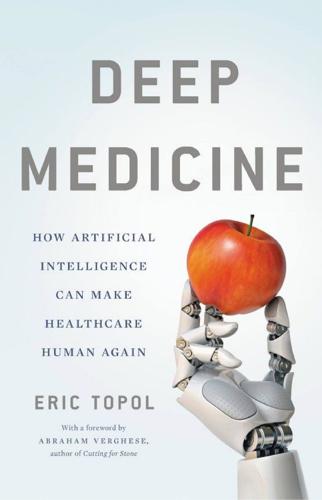
Deep Medicine: How Artificial Intelligence Can Make Healthcare Human Again
by
Eric Topol
Published 1 Jan 2019
Microsoft Research developed an algorithmic approach called Elevation, shown to predict off-target effects across the human genome when attempting to edit DNA and so to predict the optimal place to edit a strand of DNA and to design guide RNAs for CRISPR editing (the acronym stands for snippets of DNA, or more formally “clustered regularly interspaced short palindromic repeats”).15 It outperformed several other CRISPR design algorithms, many of which use machine learning. While critical to precision in experimental biology, such algorithms will play a key role in the many clinical trials moving forward that use CRISPR system editing for diseases like hemophilia, sickle cell, and thalassemia. Perhaps unsurprisingly, given that it is one of machine learning’s core strengths, image recognition is playing a critical role in cell analysis: to sort shape, classify type, determine lineage, identify rare cells in the blood, or distinguish whether cells are alive or dead.16 The inner workings of cells have been the focus of DCell, a deep learning algorithm that predicts growth, gene-gene interactions, and other functions.17 Cancer is a genomic disease, so it’s no wonder that oncology has particularly benefited from this injection of AI.
…
Nucleic Acids Res, 2017. 45(17): p. e156. 14. van Dijk, D., et al., “Recovering Gene Interactions from Single-Cell Data Using Data Diffusion.” Cell, 2018. 174(3): pp. 716–729 e27. 15. LeFebvre, R., “Microsoft AI Is Being Used to Improve CRISPR Accuracy,” Engadget. 2018; Listgarten, J., et al., “Prediction of Off-Target Activities for the End-to-End Design of CRISPR Guide RNAs.” Nature Biomedical Engineering, 2018. 2: pp. 38–47. 16. Buggenthin, F., et al., “Prospective Identification of Hematopoietic Lineage Choice by Deep Learning.” Nat Methods, 2017. 14(4): pp. 403–406; Webb, S., “Deep Learning for Biology.”
…
clinicians without patterns, 19, 137–138 Clostridium difficile (C. diff), prediction of, 195 cloud computing, DNNs development and, 77 Coca-Cola, 240 Cogito, 170 cognitive behavioral therapy (CBT) smartphones and, 177–179 Woebot and, 178 Wysa and, 178 cognitive biases misdiagnosis and, 45–47 overconfidence as, 47–49 cognitive computing, 157 colonoscopy, 159–160 Companion app, 170 Computer Science and AI Laboratory (CSAIL), 128, 196 confirmation bias, 27, 49 congenital cataracts, 150 convolutional neural networks, 69 (table), 76 (fig.) corruption in food industry, 240–241 Cortana, 255 Corti, 182 Coussens, Stephen, 47 Crawford, Kate, 99 criminal justice, bias and, 98 Crisis Text Line, 177 CRISPR, 213 Cronin, Leroy, 218 CrowdMed, 53 crowdsourcing CrowdMed and, 53 Human Dx and, 52–53 Medscape Consult and, 52 MyConsult and, 52 CSAIL. See Computer Science and AI Laboratory CT scans, 114, 117–118, 122–123, 163, 184 DNNs and, 124 (fig.) liver disease and, 117–118 longevity predicted by, 123, 124 (fig.)

Ageless: The New Science of Getting Older Without Getting Old
by
Andrew Steele
Published 24 Dec 2020
If these can reduce cholesterol and heart disease risk without problematic side effects, the next step could be to disable the gene entirely. This has already been shown to work in mice using CRISPR, and a company called Verve Therapeutics is developing a version of this therapy for human trials. Finally, there’s scope for modifying our existing genes to optimise them for longevity. One option for small changes is a modified version of CRISPR known as ‘base editing’, which allows changing of a single DNA letter at a specific point in the genome. One promising target for this therapy in the not-too-distant future would be APOE: the E3 variant differs from both E2 and E4 by just a single DNA letter.
…
There’s also the risk of the wrong piece of DNA being altered and, as always, the risk of cancer if some aspect of the DNA editing goes awry. However, huge strides are being made in gene editing both because it’s very useful for scientists doing experiments in the lab, and because it has huge therapeutic potential. A technology called CRISPR has made headlines – and indeed the 2020 Nobel Prize in Chemistry for co-discoverers Emanuelle Charpentier and Jennifer Doudna – because it makes gene editing more precise and far cheaper, and has already found its way into human trials to treat disease. It has been limited to making modifications outside of the body for now, meaning that cells can be safety-tested before being put back into patients.
…
The good news for those of us hoping to treat ageing with gene therapy is that the field as a whole continues to move very quickly, with new clinical trials being announced at a very rapid pace. As is now a familiar story, they will start out being used in patients at serious risk of disease – such as using CRISPR to modify PCSK9 in patients with such high cholesterol that they are at risk of a heart attack in their thirties or forties. If those patients avoid side effects, including the risk of cancer thanks to modifications gone wrong, we could gradually see their use being expanded to cover people with less serious health problems, like age- or diet-related high cholesterol, and eventually maybe all of us will receive PCSK9-modifying therapy as a preventative ‘vaccine’ for high cholesterol.

The Gene: An Intimate History
by
Siddhartha Mukherjee
Published 16 May 2016
Doudna and Charpentier published their data: Martin Jinek et al., “A programmable dual-RNA-guided DNA endonuclease in adaptive bacterial immunity,” Science 337, no. 6096 (2012): 816–21. this technique has exploded: Key contributors to the use of CRISPR/Cas9 in human cells include Feng Zhang (MIT) and George Church (Harvard). See, for instance, L. Cong et al., “Multiplex genome engineering using CRISPR/Cas systems,” Science 339, no. 6121 (2013): 819–23; and F. A. Ran, “Genome engineering using the CRISPR-Cas9 system,” Nature Protocols 11 (2013): 2281–308. In the winter of 2014, a team: Walfred W. C. Tang et al., “A unique gene regulatory network resets the human germline epigenome for development,” Cell 161, no. 6 (2015): 1453–67; and “In a first, Weizmann Institute and Cambridge University scientists create human primordial germ cells,” Weizmann Institute of Science, December 24, 2014, http://www.newswise.com/articles/in-a-first-weizmann-institute-and-cambridge-university-scientists-create-human-primordial-germ-cells.
…
A mutant cystic fibrosis gene can be corrected to the wild-type version; a gene to confer viral resistance can be introduced into an organism; the mutant BRCA1 gene can be reverted to wild type; the mutated Huntington’s gene, with its mirthless, singsong repeat, might be disrupted and deleted. The technique has been termed genome editing, or genomic surgery. Doudna and Charpentier published their data on the microbial defense system, called CRISPR/Cas9, in Science magazine in 2012. The paper immediately ignited the imagination of biologists. In the three years since the publication of that landmark study, the use of this technique has exploded. The method still has some fundamental constraints: at times, the cuts are delivered to the wrong genes.
…
Prior to the invention of genome-editing technologies, techniques such as embryo selection allowed us to cull information away from the human genome: by selecting embryos via preimplantation genetic diagnosis (PGD), the Huntington’s disease mutation, or the cystic fibrosis mutation, could be eliminated from a particular family’s lineage. CRISPR/Cas9-based genomic engineering, in contrast, allows us to add information to the genome: a gene can be changed in an intentional manner, and new genetic code can be written into the human genome. “This reality means that germline manipulation would largely be justified by attempts to ‘improve ourselves,’ ” Francis Collins wrote to me.
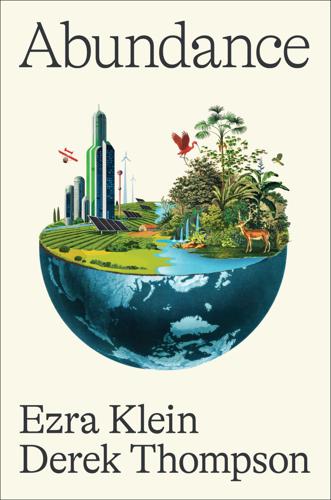
Abundance
by
Ezra Klein
and
Derek Thompson
Published 18 Mar 2025
But this is how science often works; a broad base of knowledge is built, upon which we piece together disparate fragments of a puzzle to create new breakthroughs. Another example: CRISPR is a gene-editing function that some scientists believe could one day unlock the cure for any number of genetic diseases. But it was not discovered by a group of geneticists. The first mention of CRISPR in the scientific literature comes from Japanese and Spanish researchers working with bacteria that displayed a peculiar immune reaction when attacked by viruses.86 This early work did not initially receive many citations. But after twenty years of development, CRISPR now looks like one of the most powerful medical technologies in history.
…
Abbonizio Contractors, 125, 126 California; see also Los Angeles; San Francisco; Silicon Valley California Environmental Quality Act (CEQA, 1970), 53 Democratic Party and, 16–17, 38 Employment Development Department (EDD), 119–24 environmental legislation of, 14, 52–53 Friends of Mammoth (1972), 53–54 High-Speed Rail Authority/high-speed rail plans of, 71–78, 86, 94, 116–18 housing in, 33–39, 52–54, 55–56 Lakewood planned community, 36 Legislative Analyst’s Office, 38 liberalism and, 16–17 Petaluma Plan, 36–37 presidential election (2024) and, 18 solar power in, 64 Venice Dell Community project, 110 “Californication” term, 55 Calisch, Sam, 68 Cambridge Systematics, 118 Cambridge University, 203 Canada carbon emissions per person, 66 rail system cost of, 77 cancer research, 142, 148 capitalism, Marx and Engels on, 214–15 CARES Act (2020), 10 Carnegie Mellon (formerly Carnegie Institute of Technology), 162 Caro, Robert, 55 Carroll, Mike, 125–27 cars, see transportation Carson, Rachel, 50–51 Carter, Jimmy, 7, 179, 205 Census Bureau, US, 23 Center for Building in North America, 173 Center on Global Energy Policy (Columbia University), 67 Central Pacific Railroad Company, 74 CEQA (California Environmental Quality Act, 1970), 53 Chain, Ernst, 170, 171, 174 Chamber of Commerce, 81 Chase, Jenny, 64 Chat-GPT, 142 Chetty, Raj, 31 child care cost, 9 childhood leukemia research, 148 childhood population, under age five, 18 China Beijing, air pollution in, 63 as economic competitor to US, 209 federal civilian workforce size in, 117 high-speed rail system of, 75, 82 manufacturing in, 26–27 solar technology of, 179–80, 181 CHIPS and Science Act (2022), 11, 71, 98, 114, 116, 211 Chokecherry and Sierra Madre Wind Energy Project, 97 Christian Science Monitor, 87 Chung, Payton, 41 cities; see also housing; individual names of cities air pollution in, 50, 63–64 as American frontier, 21–25 habitable land of, 59 income inequality and housing in, 30–32 innovation found in, 25–30 “Cities of Amber” (Anbinder), 37, 47, 49, 53–55 Clean Air Act (1970), 51, 52, 88 clean economy, building, see energy Clean Water Act (1972), 51, 87, 96 Cleveland, Ohio, water pollution in, 50 climate change abundance potential and, 212 energy policy and, 57–62 (see also energy) political divide on, 15 politics of invention and, 134 sustainable technologies and, 62–67 Clinton, Bill, 7, 206 Coastal Zone Management Act (1972), 96 Cobbett, William, 221 COBOL programming language, 120–21 Code for America, 119 Cohen, Lizabeth, 19 Colburn, Gregg, 39–41 Collins, Francis, 159 Collison, Patrick, 86 Colorado, construction productivity in, 80 Columbia University, 67, 113, 184 Columbus, Christopher, 148 Committee on Medical Research (CMR), 174–75 The Communist Manifesto (Marx and Engels), 214–15 Congress, US; see also individual names of legislation bureaucracy created by (1960s and 1970s), 92 military base closings by, 98 Conservation Fund, 96 The Conservative Futurist (Pethokoukis), 16 Construction Analytics, 80 construction productivity measure, 78–81 Copernicus, 58 Corning, 186 COVID pandemic economic policy and, 10 masking and, 132 Operation Warp Speed (OWS), 184–89, 211 PCR tests and, 158 remote work and, 29–30 vaccine development and mRNA research, 130–32, 135, 137–40, 146, 156, 161, 184 Cowen, Tyler, 16 crisis, focus in times of, 199–202 CRISPR, 158–59 Cruz, Ted, 116 CTY Housing, 108–9 Curie, Marie, 171 Cuyahoga River, water pollution in, 50 CVS, 187 dairy industry, 59–61 Dale, Thomas, 221 Dartmouth College, 137, 166 Darwin, Charles, 58 Davy, Humphry, 176 The Day the Earth Stood Still (film), 41 DeepMind, 28, 142 Deese, Brian, 77 Defense Advanced Research Projects Agency (DARPA), 161–65, 167–68, 199 degrowth abundance potential and, 213–14 defined, 58–59 energy policy and, 58–62 Delaware, construction productivity in, 80 Delhi, air pollution in, 63–64 Deloitte, 121, 122 demand-side economics defined, 5–6 Democratic Party as associated with, 6–10 The End of Laissez-Faire (Keynes), 183 for housing, 23 (see also housing) supply-side economics as mistake, 5–11 Democratic Party; see also liberalism California politics and, 16–17, 38 demand-side economics and, 7 on government delays, 77, 90, 127, 153 (see also bureaucracy) on health care, 135–36 lawyers as politicians in, 93 litigation and legal bureaucracy, 89–94 on Operation Warp Speed, 188 political order concept and, 203–7, 220–21 presidential election (2024) and, 17–18, 213 Demsas, Jerusalem, 46, 208 Denmark, social welfare system of, 70–71 Department of Defense, US, 98, 161–63, 178, 183, 186 Department of Health and Human Services, US, 40, 185, 188, 190 Department of Housing and Urban Development, US (HUD), 111–12 Department of Transportation, US, 126 Department of Transportation Act (1966), 51 deployment and implementation, 169–202 of artificial intelligence, 196–99 bottleneck detection for, 163, 189–91, 195, 197, 198 eureka myth of, 171–75, 177, 180, 182, 202 focus as choice in, 199–202 of Operation Warp Speed, 184–89 pace of progress in, 176–84 of penicillin, 169–71, 174–75, 176, 180, 183–85, 202 pull funding and advance market commitment policy for, 192–95 Wright’s law, 180 Doench, John, 154–55, 163 Donora, Pennsylvania, air pollution in, 50 Dourado, Eli, 67 Duchovny, David, 55 Dupont Experimental Station, 149 economic events, see COVID pandemic; Great Recession; New Deal economic theory; see also scarcity The Communist Manifesto (Marx and Engels), 214–15 demand-side economics, 5–11 The End of Laissez-Faire (Keynes), 183 inflation and, 9–10, 43–45 pie metaphor of, 11–15 scarcity as choice, 4–5 scientific research/invention and economic growth, 137 (see also invention) supply and demand, defined, 5–6 supply and demand of housing, 23 (see also housing) supply-side economics, 5–11, 38–43, 212 Economist magazine, 182 Edison, Thomas, 149, 171, 176–77 Edwards, James, 179 Einstein, Albert, 147 Eisenhower, Dwight, 204–5 Electoral College, 18 elevators, 173 Emanuel, Rahm, 73 eminent domain, 75 Empire State Building, 77 “Empirically Grounded Technology Forecasts and the Energy Transition” (Way, Ives, Mealy, and Farmer), 65 employment California’s unemployment insurance system, 119–24 construction productivity measure and, 81 federal civilian workforce size, 117 homelessness and, 40 in housing construction, 85 housing cost and wages, 43, 44 invention and skilled workers, 115, 116, 145–46, 166 outsourced work by government agencies, 117–24 in service jobs, 30–32 Employment Development Department (EDD, California), 119–24 Endangered Species Act (1973), 51, 52, 96 The End of Laissez-Faire (Keynes), 183 energy, 57–99 abundance potential and, 1–4, 212 bureaucracy and affluence, 81–86 bureaucracy and legal intervention, 86–94, 205 California’s high-speed rail difficulty and, 71–78, 86, 94, 116–18 climate change and energy policy, 57–62 construction productivity and, 78–81 electricity infrastructure need and, 68–71 energy superabundance concept, 67 fossil fuels for, 61–66, 69, 70, 178, 179 green infrastructure and, 94–99, 109–10 implementation of technologies for, 173, 176–80, 181, 183 nuclear power, 1–4, 14, 15, 60, 65, 67 sustainability of, 62–67 (see also solar energy; wind energy) Energy Information Administration, US, 65 Energy Research and Development Administration (US Department of Energy), 178 Engels, Friedrich, 214–15 The Entrepreneurial State (Mazzucato), 182–83 Environmental Defense Fund, 88 environmentalism; see also climate change abundance and future potential for, 216–17 California on, 14, 52–53 energy policy and, 76 green infrastructure, 94–99, 109–10 housing and effect of, 48–54 legal challenges and action in, 88–89 National Environmental Policy Act (NEPA, 1970), 51, 52, 54, 96, 114–16 Republican Party on, 51–53 Environmental Protection Agency, 52 Estonia, productivity measure, 79 eureka myth, 171–75, 177, 180, 182, 202 Evans, James, 147–48, 157, 159 Evarts, Charles, 190 “everything-bagel liberalism,” 113–17 Explorer 1 satellite, 178 factory farms, 59–61 Federal-Aid Highway Act (1968, 1973), 51 Federal Highway Administration, 125 Federal Land Policy and Management Act, 96 Federal Reserve, 199 FedEx, 187 financing, private vs. public, 101–4, 106 “firefighter test,” 30 Fischel, William, 34–35, 44–47 Fitzgerald, F.
…
Board of Supervisors of Mono County (Cal. 1972), 53–54 Frontier, 193 Fuchs, Erica R. H., 161–63 Fully Automated Luxury Communism (Bastani), 13–14 “Futurama II” exhibit (General Motors), 218 Galbraith, John Kenneth, 49 Gallup survey (1965), 200 Galperin, Ron, 109 Ganong, Peter, 32 Garcetti, Eric, 108 General Motors, 218 genetics CRISPR, 158–59 Genome Biology journal, satirical article, 148 Mendel and, 144 mRNA research, 130–32, 135, 137–40, 146, 156, 161, 184 Georgia, construction productivity in, 80 geothermal energy, 65 Germany carbon emissions per person, 66 housing supply in, 23 post–World War II economy, West Germany, 81 rail system cost of, 77 solar technology of, 179, 181 Gerrard, Michael, 113 Gerstle, Gary, 203–4, 207, 220–21 Gertner, Jon, 164–65 “Getting Infrastructure Built: The Law and Economics of Permitting” (Liscow), 97–98 Gilliam, Harold, 56 Glaeser, Ed, 24, 25, 27, 30, 84–85 GLP-1 drugs, 157–58 Golden Fleece Award, 153 Goldman Sachs, 27 Google, 28, 142 Goolsbee, Austan, 78–80 government and public opinion, 14–15, 89–94, 182–83; see also political issues Grant, Ulysses S., 21 grant writing, see invention Great Depression, see New Deal The Great Gatsby (Fitzgerald), 217 Great Recession American Recovery and Reinvestment Act (2009), 72–74 housing market and, 23 political order concept and, 206 Greeley, Horace, 21, 22–23 green infrastructure, 94–99, 109–10; see also energy “The Greens’ Dilemma” (Ruhl and Salzman), 69–70, 95–97 Griffith, Saul, 68 growth, see housing Hansen, Alvin, 22 Harris, Kamala, 18, 61, 93, 212, 213 Harris & Associates, 118 Harvard University, 156–57, 163 Hawaii, homelessness in, 40 Hayes, Denis, 51 H-1B visa, 146; see also immigration policy health care; see also COVID pandemic abundance potential for, 1–4 Affordable Care Act (2010), 7 big government–small government divide on, 105–6 NIH funding for research (see National Institutes of Health) penicillin discovery, 169–71, 174–75, 176, 180, 183–85, 202 politics of invention and, 134–36 scarcity of primary-care physicians, 190–91 supply-side economics and insurance cost, 8–9 Heisenberg, Werner, 147 Hewlett-Packard, 163 Hickel, Jason, 58, 60, 61 higher education cost, 9 High-Risk, High-Reward Research program (NIH), 159, 160 High-Speed Rail Authority (California), 74–76, 94, 118 highways; see also transportation Federal-Aid Highway Act (1968, 1973), 51 Federal Highway Administration, 125 Highway Safety Act (1966), 86 Interstate Highway System, 46–47, 50, 51, 54–56, 96, 97, 204 HIV research, 137–39, 148 HNTB, 118 Homelessness Is a Housing Problem (Colburn and Aldern), 39–41 housing, 21–56 abundance potential for, 1–4, 212–13, 215–16 big government–small government divide on, 105–12 building codes and, 42–43 cities and innovation, 25–30 cities as American frontier, 21–25 construction productivity measure, 79 elevators in, 173 environmentalism and effect on, 48–54 financing of, private vs. public, 101–4, 106 homelessness as scarcity problem of, 38–43 immigration policy and, 208 income inequality and, 23–25, 30–32 price rise of 1970s to present, 23, 43–47 social (public) housing availability, 111–12 supply-side economics and price rise of, 8 thirty-year fixed-rate mortgage, 44–45 transportation infrastructure and, 35–38, 48–56 Yes In My Back Yard (or YIMBY), 212 zoning rules and, 33–38, 44–47, 106–7, 208 Housing Accelerator Fund, 102 Houston, housing and zoning in, 106–7 Howard Hughes Medical Institute (HHMI), 167 Howell, William, 17 How Solar Energy Became Cheap (Nemet), 178–80 Huffman, Jim, 36 Human Genome Project, 148, 158 Hygienic Laboratory, 151 IBM, 120–21, 163 I-95 bridge repair (Pennsylvania), 125–28 Idaho, construction productivity in, 80 idea factories, 160–66; see also invention The Idea Factory (Gertner), 164–65 Illinois, presidential election (2024) and, 18 immigration policy border wall and, 98 housing and, 208 immigrants as others, 208 invention and skilled workers, 115, 116, 145–46, 166 Immunity journal, 138 Imperial College London, 133 implementation, see deployment and implementation income inequality energy inequality and, 63–64 housing and, 23–25, 30–32 India, air pollution in, 63–64 individualism, 205–6 inflation housing cost since 1970s, 43–45 supply-side economics and, 9–10 Inflation Reduction Act (2022), 11, 71, 77, 181–82, 211 infrastructure; see also transportation Biden on, 210–11, 213 energy and infrastructure need, 68–71 housing and, 48–56 Trump on, 210 Infrastructure and Investment Jobs Act (2021), 71 Institute for Progress, 145, 187 Intel, 26, 180 Internal Revenue Service (IRS), 122 internet, DARPA and, 161, 162 Interstate Highway System, 46–47, 50, 51, 54–56, 96, 97, 204 invention, 129–68 burden of knowledge and, 143–44 eureka myth and, 171–75, 177, 180, 182, 202 (see also deployment and implementation) idea factories of, 160–66 immigration policy and, 115, 145–46, 166 innovating scientific research for, 166–68 Karikó Problem and pace of scientific progress, 141–49, 156 Karikó’s research and NIH lack of funding, 129–33, 137–41, 146, 155, 168 NIH bureaucracy and effect on, 152–59 NIH incentives for, 159–60 NIH inception and, 149–52 politics of, 133–37 World’s Fair (1964), 217–19 iPhone (Apple), 26, 183 Israel, water desalination by, 67, 198 Italy, housing supply in, 23 Japan carbon emissions per person, 66 high-speed rail system of, 72 housing supply in, 23 post–World War II economy, 81, 82 rail system cost of, 77 Jefferson, Thomas, 62 Jenkins, Jesse, 69 Johnson, Lyndon B., 48, 86, 218–19 Jones, Benjamin, 143, 145 JPMorgan Chase, 27, 29–30 Kagan, Robert, 91–92 Kalil, Thomas, 195 Karikó, Katalin, 129–33, 137–41, 146, 155, 168 Karikó Problem, 141–49, 156 Kelly, Brian, 76, 118 Kelly, Mark, 116 Kennedy, John F., 201 Kennedy, Robert F., Jr., 188 Keynes, John Maynard, 183 Klein, Ezra, 75 Kuttner, Bob, 106, 111 labor productivity measure, 78 labor unions, 82, 126, 127 Labosky, Patricia, 159–60 Laffer, Arthur, 6 Lakewood, California, housing and, 36 land agriculture and energy use, 59–61 land use for sustainable energy, 70 lot size and housing, 45, 47 Latvia, productivity measure, 79 Lawrence Berkeley National Laboratory, 70 Lawrence Livermore National Laboratory, 66–67 Legislative Analyst’s Office (California), 38 Lehrer, Jim, 89 Leonardo da Vinci, 131 Less Is More: How Degrowth Will Save the World (Hickel), 58, 60, 61 liberalism, 101–28 abundance as potential for, 1–4, 16–19, 211–15 (see also abundance) big government–small government divide and, 105–12, 205 “everything-bagel liberalism,” 113–17 litigation and bureaucracy problem, 89–94, 205 (see also bureaucracy) neoliberalism as political order, 204 New Deal and effect on, 49 outsourced work by government agencies, 117–24 private vs. public financing and, 101–4, 106 as procedural vs. outcome-based, 89–94, 112, 125–28 regulatory processes vs. efficient choices of government, 125–28 on social welfare system, 70–71 Licklider, J.

Boom: Bubbles and the End of Stagnation
by
Byrne Hobart
and
Tobias Huber
Published 29 Oct 2024
For example, the discovery of clustered regularly interspaced short palindromic repeats, better known as CRISPR, began as an area of basic research, only later becoming the basis of a technology that can be used to edit genes. It took more than 20 years for the world to recognize CRISPR’s promise. For a long time, research on the subject didn’t attract many citations. As recently as 10 years ago, leading scientific journals rejected papers on CRISPR that would ultimately help win its discoverers the 2020 Nobel Prize in Chemistry. A major scientific breakthrough essentially occurred while no one was looking. The case of CRISPR demonstrates how important it is to give scientists time to develop novel ideas, even as novel research struggles to gain acceptance by the scientific community.
…
Or consider the renaissance in the design, prototyping, and deployment of nuclear reactors for both nuclear fission and fusion; attempts to pioneer new compute paradigms, such as quantum and thermodynamic computing, to engineer around compute bottlenecks induced by Moore’s law; advances in AI-enabled robotics that could reindustrialize the West’s manufacturing base; agricultural and weather modification technologies that aim to reverse desertification and water scarcity; or methods of cellular reprogramming, like CRISPR, that can extend human life and health spans. All of these fields demonstrate definite optimism, hyperstitional reflexivity, and a combination of decentralized parallelization and centralized coordination. It would take many more pages to investigate these dynamics in detail, but we hope this book has succeeded in making their features self-evident.
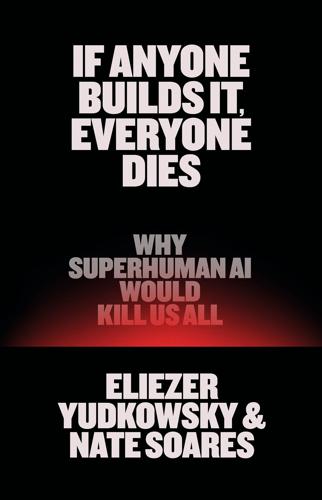
If Anyone Builds It, Everyone Dies: Why Superhuman AI Would Kill Us All
by
Eliezer Yudkowsky
and
Nate Soares
Published 15 Sep 2025
Crawford et al., “Securing Commercial Nucleic Acid Synthesis” (RAND Corporation, 2024), rand.org. 12. once in 2021: Richard Waters and Miles Kruppa, “Rebel AI Group Raises Record Cash after Machine Learning Schism,” Financial Times, May 28, 2021, ft.com. 13. again in 2024: Todd Haselton and Rohan Goswami, “OpenAI Co-founder Ilya Sutskever Announces His New AI Startup, Safe Superintelligence,” CNBC, June 20, 2024, cnbc.com. 14. gain-of-function: “Understanding the Global Gain-of-Function Research Landscape,” Center for Security and Emerging Technology, November 28, 2023, cset.georgetown.edu. 15. Red Cross: Official Statement by Jacques Forster, vice-president of the ICRC, “Preventing the Use of Biological and Chemical Weapons: 80 Years On,” October 6, 2005, web.archive.org. 16. CRISPR technology: “CRISPR,” Genome.gov, n.d., genome.gov/genetics -glossary/CRISPR. CHAPTER 10: A CURSED PROBLEM 1. Mars Observer: Timothy Coffey et al., “Mars Observer Mission Failure Investigation Board Report,” National Space Grant Foundation (NASA, December 31, 1993), spacese.spacegrant.org. 2. Mars Climate Orbiter: Arthur G. Stephenson et al., “Mars Climate Orbiter Mishap Investigation Board Phase I Report” (NASA, November 10, 1999), llis.nasa.gov. 3.
…
Scientists are still trying to figure out what the differences do. The virus was modified by a new hire before it escaped, according to the news. You catch clips of some interviews that this researcher sat for after his arrest. He says he was trying to adapt a super-contagious virus to do genetic engineering (using successors to the CRISPR technology developed in 2012). He says he made a virus that would spread multiple AI-invented pharmaceutical proteins and gene therapies, developed in just the last months and barely beginning their excruciatingly slow journey to medical availability. He wanted to make a virus that would spread and wipe out obesity, Alzheimer’s disease, HIV, HSV, and malaria.
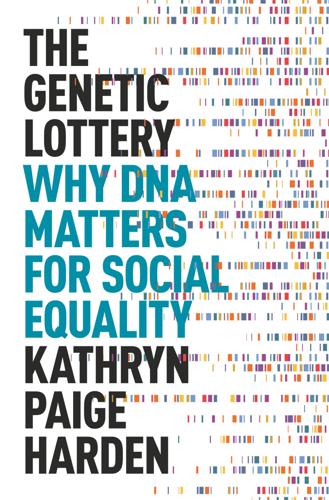
The Genetic Lottery: Why DNA Matters for Social Equality
by
Kathryn Paige Harden
Published 20 Sep 2021
How Genetics Is Perceived To insist that genetics is, in any way, relevant to understanding education and social inequality is to court disaster. The idea seems dangerous. The idea seems—let’s be frank—eugenic. One historian compared scientists who linked genetics with outcomes such as college completion to Germans who were complicit in the Holocaust (“CRISPR’s willing executioners”).25 Another colleague once emailed me to say that conducting research on genetics and education made me “no better than being a Holocaust denier.” In my experience, many academics hold the conviction that discussing genetic causes of social inequalities is fundamentally a racist, classist, eugenic project.
…
Genetics and Egalitarianism: A Preview In the century and a half since the publication of Hereditary Genius, geneticists have identified the physical substance of heredity, discovered the double-helix structure of DNA, cloned a sheep, sequenced the genomes of anatomically modern humans and of Neanderthals, created three-parent embryos, and pioneered CRISPR-Cas9 technology to edit the DNA code directly. Yet, in all that time, how people make sense of the relationship between genetic differences and social inequalities has barely budged from Galton’s original formulation: empirical claims (“people differ genetically, which causes physical, psychological, and behavioral differences”) are mixed together with moral oughts (“some people should be treated as superior to others”), with potentially horrible consequences.
…
The genetic influences on speech problems also appear to influence motor skills more generally, a scientific finding that comports with my personal experience. I watched my late talker struggle to learn to crawl, to walk, to ride a scooter. Of course, the high heritability of speech impairment does not obviate the importance of the environment. The only available interventions for speech problems are environmental ones; no one is CRISPR-ing the genome of the late-talking three-year-old. And we can, unfortunately, find numerous examples of abused, neglected, or abandoned children who were deprived of verbal interactions in their early lives, with devastating results. But against the backdrop of the normal linguistic environment provided in my home, it is likely that my children differ in their verbal development because they differ in which genes they happened to inherit from me and their father.
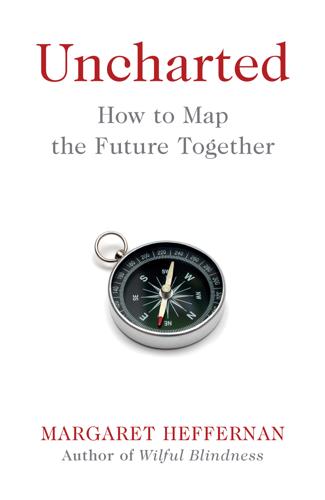
Uncharted: How to Map the Future
by
Margaret Heffernan
Published 20 Feb 2020
Editing the genome of an egg or sperm, through CRISPR (clustered regularly interspaced short palindromic repeats), offers the possibility of permanent genetic change. Some argue for efficiency: why not improve the quality of the future human genome through selection or editing? Others are deeply uncomfortable with the prospect and consequences of reducing genetic variety. In 2015, recognising that a fundamental turning point had been reached, genetic researchers called for a moratorium on the use of gene-editing and gene-altering technologies. CRISPR genomic editing had potential that neither old-style eugenics nor newgenics ever had: the ability to add or subtract information to the human genome.
…
Without any apparent irony, he proposes ‘social efficiency both as a design goal and a metric for the design of social network systems’, urging us to build ‘social network systems’ as wondrous as the ‘rich legacy’ of our financial system.46 This is a eugenics mindset, applied to everything we do and everything we are. With CRISPR, would-be forecasters crossed the line into casting the future. This transition – from information to intervention – could not be more profound or challenging. In many ways it acknowledges that the future cannot be foretold. Economic models aren’t fully successful. Narratives prove misleading and history doesn’t repeat itself reliably.
…
For those determined to master the future, the only recourse is to force-fit a standardised model of a predictable reality onto a world that remains complex and rich but unpredictable in all its individuality. The appeal for large corporations is that doing so is hugely profitable. The temptation for us is the allure of a life that is convenient, predictable and certain. No longer overwhelmed by choice, our decisions get edited for us, day after day, as surely as CRISPR edits human potential. So we stand now at a crossroads. Can we live with the fact that neither professional forecasters, nor historians, nor profiles, nor even DNA can untangle the systemic complexity, uncertainty and ambiguity of our lives? All of our ancestors did so. Or is a more predictable life – calmer, easier, with less fear of error or surprise – too tantalising to reject?
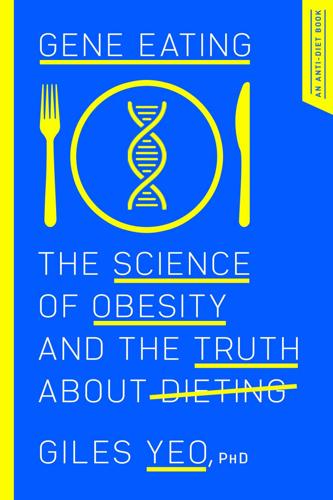
Gene Eating: The Science of Obesity and the Truth About Dieting
by
Giles Yeo
Published 3 Jun 2019
While we have possessed the ability to modify DNA for a few decades now, it was always limited by the organisms we could actually genetically engineer (mostly mice and a few plants) and the areas in the genome that were accessible. The development of CRISPR-Cas9, which is short for Clustered Regularly Interspaced Short Palindromic Repeats and CRISPR-associated protein 9, however, has now given scientists the ability to change the DNA of any organism or cell, and at pretty much any location in the genome.12 Developed from a naturally occurring bacterial defence mechanism, CRISPR-Cas9 acts simultaneously as both molecular scalpel and tweezers, allowing very precise editing of the genome to occur. It is most certainly ‘now technology’ in that it is in wide use in laboratories throughout the world; although most scientists, myself included, use it to edit the DNA of cells and of animal models, purely for the purposes of research.
…
E. et al., ‘Genetic studies of body mass index yield new insights for obesity biology’. Nature 518 (2015), 197–206, doi:10.1038/nature14177; and Loos, R. J., ‘Genetic determinants of common obesity and their value in prediction’. BestPract Res Clin Endocrinol Metab 26 (2012), 211–226, doi:10.1016/j.beem.2011.11.003. 12.Cong, L. et al., ‘Multiplex genome engineering using CRISPR/Cas systems’. Science 339 (2013), 819–23, doi:10.1126/science.1231143; Jinek, M. et al., ‘A programmable dual-RNA-guided DNA endonuclease in adaptive bacterial immunity’. Science 337 (2012), 816–21, doi:10.1126/science.1225829; and Mali, P. et al., ‘RNA-guided human genome engineering via Cas9’. Science 339 (2013), 823–26, doi:10.1126/science.1232033.
…
Aboughazala, Mohamed 126–7 acidity 210, 230, 231 aflatoxin 188–9 ageing: and weight gain 3–4, 6–7 agriculture 88–9, 90–3, 95, 102 chickens 164–5 dairy 153–4, 155 alcohol 102, 105–8, 168–9, 263, 308 and calories 108–9 and liver 217, 223, 224 alkaline diet ix-x, 178, 230–5, 237–43, 248–9 and cancer reversal 243–4, 245–8 alkalinity 222, 230, 231, 235–6 almonds 259–60 alternate-day fasting 284 Angry Chef 178, 270 Atkins Diet 109, 110, 138 Aveyard, Paul 277 avocado 95, 197, 204 Bacon, Amanda Chantal 259 bananas 280 bariatric surgery 114–16 Béchamp, Antoine 241–2 beer belly 75, 108–9, 136–7 beta-carotene 218–19 bioelectrical impedance 9–10 biological clocks 66–7 blood: alkalinity 231, 233, 235–6 pleomorphism 242–3 blood pressure 294 body fat 9–10, 53–4, 71–2 distribution 74–6, 109, 136–7 and spare calories 70–1 storage capacity 78–80 why it is bad for you 72–7 Body Mass Index (BMI) 8–10, 11–12, 13 and genes 53–7, 277, 282–3, 310 body-clock 66–7 body-shape 16, 52, 53–4, 74–6 bodyweight: and genes 15–16, 52–7, 310–11 set point hypothesis 5–8 Borlaug, Norman 133 brain: dessert stomach 81–3 and grains 145–6 and gut hormones 113–14 leptin-melanocortin pathway 40–52 starvation response 36–7 and weight loss 7–8 broccoli 219 caloric availability 61–6, 112, 278, 328 calories 4, 60–1, 83–4, 328 alcohol 108–9 daily intake 3 dessert stomach 81–3 and fat 69–71 negative calorie illusion 80–1 and time of day 66–9 Campbell, Colin 19, 183–4, 186–96, 199, 200, 201, 204, 239, 249, 259 cancer: and alkaline diet 243–4, 245–8 Belle Gibson 269–70 and gene editing 321–2 and genetics 190–1 and meat 189, 192, 193, 195–6, 202–4 and plant-based diet 187–8, 189–90, 192 Warburg effect 244–5 carbohydrates: caloric availability 65, 112, 327 FODMAPs 142–4 gluten-free diets 138 glycaemic index 278–80 high-protein, low-carb diets 109–12, 119–20, 138, 293 Paleo diet 89, 90 carrots 218–19, 227 casein 189–90, 194 Catholicism 257 cavefish 52 celery 63–4, 80–1 cheese 149–50, 154–8, 162–3, 170, 171 chicken 164–5 China Study, The (Campbell) 19, 183–4, 186–96, 197, 199, 200, 204, 239, 259 Chinese food culture 164–8 chlorophyll 237 cholecystokinin (CCK) 113 cholesterol 195–6 circadian rhythm 66–7 clean eating xiii-xiv, 180–3, 209 Belle Gibson 269–70 through the years 257–8 Clean Eating (documentary) 179, 180, 200–2, 259 Bill Davis 129–31, 134, 139, 141, 146 Caldwell Esselstyn 196 Colin Campbell 186–7, 196, 199, 201, 202 Ella Mills 180–3, 269 Instagram 261–2, 263 Robert Young ix-x, 230–1, 232, 233–4, 235, 238–40, 246–7, 248 cleanse and detox programmes 207–11, 213–22, 225–9 coconut water 219 coeliac disease xi, 122, 123–7, 139, 147 cold-pressed juice 208, 213–16 Coleman, Doug 27, 29–32, 35, 36 Constant Cravers 277, 282–4, 310, 323–4 convergent evolution 163–4 cooking 98, 210, 226–7, 235 Cordain, Loren 88–90, 91, 93 corn 63, 100–1, 227 Corrett, Natasha 180, 239–41, 256 CRISPR-Cas9 321 curds 155, 156, 158 dairy 149–50, 173–4 agriculture 153–4 cheese 154–8 lactase persistence 160–4 lactose 151–2, 170 milk 160 yogurt 159 see also lactose intolerance dairy-free diet xi, 171–3 DASH (Dietary Approaches to Stop Hypertension) diet 294–5 Davis, Bill 129–42, 145, 146, 239, 249, 259 dessert stomach 81–3 detox see cleanse and detox programmes DEXA (Dual-energy X-ray absorptionmetry) 9–10 diabetes 26–7, 74, 79–80, 286 and gut bypass 115 ketoacidosis 111, 236 diets xi, xiii-xv, 325–6, 328–9 balance 118–20 and genes 306, 308 nudges 295–9 and religion 171–2, 257–8 the right diet for you 274–302 digestion 62 DNA 23, 24, 314, 321 DNAFit 305, 306–9, 311 dogs 41–2, 44–6, 104–5 Donelly, Beau 270 Dukan diet 109, 110 eating disorders 264–9, 286 Edgson, Vicki 239, 240, 241 eggs 165 Ellis, A. 127 Emotional Eaters 277, 280–2 energy expenditure 7, 8, 21, 57 measuring 317–20 see also physical activity environment xii, xiii, xiv, 11–12, 14–16, 21–2, 24–5, 102 and cancer 191–2, 193 and obesity 17, 57–8 Pimas and Polynesians 16–21 Esselstyn, Caldwell 184, 186, 196–9, 200, 204, 259 essential fatty acids 238 exercise see physical activity experts 270–2 Facebook 253, 254, 264 Farooqi, Sadaf 33–5, 47, 48, 49–50 Fasano, Alessio 127–8, 129, 139–42 fast food 21–2 fasting 222, 284–6 fat 50, 65, 110–12, 328 see also body fat fatty liver 223–4 Feasters 277, 278–80 fermentation 99–100, 123, 159, 210 fibre 148, 221–2 flies 119 FODMAPs 142–4, 147 food insecurity 118 food intake xii, xiv, 7, 8, 11, 25, 327 food choice 49–50 and genes 26–7, 29–32, 57 measuring 316–17 and melanocortin pathway 49 orthorexia 264–7 see also calories Food Matters Live 177–9, 201–2 food processing 97–102, 185, 210 Forks over Knives 197 formaldehyde 219 Frankenwheat 131–4 fructose 62, 142, 143, 220, 224 fruit: fibre 221–2 juice 219–20, 222, 224 fruit flies 119 genes xii, xiv, 23–5, 304–5 and BMI 277, 282–3 and cancer 190–1 Constant Cravers 277, 282–4, 310, 323–4 editing 321–2 heritability of traits 12–16 lactase persistence 161–4 leptin 32–8 leptin-melanocortin pathway 40–52 Mendel 27–9 metabolism and energy expenditure 319 nutrigenomics 320–1 and obesity 11–12, 15–22, 25, 52–7, 277, 310–11, 322–4 obesity in mice 26–7, 29–32 personalised tests 168–9, 305–9, 319–20 and post-agricultural diet 102–9 variation 314–15 genome 23 genome-wide association studies (GWAS) 53–4 ghrelin 113 Gibson, Belle 269–70 glucose 62–3, 70, 73–4, 142–3, 220, 224, 245 gluten 122–3, 147–8 and coeliac disease 123–7 and FODMAPs 142–4 harm 139–42 hybridised wheat 131–4 sensitivity to 127–9 gluten-free diet xi, 129–31, 137–9, 146–7, 178 glycaemic index (GI) 278–80 glycogen 70 GM foods 95, 133 GOOP 209, 260, 325 Gordon, Zoe Hunter 261 gout 294–5 grain-free diet 145–6, 249, 259 grains 134, 148 and human evolution 90, 102–5, 134 see also wheat Gribble, Fiona 277 Guarda, Angela 266 gut 39–40, 143 gut bypass 114–16 gut hormones 113–14, 277, 278 gut leakiness 140–1 heart disease: and Mediterranean diet 290–1 and plant-based diet 184, 187, 188, 196–9 Hemsley, Jasmine and Melissa 180, 256 high-protein, low-carb diets 109–12, 119–20, 138, 293 homeostasis 235 Honestly Healthy 180, 239–41, 256 hunter-gatherers 88–9, 90–1, 93–6, 103–4 hybridisation 132–4 hydrogen peroxide 237 hyperphagia 34, 37–8, 44 hypertension 294 hyperventilating 235–6 hypothalamus 40–1, 43 incidental virtuous foods 80–1 influencers 255–6, 259–61, 262, 269, 270, 273 Instagram 254–7, 258, 259, 261–2, 263, 264, 266–7 insulin 73–4 intermittent fasting diet 284–6 intestinal permeability 140–1 irritable bowel syndrome (IBS) 128, 142–4, 147 Islam 257 Jackson Laboratory 26–7, 29–32 jaundice 224–5 Jebb, Susan 277, 284 Jordan, Sarah 206–8, 212–16, 228 Judaism 171–2, 257 juices 208, 213–16, 219–20, 222, 224, 228, 229 Junger, Alejandro 209, 216 Kcals see calories Kenny, Jason 303–4 ketoacidosis 111, 236 ketogenic diet 109, 110–12, 284 kosher laws 171–2 Labradors 41–2, 44–6 lactase 151 lactase persistence 152, 160–4, 168, 173–4 lactose 143–4, 151, 158, 159, 170–1 lactose intolerance xi, 151–3, 164, 168–70, 173, 308 leaky gut 140–1 legumes 90, 166–7 leptin 32–8, 47–8, 72 leptin-melanocortin pathway 40–52 Levinovitz, Alan 257–8 Linearbandkeramik 153–5, 160–2 Lipman, Natasha 267–9 lipotoxicity 73–4, 78, 79 liver 216–17, 222, 223–5, 228–9 McGregor, Renee 264–5 Malhotra, Aseem 293 Manna Dew 126–7 Marteau, Theresa 297–8 MC4R 40–1, 42, 46–50, 51–2 meat 204–5 acidity 239 caloric availability 64, 65 and cancer 189, 192, 193, 195–6, 202–4 Chinese food culture 164–6 Paleo diet 95–7 medical profession 134–6 Mediterranean diet 288–93, 308 melanocortin pathway 41, 42–52 Mendel, Gregor 27–9 metabolic rate 317–18 mice 26–7, 29–32, 76, 119, 141 milk 153–4, 155, 158, 160, 161, 172–3 allergy 152–3 and cheese 154–5, 156–8, 162–3 from pigs 165–6 and yogurt 159 Mills, Ella 180–3, 200, 255–6, 262, 269 Moa 96 Moon Juice 259–60 Mosley, Michael 284 movement see physical activity mushrooms 185 negative calorie illusion 80–1 Neolithic 153–5, 160–2, 165, 167 niacin 100–1, 227 non-coeliac gluten sensitivity 127–9, 139, 147 nudges 295–9 nutrigenomics 320–1 obesity xi-xii, 10–11, 57–8, 136 Constant Cravers 277, 282–4, 310, 323–4 and diabetes 27 and genes 11–12, 22, 25, 52–7, 310–11, 322–4 genetic heritability 15–16 and leptin gene 26–7, 29–38 and leptin-melanocortin pathway 40–8 Pimas and Polynesians 16–21 and socio-economic class 118 see also Body Mass Index; bodyweight; weight gain O’Neill, Donal 293 O’Rahilly, Steve 32–5, 47, 78 orthorexia 264–9 Paleo diet 87–90, 109, 285 genes and post-agricultural diet 102–9 and human evolution 96–7 hunter-gatherers 93–6 and processed foods 97–102 Paltrow, Gwyneth 209, 260, 325 Pares, Ali 240 Pasteur, Louis 242 pasteurisation 98–9, 154, 235–6 peanuts 188–9 pellagra 100–1 peptide YY (PYY) 113 Perlmutter, David 145–6 pH 178, 230, 231, 234–5 pH Miracle, The (Young) ix, 230–1, 232–3, 234–5, 241, 243 pharmaceutical industry 134–6, 145, 201, 240 Phelps, Michael 300 Philippines 188–9, 193 physical activity xii, 6, 11, 21, 299–301 measuring 317, 318–19 pigs 51–2, 165–6 Pima Indians 17–20 Pioppi Diet, The (Malhotra and O’Neill) 293 plant-based diets 179, 183–4, 199, 204–5, 249, 259 Campbell 183–4, 185–96 Ella Mills 180–3, 200 Esselstyn 184, 196–9 Natasha Lipman 267–9 and vegans 184–5, 200 plants: and human evolution 96–7 hybridisation 132–4 plate sizes 297–8 pleomorphism 241–3 Polynesians 17–20, 79–80 population risk 312–14 portion sizes 297–8 Postural Orthostatic Tachycardia Syndrome (POTS) 182, 200, 267 potassium 219 potatoes 279 PREDIMED 289–92 Prevent and Reverse Heart Disease (Esselstyn) 184, 186, 196–9, 200, 204, 259 processed foods 97–102, 185, 210 proopiomelanocortin (POMC) 40–6 protein 116–18 caloric availability 64–5, 112, 327 and cancer 189–90, 193–4 Chinese food culture 164–8 gluten 122–3 and gut 114–16 high-protein low-carb diets 109–12, 119–20, 138, 293 Paleo diet 89, 90, 96 protein leverage hypothesis 116–18, 119 and weight loss 112 Quinn, Tristan 180, 240 raw food detox 225–7 religion 171–2, 257–8 rennet 156–7 Reno, Tosca 183, 209 rice 100 Roux-en-Y gastric bypass (RYGB) 114–15 Salas-Salvado, Jordi 289 science: communication 272, 273 experts 270–2 set point hypothesis 5–6 Singapore 149, 172–3 social media 253–5, 258, 263–4, 266, 269–70, 273 see also Instagram soybeans 166–7 starch 102–5 starvation response 36–8 stomach 235 Stone Age diet see Paleo diet stress 277, 280–2 subcutaneous fat 75, 76–7, 109, 136 sucrose 62–3, 142, 220 sugar 50, 62–3, 219–20, 221, 224 superfoods 227–8 sweetcorn 63, 227 Taoism 258 Thaler, Richard 295, 296 time-restricted feeding 284 tofu 166–7, 185 Toscano, Nick 270 toxins 216, 218–19, 228 Trott, Laura 303–4 twins 12–16 Twitter 253–4, 255, 264 unsaturated fats 328 vegans 180, 184–5, 200, 204–5 visceral fat 75, 76–7, 109, 136–7 vitamin C 226 vitamins 237–8 waist-to-hip ratios (WHR) 53–4, 55 Warburg effect 244–5 Warner, Anthony 178, 270 water fasting 222 weight see bodyweight weight gain 3–5 see also obesity weight loss xii, 302, 326–7 alkaline diet 239 and brain 7–8 and exercise 299–300 gluten-free diets 138 grain-free diets 146 plant-based diet 198–9 and protein 112 the right diet for you 274–88 Weight Watchers 275, 282 What’s the Right Dietfor You?
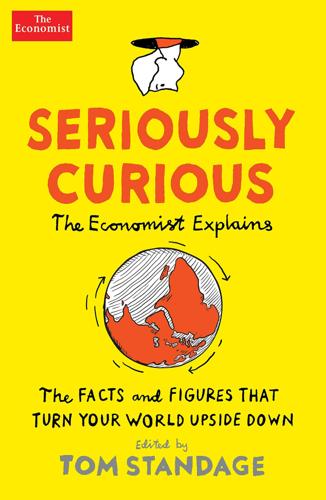
Seriously Curious: The Facts and Figures That Turn Our World Upside Down
by
Tom Standage
Published 27 Nov 2018
Engineering these to do humanity’s bidding (by disrupting fertility genes, for example) proved difficult. That problem was solved in 2015, though, when Valentino Gantz and Ethan Bier of the University of California, San Diego, used CRISPR-Cas9, a recently discovered gene-editing tool, to make a gene drive that could be inserted anywhere in the genome of a fruit fly. The ease with which gene drives can be made with CRISPR-Cas9 has, however, provoked fresh worries about the technique, which would have to be addressed before gene-drive-carrying organisms could be let loose in the wild. First, a gene drive that somehow hopped from a target species into the genomes of other animals might wipe them out before anything could be done about it.
…
For more explainers and charts from The Economist, visit economist.com Index A Africa child marriage 84 democracy 40 gay and lesbian rights 73, 74 Guinea 32 mobile phones 175–6 see also individual countries agriculture 121–2 Aguiar, Mark 169 air pollution 143–4 air travel and drones 187–8 flight delays 38–9 Akitu (festival) 233 alcohol beer consumption 105–6 consumption in Britain 48, 101–2 craft breweries 97–8 drink-driving 179–80 wine glasses 101–2 Alexa (voice assistant) 225 Algeria food subsidies 31 gay and lesbian rights 73 All I Want for Christmas Is You (Carey) 243 alphabet 217–18 Alternative for Germany (AfD) 223, 224 Alzheimer’s disease 140 Amazon (company) 225 America see United States and 227–8 Angola 73, 74 animals blood transfusions 139–40 dog meat 91–2 gene drives 153–4 size and velocity 163–4 and water pollution 149–50 wolves 161–2 Arctic 147–8 Argentina gay and lesbian rights 73 lemons 95–6 lithium 17–18 Ariel, Barak 191 Arizona 85 arms trade 19–20 Asia belt and road initiative 117–18 high-net-worth individuals 53 wheat consumption 109–10 see also individual countries Assange, Julian 81–3 asteroids 185–6 augmented reality (AR) 181–2 August 239–40 Australia avocados 89 forests 145 inheritance tax 119 lithium 17, 18 shark attacks 201–2 autonomous vehicles (AVs) 177–8 Autor, David 79 avocados 89–90 B Babylonians 233 Baltimore 99 Bangladesh 156 bank notes 133–4 Bateman, Tim 48 beer consumption 105–6 craft breweries 97–8 Beijing air pollution 143–4 dogs 92 belt and road initiative 117–18 betting 209–10 Bier, Ethan 153 Bils, Mark 169 birds and aircraft 187 guinea fowl 32–3 birth rates Europe 81–3 United States 79–80 black money 133–4 Black Power 34, 35 Blade Runner 208 blood transfusions 139–40 board games 199–200 body cameras 191–2 Boko Haram 5, 15–16 Bolivia 17–18 Bollettieri, Nick 197 bookmakers 209–10 Borra, Cristina 75 Bosnia 221–2 brain computers 167–8 Brazil beer consumption 105, 106 Christmas music 243, 244 end-of-life care 141–2 gay and lesbian rights 73 murder rate 45, 46 shark attacks 202 breweries 97–8 Brexit, and car colours 49–50 brides bride price 5 diamonds 13–14 Britain alcohol consumption 101–2 car colours 49–50 Christmas music 244 cigarette sales 23–4 craft breweries 98 crime 47–8 Easter 238 gay population 70–72 housing material 8 inheritance tax 119 Irish immigration 235 life expectancy 125 manufacturing jobs 131 national identity 223–4 new-year resolutions 234 police body cameras 191 sexual harassment 67, 68, 69 sperm donation 61 see also Scotland Brookings Institution 21 Browning, Martin 75 bubonic plague 157–8 Bush, George W. 119 C cables, undersea 193–4 California and Argentine lemons 95, 96 avocados 90 cameras 191–2 Canada diamonds 13 drones 188 lithium 17 national identity 223–4 capitalism, and birth rates 81–2 Carey, Mariah 243 Carnegie Endowment for International Peace 21 cars colours 49–50 self-driving 177–8 Caruana, Fabiano 206 Charles, Kerwin 169 cheetahs 163, 164 chess 205–6 Chetty, Raj 113 Chicago 100 children birth rates 79–80, 81–3 child marriage 84–5 in China 56–7 crime 47–8 and gender pay gap 115–16, 135–6 obesity 93–4 Chile gay and lesbian rights 73 lithium 17–18 China air pollution 143–5 arms sales 19–20 avocados 89 beer consumption 105 belt and road initiative 117–18 childhood obesity 93 construction 7 dog meat 91–2 dragon children 56–7 flight delays 38–9 foreign waste 159–60 lithium 17 rice consumption 109–10 Choi, Roy 99 Christian, Cornelius 26 Christianity Easter 237–8 new year 233–4 Christmas 246–7 music 243–5 cigarettes affordability 151–2 black market 23–4 cities, murder rates 44–6 Citizen Kane 207 citrus wars 95–6 civil wars 5 Clarke, Arthur C. 183 Coase, Ronald 127, 128 cocaine 44 cochlear implants 167 Cohen, Jake 203 Colen, Liesbeth 106 colleges, US 113–14 Colombia 45 colours, cars 49–50 commodities 123–4 companies 127–8 computers augmented reality 181–2 brain computers 167–8 emojis 215–16 and languages 225–6 spam e-mail 189–90 Connecticut 85 Connors, Jimmy 197 contracts 127–8 Costa Rica 89 couples career and family perception gap 77–8 housework 75–6 see also marriage cows 149–50 craft breweries 97–8 crime and avocados 89–90 and dog meat 91–2 murder rates 44–6 young Britons 47–8 CRISPR-Cas9 153 Croatia 222 Croato-Serbian 221–2 D Daily-Diamond, Christopher 9–10 Davis, Mark 216 De Beers 13–14 death 141–2 death taxes 119–20 democracy 40–41 Deng Xiaoping 117 Denmark career and family perception gap 78 gender pay gap 135–6 sex reassignment 65 Denver 99 Devon 72 diamonds 13–14, 124 digitally remastering 207–8 Discovery Channel 163–4 diseases 157–8 dog meat 91–2 Dorn, David 79 Dr Strangelove 207 dragon children 56–7 drink see alcohol drink-driving 179–80 driverless cars 177–8 drones and aircraft 187–8 and sharks 201 drugs cocaine trafficking 44 young Britons 48 D’Souza, Kiran 187 E e-mail 189–90 earnings, gender pay gap 115–16, 135–6 Easter 237–8 economy and birth rates 79–80, 81–2 and car colours 49–50 and witch-hunting 25–6 education and American rich 113–14 dragon children 56–7 Egal, Muhammad Haji Ibrahim 40–41 Egypt gay and lesbian rights 73 marriage 5 new-year resolutions 233 El Paso 100 El Salvador 44, 45 emojis 215–16 employment gender pay gap 115–16, 135–6 and gender perception gap 77–8 job tenure 129–30 in manufacturing 131–2 video games and unemployment 169–70 English language letter names 217–18 Papua New Guinea 219 environment air pollution 143–4 Arctic sea ice 147–8 and food packaging 103–4 waste 159–60 water pollution 149–50 Equatorial Guinea 32 Eritrea 40 Ethiopia 40 Europe craft breweries 97–8 summer holidays 239–40 see also individual countries Everson, Michael 216 exorcism 36–7 F Facebook augmented reality 182 undersea cables 193 FANUC 171, 172 Federer, Roger 197 feminism, and birth rates 81–2 fertility rates see birth rates festivals Christmas 246–7 Christmas music 243–5 new-year 233–4 Feuillet, Catherine 108 films 207–8 firms 127–8 5G 173–4 flight delays 38–9 Florida and Argentine lemons 95 child marriage 85 Foley, William 220 food avocados and crime 89–90 dog meat 91–2 lemons 95–6 wheat consumption 109–10 wheat genome 107–8 food packaging 103–4 food trucks 99–100 football clubs 211–12 football transfers 203–4 forests 145–6, 162 Fountains of Paradise, The (Clarke) 183 fracking 79–80 France career and family perception gap 78 Christmas music 244 exorcism 36–7 gender-inclusive language 229–30 job tenure 130 sex reassignment 66 sexual harassment 68–9 witch-hunting 26, 27 wolves 161–2 G gambling 209–10 games, and unemployment 169–70 Gandhi, Mahatma 155 gang members 34–5 Gantz, Valentino 153 gas 124 gay population 70–72 gay rights, attitudes to 73–4 gender sex reassignment 65–6 see also men; women gender equality and birth rates 81–2 in language 229–30 gender pay gap 115–16, 135–6 gene drives 153–4 Genghis Khan 42 genome, wheat 107–8 ger districts 42–3 Germany beer consumption 105 job tenure 130 national identity 223–4 sexual harassment 68, 69 vocational training 132 witch-hunting 26, 27 Ghana 73 gig economy 128, 130 glasses, wine glasses 101–2 Goddard, Ceri 72 Google 193 Graduate, The 207 Greece forests 145 national identity 223–4 sex reassignment 65 smoking ban 152 Gregg, Christine 9–10 grunting 197–8 Guatemala 45 Guinea 32 guinea fowl 32–3 guinea pig 32 Guinea-Bissau 32 Guo Peng 91–2 Guyana 32 H Haiti 5 Hale, Sarah Josepha 242 Hanson, Gordon 79 Hawaii ’Oumuamua 185 porn consumption 63–4 health child obesity 93–4 life expectancy 125–6 plague 157–8 and sanitation 155 high-net-worth individuals (HNWIs) 53 Hiri Motu 219 holidays Easter 237–8 St Patrick’s Day 235–6 summer holidays 239–40 Thanksgiving 241–2 HoloLens 181–2 homicide 44–6 homosexuality attitudes to 73–4 UK 70–72 Honduras 44, 45 Hong Kong 56 housework 75–6, 77–8 Hudson, Valerie 5 Hungary 223–4 Hurst, Erik 169 I ice 147–8 Ikolo, Prince Anthony 199 India bank notes 133–4 inheritance tax 119 languages 219 rice consumption 109 sand mafia 7 sanitation problems 155–6 Indonesia polygamy and civil war 5 rice consumption 109–10 inheritance taxes 119–20 interest rates 51–2 interpunct 229–30 Ireland aitch 218 forests 145 St Patrick’s Day 235–6 same-sex marriage 73 sex reassignment 65 Italy birth rate 82 end of life care 141–2 forests 145 job tenure 130 life expectancy 126 J Jacob, Nitya 156 Jamaica 45 Japan 141–2 Jighere, Wellington 199 job tenure 129–30 jobs see employment Johnson, Bryan 168 junk mail 189 K Kazakhstan 6 Kearney, Melissa 79–80 Kennedy, John F. 12 Kenya democracy 40 mobile-money systems 176 Kiribati 7 Kleven, Henrik 135–6 knots 9–10 Kohler, Timothy 121 Kyrgyzstan 6 L laces 9–10 Lagos 199 Landais, Camille 135–6 languages and computers 225–6 gender-inclusive 229–30 letter names 217–18 and national identity 223–4 Papua New Guinea 219–20 Serbo-Croatian 221–2 Unicode 215 World Bank writing style 227–8 Latimer, Hugh 246 Leeson, Peter 26 leisure board games in Nigeria 199–200 chess 205–6 gambling 209–10 video games and unemployment 169–70 see also festivals; holidays lemons 95–6 letter names 217–18 Libya 31 life expectancy 125–6 Lincoln, Abraham 242 lithium 17–18 London 71, 72 longevity 125–6 Lozère 161–2 Lucas, George 208 M McEnroe, John 197 McGregor, Andrew 204 machine learning 225–6 Macri, Mauricio 95, 96 Macron, Emmanuel 143 Madagascar 158 Madison, James 242 MagicLeap 182 Maine 216 Malaysia 56 Maldives 7 Mali 31 Malta 65 Manchester United 211–12 manufacturing jobs 131–2 robots 171–2 summer holidays 239 Maori 34–5 marriage child marriage 84–5 polygamy 5–6 same-sex relationships 73–4 see also couples Marteau, Theresa 101–2 Marx, Karl 123 Maryland 85 Massachusetts child marriage 85 Christmas 246 Matfess, Hilary 5, 15 meat dog meat 91–2 packaging 103–4 mega-rich 53 men career and family 77–8 housework 75–6 job tenure 129–30 life expectancy 125 polygamy 5–6 sexual harassment by 67–9 video games and unemployment 169 Mexico avocados 89, 90 gay and lesbian rights 73 murder rate 44, 45 microbreweries 97–8 Microsoft HoloLens 181–2 undersea cables 193 migration, and birth rates 81–3 mining diamonds 13–14 sand 7–8 mobile phones Africa 175–6 5G 173–4 Mocan, Naci 56–7 Mongolia 42–3 Mongrel Mob 34 Monopoly (board game) 199, 200 Monty Python and the Holy Grail 25 Moore, Clement Clarke 247 Moretti, Franco 228 Morocco 7 Moscato, Philippe 36 movies 207–8 Mozambique 73 murder rates 44–6 music, Christmas 243–5 Musk, Elon 168 Myanmar 118 N Nadal, Rafael 197 national identity 223–4 natural gas 124 Netherlands gender 66 national identity 223–4 neurostimulators 167 New Jersey 85 New Mexico 157–8 New York (state), child marriage 85 New York City drink-driving 179–80 food trucks 99–100 New Zealand avocados 89 gang members 34–5 gene drives 154 water pollution 149–50 new-year resolutions 233–4 Neymar 203, 204 Nigeria board games 199–200 Boko Haram 5, 15–16 population 54–5 Nissenbaum, Stephen 247 Northern Ireland 218 Norway Christmas music 243 inheritance tax 119 life expectancy 125, 126 sex reassignment 65 Nucci, Alessandra 36 O obesity 93–4 oceans see seas Odimegwu, Festus 54 O’Reilly, Oliver 9–10 Ortiz de Retez, Yñigo 32 Oster, Emily 25–6 ostriches 163, 164 ’Oumuamua 185–6 P packaging 103–4 Pakistan 5 Palombi, Francis 161 Papua New Guinea languages 219–20 name 32 Paris Saint-Germain (PSG) 203 Passover 237 pasta 31 pay, gender pay gap 115–16, 135–6 Peck, Jessica Lynn 179–80 Pennsylvania 85 Peru 90 Pestre, Dominique 228 Pew Research Centre 22 Phelps, Michael 163–4 Philippe, Édouard 230 phishing 189 Phoenix, Arizona 177 Pilgrims 241 plague 157–8 Plastic China 159 police, body cameras 191–2 pollution air pollution 143–4 water pollution 149–50 polygamy 5–6 pornography and Britain’s gay population 70–72 and Hawaii missile alert 63–4 Portugal 145 Puerto Rico 45 punctuation marks 229–30 Q Qatar 19 R ransomware 190 Ravenscroft, George 101 Real Madrid 211 religious observance and birth rates 81–2 and Christmas music 244 remastering 207–8 Reynolds, Andrew 70 Rhodes, Cecil 13 rice 109–10 rich high-net-worth individuals 53 US 113–14 ride-hailing apps and drink-driving 179–80 see also Uber RIWI 73–4 robotaxis 177–8 robots 171–2 Rogers, Dan 240 Romania birth rate 81 life expectancy 125 Romans 233 Romer, Paul 227–8 Ross, Hana 23 Royal United Services Institute 21 Russ, Jacob 26 Russia arms sales 20 beer consumption 105, 106 fertility rate 81 Rwanda 40 S Sahara 31 St Louis 205–6 St Patrick’s Day 235–6 salt, in seas 11–12 same-sex relationships 73–4 San Antonio 100 sand 7–8 sanitation 155–6 Saudi Arabia 19 Scotland, witch-hunting 25–6, 27 Scott, Keith Lamont 191 Scrabble (board game) 199 seas Arctic sea ice 147–8 salty 11–12 undersea cables 193–4 secularism, and birth rates 81–2 Seles, Monica 197 self-driving cars 177–8 Serbia 222 Serbo-Croatian 221–2 Sevilla, Almudena 75 sex reassignment 65–6 sexual harassment 67–9, 230 Sharapova, Maria 197 sharks deterring attacks 201–2 racing humans 163–4 shipping 148 shoelaces 9–10 Silk Road 117–18 Singapore dragon children 56 land reclamation 7, 8 rice consumption 110 single people, housework 75–6 Sinquefeld, Rex 205 smart glasses 181–2 Smith, Adam 127 smoking black market for cigarettes 23–4 efforts to curb 151–2 smuggling 31 Sogaard, Jakob 135–6 Somalia 40 Somaliland 40–41 South Africa childhood obesity 93 diamonds 13 gay and lesbian rights 73 murder rate 45, 46 South Korea arms sales 20 rice consumption 110 South Sudan failed state 40 polygamy 5 space elevators 183–4 spaghetti 31 Spain forests 145 gay and lesbian rights 73 job tenure 130 spam e-mail 189–90 sperm banks 61–2 sport football clubs 211–12 football transfers 203–4 grunting in tennis 197–8 Sri Lanka 118 Star Wars 208 sterilisation 65–6 Strasbourg 26 submarine cables 193–4 Sudan 40 suicide-bombers 15–16 summer holidays 239–40 Sutton Trust 22 Sweden Christmas music 243, 244 gay and lesbian rights 73 homophobia 70 inheritance tax 119 overpayment of taxes 51–2 sex reassignment 65 sexual harassment 67–8 Swinnen, Johan 106 Switzerland sex reassignment 65 witch-hunting 26, 27 T Taiwan dog meat 91 dragon children 56 Tamil Tigers 15 Tanzania 40 taxes death taxes 119–20 Sweden 51–2 taxis robotaxis 177–8 see also ride-hailing apps tennis players, grunting 197–8 terrorism 15–16 Texas 85 Thailand 110 Thanksgiving 241–2 think-tanks 21–2 Tianjin 143–4 toilets 155–6 Tok Pisin 219, 220 transgender people 65–6 Trump, Donald 223 Argentine lemons 95, 96 estate tax 119 and gender pay gap 115 and manufacturing jobs 131, 132 Tsiolkovsky, Konstantin 183 Turkey 151 turkeys 33 Turkmenistan 6 U Uber 128 and drink-driving 179–80 Uganda 40 Ulaanbaatar 42–3 Uljarevic, Daliborka 221 undersea cables 193–4 unemployment 169–70 Unicode 215–16 United Arab Emirates and Somaliland 41 weapons purchases 19 United Kingdom see Britain United States and Argentine lemons 95–6 arms sales 19 beer consumption 105 chess 205–6 child marriage 84–5 Christmas 246–7 Christmas music 243, 244 drink-driving 179–80 drones 187–8 end of life care 141–2 estate tax 119 fertility rates 79–80 food trucks 99–100 forests 145 gay and lesbian rights 73 getting rich 113–14 Hawaiian porn consumption 63–4 job tenure 129–30 letter names 218 lithium 17 manufacturing jobs 131–2 murder rate 45, 46 national identity 223–4 new-year resolutions 234 plague 157–8 police body cameras 191–2 polygamy 6 robotaxis 177 robots 171–2 St Patrick’s Day 235–6 sexual harassment 67, 68 sperm banks 61–2 Thanksgiving 241–2 video games and unemployment 169–70 wealth inequality 121 unmanned aerial vehicles (UAVs) see drones V video games 169–70 Vietnam weapons purchases 19 wheat consumption 110 Virginia 85 virtual reality (VR) 181, 182 Visit from St Nicholas, A (Moore) 247 W Wang Yi 117 Warner, Jason 15 wars 5 Washington, George 242 Washington DC, food trucks 99 waste 159–60 water pollution 149–50 wealth getting rich in America 113–14 high-net-worth individuals 53 inequality 120, 121–2 weather, and Christmas music 243–5 Weinstein, Harvey 67, 69 Weryk, Rob 185 wheat consumption 109–10 genome 107–8 Wilson, Riley 79–80 wine glasses 101–2 Winslow, Edward 241 wireless technology 173–4 witch-hunting 25–7 wolves 161–2 women birth rates 79–80, 81–3 bride price 5 career and family 77–8 child marriage 84–5 housework 75–6 job tenure 129–30 life expectancy 125 pay gap 115–16 sexual harassment of 67–9 suicide-bombers 15–16 World Bank 227–8 World Health Organisation (WHO) and smoking 151–2 transsexualism 65 X Xi Jinping 117–18 Y young people crime 47–8 job tenure 129–30 video games and unemployment 169–70 Yu, Han 56–7 Yulin 91 yurts 42–3 Z Zubelli, Rita 239

Innovation and Its Enemies
by
Calestous Juma
Published 20 Mar 2017
This essentially amounts to inserting a “built-in self-destruct mechanism into bacteria.”91 The study focused on E. coli, but the technique could eventually be applied to other organisms. On the other hand, another example of the power of gene editing lies in the development of new tools such as Clustered Regularly Interspaced Short Palindromic Repeats (CRISPR), which allows scientists to alter a cell’s DNA with an utmost degree of precision. What makes it especially unique is its ability to spread the edited trait through wild populations via a process called “gene drives.”92 The process is hardly new: in nature, “certain genes ‘drive’ themselves through populations by increasing the odds that they will be inherited.”93 In this case the goal would be to spread the modified trait through nature using gene-editing techniques.
…
Gregg, Barry L. Stoddard, and George M. Church, “Biocontainment of Genetically Modified Organisms by Synthetic Protein Design,” Nature 518 (2015): 55–60. 92. Kevin Esvelt, “Strategies for Responsible Gene Editing,” Project Syndicate, January 25, 2016, https://www.project-syndicate.org/commentary/crispr-gene-drive-editing-rules-by-kevin-m--esvelt-2016-01. 93. Kevin M. Esvelt, Andrea L. Smidler, Flaminia Catteruccia, and George M. Church, “Concerning RNA-guided Gene Drives for the Alteration of Wild Populations,” eLife (2014): 2, http://dx.doi.org/10.7554/eLife.03401. 94. Oliver Tickell, “Pandora's box: how GM mosquitos could have caused Brazil's microcephaly disaster,” Ecologist, February 1, 2016.
…
See Barriers to innovation Change fear of, creative destruction and, 16–17 social institutions and adaption to, 20 The Character of a Coffee House, by an Eye and Ear Witness (pamphlet), 58 Charles II, King, 57, 58–59, 60, 330n41 Cheese, factory-manufactured, 98 ChemChina, 256 Chemical refrigeration, 179 Chemicals in agriculture, opposition to use of, 24 bans and restrictions on, 14 chemical pesticides, 226, 227–228 European chemical companies, 229–231 Chemistry, biology vs., European chemical company knowledge of, 230–231 Chevreul, Michael, 100 Chicago Chicago Park District, 213 Columbian Exposition cold-storage building fire, 183 deaths from refrigerator gas leaks, 183, 184 musicians unions in, 205 Chile, salmon-farming associations in, 273 Chilton, Mary-Dell, 3 Chilton Tractor Journal, on HAA, 129 China Bt technology adoption by, 234, 242, 246 fish, demand for, 259 fish farming in, 260 pace of technological improvements in, 13 printing technology in, 69 solar photovoltaics and, 200 Starbucks in, 67 Chinook (“king”) salmon (Oncorhynchus tshawytscha), 263 Chlorofluorocarbons (CFCs), 197 Christensen, Clayton M., 17–18, 19, 169 Church organists, failure of unionization of, 212 Church property, destroyed during Reformation, 78 Cincinnati, musicians unions in, 205 Civil society organizations, 226, 235, 242, 270 Civil War, 123–124, 180 Clement VIII, Pope, 54–55, 282 Cleveland, Grover, 107 Climate change, 5, 6, 257, 259, 283 Clustered Regularly Interspaced Short Palindromic Repeats (CRISPR), 255. See also Gene editing Coal, roasted coffee as, 52 Coastal developments, impact on fishing industry, 259 Cockran, W. Bourke, 163 Coconut oil, in margarine, 113–114 Coffee, 44–67 coffee beans (bunn), 49 coffee euphoria, 50–51 conclusions on, 64–67 debates over, 6 Europe, entry into, 54–64 expansion of trade, 53 history of, 46 indirect challenges to, 296 as “junior alcohol,” 304, 369n70 laws against, 302 origins of, 45–47 overview, 44–45 rumors about, 310 spread of, 47–54, 297 Sufis’ use of, 328n11 Vienna, coffee trade in, 297 Coffeehouses bans on, 49–50 as cultural innovation, 53–54 in England, 56–57, 60, 296 impact of growth of, 297, 329n36 in Marseilles, 55 as spaces for political discourse, 47, 52 in Yemen, 48 The Coffee Man’s Grenado Discharged upon the Maiden’s Complaint Against Coffee (pamphlet), 58 Cognitive components of attitudes, 36 Cohen, Stanley, 236 Cold storage, 185–187.
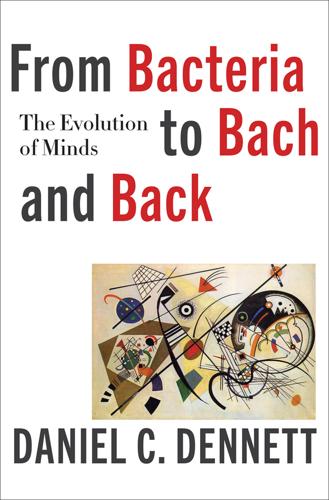
From Bacteria to Bach and Back: The Evolution of Minds
by
Daniel C. Dennett
Published 7 Feb 2017
Like GOFAI before it, nanotechnology began as top-down intelligent design, a brilliant method for hand making large inventories of “miracle drugs, “smart materials,” and other nanorobots. It has had triumphs and will surely have many more, especially with the new nanotool of CRISPR at its disposal (see, for a brief nontechnical introduction, Specter 2015). Like PCR (polymerase chain reaction), the technique that revolutionized gene sequencing, CRISPR, which permits genes to be edited and spliced together more or less ad lib, replaces highly sophisticated and laborious techniques, a labor-saving invention that reduces the time and effort required by orders of magnitude.
…
So far, there is a fairly sharp boundary between machines that enhance our “peripheral” intellectual powers (of perception, algorithmic calculation, and memory) and machines that at least purport to replace our “central” intellectual powers of comprehension (including imagination), planning, and decision-making. Hand calculators; GPS systems; Pixar’s computer graphics systems for interpolating frames, calculating shadows, adjusting textures and so forth; and PCR and CRISPR in genetics are all quite clearly on the peripheral side of the boundary, even though they accomplish tasks that required substantial expertise not so long ago. We can expect that boundary to shrink, routinizing more and more cognitive tasks, which will be fine so long as we know where the boundary currently is.
…
Not Waving but Drowning; Poems. London: A. Deutsch. Sober, Elliott, and David Sloan Wilson. 1995. “Some Varieties of Greedy Ethical Reductionism.” In DDI, 467–481. Sontag, Susan. 1977. On Photography. New York: Farrar, Straus and Giroux. Specter, Michael. 2015. “The Gene Hackers: The Promise of CRISPR Technology.” New Yorker, Nov. 16, 52. Sperber, Dan, ed. 2000. Metarepresentations: A Multidisciplinary Perspective. Oxford: Oxford University Press. Sperber, Dan, and Deirdre Wilson. 1986. Relevance: Communication and Cognition. Cambridge, Mass.: Harvard University Press. Sterelny, Kim. 2003. Thought in a Hostile World: The Evolution of Human Cognition.

System Error: Where Big Tech Went Wrong and How We Can Reboot
by
Rob Reich
,
Mehran Sahami
and
Jeremy M. Weinstein
Published 6 Sep 2021
The goal is to bring about a greater sense of professional identity so that norms that guide the work of technologists will serve as a mechanism for policing bad behavior that sits outside the official sanction of the law. Take the example of the Chinese biologist He Jiankui. In 2018, He used a powerful new gene-editing procedure called CRISPR to edit the genome of twin girls while they were still just embryos. CRISPR’s chief discoverers, Jennifer Doudna and Emmanuelle Charpentier, who won the Nobel Prize in Chemistry in 2020 for their breakthrough, recognized its potential for misuse. Doudna was motivated by a nightmare that haunted her: “Suppose somebody like Hitler had access to this—we can only imagine the kind of horrible uses he could put it to.”
…
A number of groups, such as the European Union’s High-Level Expert Group on Artificial Intelligence, have called for responsible publication guidelines that would identify when researchers should limit the release of new AI models. In the absence of such guidelines, we’ll continue to see controversy. As in the case of CRISPR, progress will require that the field’s most prominent scientists take a leading role. Yet Google’s firing in 2020 of Timnit Gebru, a leading AI ethics researcher, raises questions about the willingness of tech companies to accept the ethical critiques of those within their own ranks. Equally important is the development of norms that sanction rule breakers.
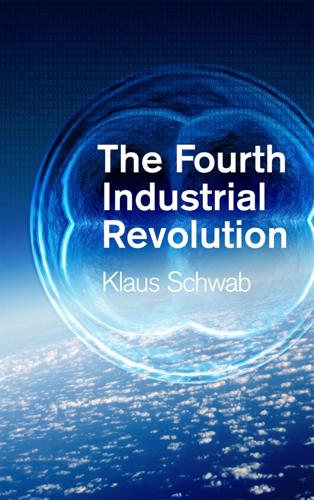
The Fourth Industrial Revolution
by
Klaus Schwab
Published 11 Jan 2016
The list of potential applications is virtually endless – ranging from the ability to modify animals so that they can be raised on a diet that is more economical or better suited to local conditions, to creating food crops that are capable of withstanding extreme temperatures or drought. As research into genetic engineering progresses (for example, the development of the CRISPR/Cas9 method in gene editing and therapy), the constraints of effective delivery and specificity will be overcome, leaving us with one immediate and most challenging question, particularly from an ethical viewpoint: How will genetic editing revolutionize medical research and medical treatment? In principle, both plants and animals could potentially be engineered to produce pharmaceuticals and other forms of treatment.
…
The human genome project spent $2.7 billion to produce the first entire genome in 2003. By 2009 the cost per genome was down to 100k while today it is possible for researchers to pay a lab specialising in such matters only $1000 to sequence a human genome. A similar trend has occurred more recently in genome editing with the development of the CRISPR/Cas9 method, which is being widely adopted due to its higher effectiveness and efficiency and lower cost than previous approaches. The real revolution is hence not the sudden ability for dedicated scientists to edit the genes of plants and animals, but rather the increased ease that new sequencing and editing technologies provide, vastly increasing the number of researchers who are able to conduct experiments Positive impacts – Higher agricultural yields thanks to crops and crop treatments which are more robust, effective and productive – More effective medical therapies via personalised medicine – Faster, more accurate, less invasive medical diagnostics – Higher levels of understanding of human impact on nature – Reduced incidence of genetic disease and related suffering Negative impacts – Risk of interaction between edited plants/animals human/environmental health – Exacerbated inequality due to high cost of access to therapies – Social backlash or rejection of gene editing technologies – Misuse of genetic data by governments or companies – International disagreements about ethical use of genome editing technologies Unknown or cuts both ways – Increased longevity – Ethical dilemmas regarding nature of humanity – Cultural shifts The shift in action “In March 2015, leading scientists publish a Nature article calling for a moratorium on editing human embryos, highlighting “grave concerns regarding the ethical and safety implications of this research”.
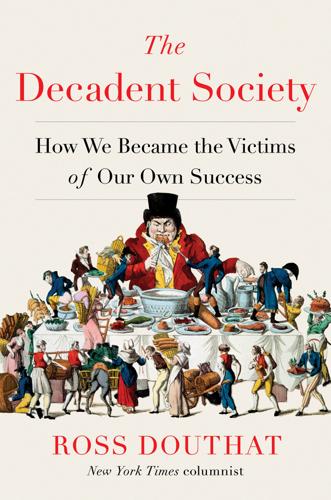
The Decadent Society: How We Became the Victims of Our Own Success
by
Ross Douthat
Published 25 Feb 2020
Or to use Cowen’s favored metaphor, if we have plucked most of the low-hanging fruit that the industrial revolution made possible to reach, there might still be a ladder that someone could invent that would make the higher branches suddenly easier to reach, and for all we know, that ladder might be being extended even now. In which case, we will look back on our present decadence as simply a lull—a period when innovation slowed temporarily before self-driving cars and CRISPR and nanotech and private spaceflight sent it surging forward once again. That possibility will be considered in more detail later. But the lull is still the multigenerational reality right now, and human history offers no reassurance that it will necessarily end. As Gordon and Cowen note, it’s the great surge of innovation in recent Western history that’s the historical anomaly, not the disappointing years since our great leap moonward.
…
A robotics revolution that radically reduces the amount of human labor required to pile up wealth, with both utopian consequences (Keynes’s vision of a short workweek becomes a reality, leisure becomes the default state of life) and destabilizing ones (the rich keep working for reasons of status competition, mass unemployment stalks everybody else). A revolution in medicine and biotechnology that changes the way we do, well, just about everything, by extending life spans (starting with the long-promised cures for Alzheimer’s disease and cancer), rewriting reproduction (today, CRISPR, the next day artificial wombs), and enabling genetic engineering on a species-altering scale. A revolution in space flight that gives us real space tourism, moon bases, and eventually a colony on Mars. A revolution in artificial intelligence and the study of consciousness that does the same, only more so, by enabling human beings to escape the physical plane altogether.
…
There is a possible future where it becomes clear that the real bottleneck—the real source of temporary technological decadence—wasn’t technological proficiency so much as a dearth of societal ambition and centralized incentives and unsqueamishness about moral considerations. In this scenario, it would be Chinese scientists, subsidized and encouraged by an ambitious government and unencumbered by residual Christian qualms about certain forms of experimentation, who take the great leap from today’s CRISPR work to tomorrow’s more-than-human supermen—and suddenly the world would enter a scenario out of the original Star Trek timeline and its predicted Eugenics Wars, with a coterie of Khan Noonien Singhs in power in Beijing and the rest of the world trying to decide whether to adapt, surrender, or resist.
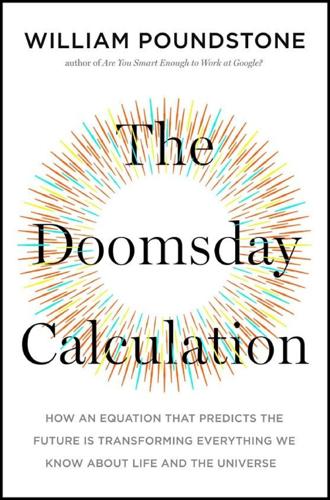
The Doomsday Calculation: How an Equation That Predicts the Future Is Transforming Everything We Know About Life and the Universe
by
William Poundstone
Published 3 Jun 2019
Any answer to that question must consider biohackers, a subculture of hobbyists not bound by the safety and ethical guidelines of academic biology. Biohacker Josiah Zayner claims he was the first person to try to modify his own genome with CRISPR, the gene-editing technology. In a 2017 article Zayner was quoted as saying, “I want to live in a world where people get drunk and instead of giving themselves tattoos, they’re like, ‘I’m drunk, I’m going to CRISPR myself.’” The Metastable Vacuum Other disturbing thoughts center on unfortunate physics experiments. The protons and neutrons of atomic nuclei are themselves composed of smaller particles known as quarks.
…
The God Particle: If the Universe Is the Answer, What Is the Question? Boston: Houghton Mifflin, 1993. Lee, Jennifer Lauren. “TeV Revs Up, Operators Troubleshoot, Fight Raccoons.” Fermilab Today, June 19, 2006. bit.ly/1QFp7yw. Lee, Stephanie M. “This Guy Says He’s the First Person to Attempt Editing His DNA with CRISPR.” BuzzFeed News, October 14, 2017. Lerner, Eric J. “Horoscopes for Humanity.” New York Times, July 14, 1993. Leslie, John. “The end of the World is not nigh” (letter). Nature 387 (1997): 338–339. . The End of the World: The Ethics and Science of Human Extinction. London: Routledge, 1996. . Infinite Minds: A Philosophical Cosmology.
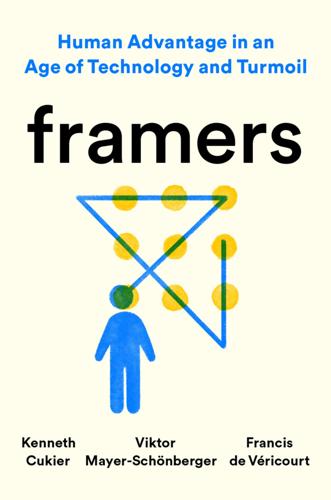
Framers: Human Advantage in an Age of Technology and Turmoil
by
Kenneth Cukier
,
Viktor Mayer-Schönberger
and
Francis de Véricourt
Published 10 May 2021
In the 1980s, researchers found that simple cells like bacteria have their own molecular-size immune systems. In fact, they are able to “remember,” identify, and destroy genetic information that is not part of the cell. Researchers called this system CRISPR (for “clustered regularly interspaced short palindromic repeats”). In 2012 Charpentier and Doudna—two female scientists in a testosterone-infused domain—were investigating a specific area of the cell’s CRISPR system when a lab researcher noticed that there was a way to cut into a specific area of the DNA. Charpentier and Doudna realized these molecular scissors could be turned into a versatile and powerful tool to edit genetic information.
…
Abaaoud, Abdelhamid, 213–214 abstraction and generalization causality and, 53–54 as defining characteristics of human cognition, 211 mental models made from ability of, 54–55, 59 as necessary for ambition and transcendence, 55 pattern recognition and, 56 relationship between, 64 accountability, 64, 65–66 Adair, John, 46 Adichie, Chimamanda Ngozi, 84 agency causality and, 65 counterfactuals and, 91 explainability as foundation of, 64 framing as empowering, 27 framing as ideal for efficiently preparing for, 208–209 mental models and, 9 mutability and, 107 number of constraints and, 118, 141 privileging human inaction and, 110 responsibility and, 65–66 social structures and, 66 agility of mind, 215–218 airplanes, development of, 36–38 All Quiet on the Western Front (Remarque), 83–84 AlphaZero system, 17–18 alternative realities constraints and shaping, 100–103 contradictions in, 110–111 counterfactuals and, 12–13, 79, 82–86, 94 envisioning, and shaping future, 94–95 existence of more than one, 159 framing and envisioning, 9, 79, 90, 94 minimal-change principle and, 108 monocultures and, 186 Amazon business model, 133–134 ambition and abstraction and generalization, 55 Americanah (Adichie), 84 Ansari, Anousheh, 194 antibiotics, ineffectiveness of, 1–2 Apple framing by teams at, 164–165 inspiration for computer system, 159 leadership of, ability to frame differently, 149, 150–151 Nokia versus, 6–7 Ardern, Jacinda, 32 Arendt, Hannah, 173–174, 180–181, 197, 198 Aristotle, 84–85 Armstrong, Neil, 34 artificial intelligence (AI) cannot conjure constraints, 118 e-sports, 69–70 failure to see causality, 45 generated music, 118–119 human element in, 93, 211 hyper-rationalists’ reliance on, to solve problems, 15–16 inability of, to frame, 44, 45–46 lack of imagination, 119 as reinforcing significance of framing, 211 self-driving cars, 92–93 arts AI-generated music, 118–119 business model for music industry, 120 constraints and, 100–103, 111–113 as constructed counterfactual realities, 82–85 imagination and, 82–85 mental models and, 11 Austrian wine industry, 108–109 Bach, Johann Sebastian, 118–119 Barzilay, Regina, 2–3, 4–5, 19, 211 Bay of Pigs invasion, 89, 234 Bernanke, Ben “Helicopter Ben,” 49–51, 101 Bezos, Jeff, 134 Black-Scholes theory, 39–40 Blue Ocean Strategy, 35 Branscomb, Lewis, 161 Brin, Sergey, 194 Bronner, Gérald, 213, 214 Brunelleschi, Filippo, 11 Burt, Ronald, 157 Bush, George W., 49 business and management Amazon, 133–134 benefits of mental diversity within, 161–166, 241–242 case study method of education, 86, 87–88, 155 difficulties changing corporate culture, 170–171 mental models and, 35 monocultures and death of, 182–183 music industry model, 120 reform of traditional pedagogical method in schools, 149–150 Silicon Valley versus East Coast technology titans, 183, 185–186 “thinking outside the box,” 46 Byrne, Ruth, 90, 110 Camden, New Jersey, police force, 134–136 Cappelli, Louis, Jr., 135 carbon dioxide and climate, 74–76, 168 “carbon sinks,” 76 Carcraft, 93 Carter, Jimmy, 116 Cassandras, 167–168 Cassirer, Ernst, 25 Catmull, Ed, 167–168 “causal determinism,” 88–89 causality ability to abstract from direct observation and, 53–54 agency and, 65 AI’s failure to see, 45 children and, 80–82 coincidence and, 66–67 correlation and, 68 counterfactuals and, 77, 79, 90 enables comprehension and explainability of reality, 52, 60 as foundation of human cognition, 12 in framing, 88–90 input of humans needed for technology to outperform humans, 70 needed for application of mental models, 62 predictability with, 52 reactions resulting from, 53 as result of being part of society, 58 scientific methodology prevents wrong inferences made from, 12 skepticism about, 68 statisticians and, 68 ultra-emotionalists and, 68–69 causal reasoning, 55 Cerf, Bennett, 101–102 Charging Bull statue, 198–199 Charpentier, Emmanuelle, 137 Chollet, François, 211 Churchill, Winston, 41 “Circumstances Affecting the Heat of the Sun’s Rays” (Foote), 73–74 clean-slate strategy, 158–160, 241 climate and carbon dioxide, 74–76, 168 Coconet, 118–119 cognitive complexity, 161 “cognitive effort,” 110 “cognitive foraging,” 156–158, 160 cognitive niche, 57, 58, 59, 230 “Cognitive Wheels” (Dennett), 44–45 coincidence and causality, 66–67 Collins, Jim, 2–3 Collison, Patrick, 185 Computers as Theatre (Laurel), 85 consistency principle, 110–114 constraints agency and number of, 118, 141 application method, 120–121 application of too many, 45 as boundaries on alternative realities, 100–103 changing, 201–202 consistency of, 104, 110–114 current reality as impacted by, 117–118 enable identification of viable options, 117 goal of, 114 hard, described, 104 imagination and, 47, 220 importance to counterfactuals of, 13, 115 increase agency, 118 as liberating, 100–103 minimal, 104 minimal-change principle and, 108–110 mutability of, 104–107, 110 space exploration and, 105 technology cannot conjure, 118 control, 64, 65–66 Cook, Tim, 151 Cooper, Sarah, 201–202 correlation and causality, 68 counterfactuals agency and, 91 alternative realities and, 12–13, 79, 82–86, 94 causality and, 77, 79, 90 causal link between carbon dioxide and climate and, 74–75 children and, 80–82 cognitive homogeneity as death of, 207 as counterbalance to “causal determinism,” 88–89 as crucial to progress by enabling what-if questions, 12–13 described, 12 in education, 86–88 finding relevant, 45 focused and goal-oriented nature of, 76 as form of evolution, 93–94 functionality of, 94 imagination and, 76, 79, 90 implicit knowledge and, 90–91 literature and art, 82–85 minimal-change principle and, 109–110 mutable constraints and, 106 omitting versus adding mutable action and, 110 thinking in, as natural for humans, 77 Coupland, Douglas, 112 Covid-19, framing of, 31–33 Craik, Kenneth, 226 creativity. See imagination Crick, Francis, 132 CRISPR, 137 Cuban missile crisis, 89–90 “cultural niche,” 58 Cuusoo, 165–166 “Cyclopedia of Puzzles,” 46 Dabiq, 213 Darwin, Charles, 7, 131 data, effect of frame applied to, 6 Days of Destruction, Days of Revolt (Hedges and Sacco), 135 decision-making framing as fundamental to, 5, 8 influence of different characterizations of outcomes, 10 mental models reduce cognitive load by focusing mind, 11–12 values in, 39–40 “deep reinforcement learning,” 70 Defense of the Ancients 2 (Dota 2), 69–70 Dennett, Daniel, 44–45 Descartes, René, 16 DeVore, Irven, 230 Diamond, Jared, 183–184 Dick, Philip K., 111 “diversity dividend,” 161–166 Donham, Wallace, 87, 156, 240 Doudna, Jennifer, 137 Earhart, Amelia, 160 Easy Solar, 203–204 Ebola, misframing of, 30–31, 32 economy.

The Singularity Is Nearer: When We Merge with AI
by
Ray Kurzweil
Published 25 Jun 2024
BACK TO NOTE REFERENCE 116 For a great nontechnical explainer on cellular reproduction, see Hank Green, “Mitosis: Splitting Up Is Complicated—Crash Course Biology #12,” CrashCourse, YouTube video, April 16, 2012, https://www.youtube.com/watch?v=L0k-enzoeOM. BACK TO NOTE REFERENCE 117 For a short introduction to CRISPR, one of the most promising gene-editing approaches within the current paradigm, see Brad Plumer et al., “A Simple Guide to CRISPR, One of the Biggest Science Stories of the Decade,” Vox, updated December 27, 2018, https://www.vox.com/2018/7/23/17594864/crispr-cas9-gene-editing. BACK TO NOTE REFERENCE 118 Eveleth, “There Are 37.2 Trillion Cells in Your Body.” BACK TO NOTE REFERENCE 119 For an introductory overview of this process, see “Regulation of Gene Expression: Operons, Epigenetics, and Transcription Factors,” Professor Dave Explains, YouTube video, October 15, 2017, https://www.youtube.com/watch?
…
Simulations will be able to find numerous such correlations, yielding highly specific risk-benefit profiles for each individual patient. The introduction of this technology will be gradual because the computational demands of biological simulations will vary among applications. Drugs consisting mainly of a single molecule are at the easier end of the spectrum and will be first to be simulated. Meanwhile, techniques like CRISPR and therapies intended to affect gene expression involve extremely complex interactions between many kinds of biological molecules and structures and will accordingly take longer to simulate satisfactorily in silico. To replace human trials as the primary testing method, AI simulations will need to model not just the direct action of a given therapeutic agent, but how it fits into a whole body’s complex systems over an extended period.
…
See brain-computer interface computer programming, 50, 60, 124, 160 “Computing Machinery and Intelligence” (Turing), 12 computronium, 8, 68 Concorde, 113 connectionism, 14, 18, 26–29, 40–41, 54 connectomic emulations, 104 consciousness, 1, 7, 75–82 AI, 65 of animals, 75, 76, 77–78, 80 causal explanation of, 80–82 origins of, 78 overview of, 75–79 replicants and, 103 subjective, 62, 76–80, 81, 93, 94 use of drugs to alter, 109 use of term, 76 “You 2” conscious, 90–94, 102, 103 zombies, qualia, and hard problem of, 79–82 conspiracy theories, 227–28, 273 consumer surplus, 212, 213 contact lenses, 222 containerization, 204 contextual memory, 55 Conway’s Game of Life, 83–86 Coolidge, Calvin, 232 cooperation, 153 Core 2 Duo E6300, 166, 308–9 Cornell University, 27 corn production, 180 cosmetics, 109 COVID-19 pandemic, 135, 271–73 AI and medicine, 227, 237–38, 240, 278 biotechnology risks, 271–73 income and poverty, 139, 143, 144, 200 labor force, 146, 147, 215, 216 misinformation about, 227, 273 social safety spending, 223, 224 teleworking, 146, 172 COVID-19 vaccines, 227, 237–38, 240, 273 Craigslist, 218 creativity, 38, 48, 221 Cretaceous-Paleogene extinction event, 34 crime, 148–54, 233 actual US rates, 119 homicide in US, 151 homicide rates in Western Europe since 1300, 149 pollution and, 150–51, 233 public perception of, 118, 118–20, 152, 233 racial disparities and policing, 150 violent crime in US, 151 CRISPR, 241 crop densities, 180 crossword puzzles, 64, 326n cruise missiles, 270 cryptocurrencies, 217–18 cryptogenic strokes, 262 Ctrl Shift Face, 100 cultured meat, 169–70, 171 Curtiss, Susan, 88–89 cyberattacks, 193 cybersecurity, 228 Cycorp, 17 D Dafoe, Willem, 100 Dalí, Salvador, 49 DALL-E, 49–50, 221 DALL-E 2, 209 Dartmouth College workshop on AI, 12–13, 14 Darwin, Charles, 38–39, 48 data collection and analysis, 58–59 Data General Nova, 165, 301 data mining, 102 dating apps, 232 Dawkins, Richard, 334n decentralized manufacturing, 173, 185–87 DEC PDP-1, 15, 165, 300 DEC PDP-4, 165, 300–301 DEC PDP-8, 165, 301 Deep Blue.

Imaginable: How to See the Future Coming and Feel Ready for Anything―Even Things That Seem Impossible Today
by
Jane McGonigal
Published 22 Mar 2022
Try to have a bit of balance in your list—at least one of the forces you pick should feel like a risk to you, and at least one should feel like an opportunity: the climate crisis post-pandemic trauma social justice movements increasing economic inequality social and political tensions caused by refugee crises and mass migration automation of work decreasing birthrates in Western countries and a “youth boom” in Africa shifting religious majorities and increasing theological diversity the global switch to renewable energy sources alternatives to capitalism and market-based economies social media–driven misinformation, disinformation, and conspiracy theories rise of authoritarianism and loss of faith in democracy widespread adoption of facial recognition and surveillance technologies digital currencies, cryptocurrency, and programmable money universal basic income and direct cash transfers internet shutdowns mandated by government or law enforcement the “right to disconnect” movement and four-day workweeks lifelong learning and “reskilling” at the workplace job guarantees regenerative design and the circular economy genomic research and CRISPR genetic modification the Internet of Things augmented and virtual reality satellite networks and space internet If there’s something on the institute’s list above that you don’t know anything about at all, this is the perfect opportunity to go find your first clue. Just do an internet search for any future force.
…
It’s supposed to help prevent future pandemics, but ironically it may actually cause them. Is such risky science truly necessary? And given the potential global consequences of a lab accident leading to a new virus outbreak, shouldn’t there be a way for the rest of the world to weigh in on whether the potential benefits outweigh the potential harms?15 Likewise, CRISPR genetic modification technologies could change what it means to be human. Shouldn’t more than just a few scientific bodies or government officials have a chance to weigh in on what kinds of experiments and modifications we feel comfortable with, and which ones go far beyond our moral boundaries?16 Or consider the work of the Search for Extraterrestrial Intelligence (SETI) and its offshoot Messaging Extraterrestrial Intelligence.
…
It’s Possible,” SBS, July 14, 2016, https://www.sbs.com.au/topics/science/humans/article/2016/07/13/children-two-genetic-fathers-its-possible. 3 Maya Wei-Haas, “Same-Sex Mouse Parents Give Birth via Gene Editing,” National Geographic, October 11, 2018, https://www.nationalgeographic.com/science/article/news-gene-editing-crispr-mice-stem-cells. 4 Elie Dolgin, “Making Babies: How to Create Human Embryos with No Egg or Sperm,” New Scientist, April 11, 2018, https://www.newscientist.com/article/mg23831730-300-making-babies-how-to-create-human-embryos-with-no-egg-or-sperm/#ixzz6rkam5LuX. 5 Gina Kolata, “Scientists Grow Mouse Embryos in a Mechanical Womb,” New York Times, March 17, 2021, https://www.nytimes.com/2021/03/17/health/mice-artificial-uterus.html. 6 Elizabeth Chloe Romanis, “Artificial Womb Technology and the Frontiers of Human Reproduction: Conceptual Differences and Potential Implications,” Journal of Medical Ethics 44, no. 11 (November 2018): 751–75, http://dx.doi.org/10.1136/medethics-2018-104910. 7 Shanna H.

AI 2041: Ten Visions for Our Future
by
Kai-Fu Lee
and
Qiufan Chen
Published 13 Sep 2021
But during my more than ten years working in tech, I encountered many engineers and technologists who were not-so-secret fans of speculative fiction. This enthusiasm sometimes manifested in meeting rooms with names like “Enterprise” or “Neuromancer,” but it also was present among the formidable minds behind projects like Google X and Hyperloop. From the modern submarine to the laser gun, and from mobile phones to CRISPR, scientists will readily admit they got direct inspirations from fiction. Imagination indeed shapes the world. From the beginning, I decided that AI 2041 would challenge the stereotype of the dystopian AI narrative—the kind of tale where the future is irrevocably bleak. Without disregarding AI’s faults or nuances, Kai-Fu and I endeavored to portray a future where AI technology could influence individuals and societies positively.
…
Every time there was a new variant, the medical researchers developed new mRNA vaccines in response. The immunity of antibodies lasted somewhere between 40 weeks and 104 weeks. Fortunately, with the help of AI in predicting protein structure, the process of developing vaccines had been greatly accelerated. CRISPR technology, moreover, had made the mass production of antibody drugs a possibility, so that large animals such as cows and horses could benefit from the vaccines as well. A person’s vaccine expiration dates and types of vaccines were documented as a part of their digital health profile, and they were required to show proof of their vaccination record when taking transportation or accessing public places and services.
…
Digital polymerase chain reaction (dPCR) can accurately detect pathogens (e.g., COVID-19) and gene mutations (e.g., new cancer markers). Next-generation sequencing (NGS) enables rapid human genome sequencing, even though our genome is much too large for humans to read and interpret and perfectly suited for AI. CRISPR is a breakthrough technology for editing genes, which has the potential to eradicate many diseases in the future. Finally, drug and vaccine discovery are going digital and starting to be integrated with AI (much more on this later in this chapter). All of these are digital in nature and can be integrated with digital technologies like AI, leading to significant improvements in healthcare.

A Dominant Character
by
Samanth Subramanian
Published 27 Apr 2020
These questions of ethics must be debated seriously and soon; technology will not wait for them to be resolved before it takes its next steps. Already, CRISPR, an enzymatic tool, enables scientists to edit the genetic code—to add to it, to subtract from it, to adjust its sequences of nucleotides. University labs and companies have started to deploy CRISPR on human embryos, trying to modify their genomes, and in November 2018, a Chinese scientist claimed he had used CRISPR to create the world’s first genetically modified babies. China declared his work illegal, and other scientists looking into his work showed how imprecise and dangerous it was.
…
K., 141 children, 196, 197 Charlotte and Haldane’s interest in, 151 chlorine gas, 91 Christian clerics, 134 Christianity, 331 Churchill, Winston, 238, 241 Ciba Foundation, 311 civilization, science and, 143 Clarke, Arthur C., 4 class, 55–56 Haldane’s exposure to those outside his, 99 and military, 88 class warfare, 166 classics, Haldane’s love for, 81 Cloan (family home), 55–56 Cockburn, Patricia, 162 Cold War, 257 colonial thought, Haldane and, 98 color blindness, genetic mapping for, 3 Communism, 13 vs. fascism, 219 Haldane and, 220 science and, 169 Stalinist, 228 Communist International, 210 Communist Party of Great Britain (CPGB), 5, 25, 168, 178 Charlotte’s departure from, 229 Haldane leaving, 279 headquarters, and Haldane’s speech on Lysenko, 264 continuous variation, 112 Copeman, Fred, 216–17 Cornforth, Maurice, 266 correlation, 130 Council of Scientific and Industrial Research (CSIR), 297 courage, J.B.S. on, 87 cowardice, 99 Cowles, Virginia, 214, 217, 218 Crew, F. E. A., 194 criminality, inheritance of, 136 CRISPR, 315–16 Crow, James F., 180 crypto-Communist, 220 Cuénot, Lucien, 124 Daedalus, 140–44 Daily Express, 146, 161 Daily Mail, 155 Daily Mirror, 244–45 Daily Telegraph, 155 Daily Worker, 5, 23, 180–81, 211, 267 attack on ban, 251 banning publication, 240–41 building destruction by bombing, 241 educational commentaries, 266 Haldane as editorial board chair, 240 mandate, 185 Dale, Henry, 262 Damant, G.

Possible Minds: Twenty-Five Ways of Looking at AI
by
John Brockman
Published 19 Feb 2019
“The safest path by far is getting humans to do all the tasks that they would like to delegate to machines, but we’re not yet firmly on that super-safe path.” More recently, his crucially important pioneering use of the enzyme CRISPR (as well as methods better than CRISPR) to edit the genes of human cells is sometimes missed by the media in the telling of the CRISPR origins story. George’s attitude toward future forms of artificial general intelligence is friendly, as evinced in the essay that follows. At the same time, he never loses sight of the AI-safety issue. On that subject, he recently remarked: “The main risk in AI, to my mind, is not so much whether we can mathematically understand what they’re thinking; it’s whether we’re capable of teaching them ethical behavior.

Net Zero: How We Stop Causing Climate Change
by
Dieter Helm
Published 2 Sep 2020
LIST OF ABBREVIATIONS AI, artificial intelligence BSE, bovine spongiform encephalopathy CAP, Common Agricultural Policy CBA, cost–benefit analysis CCC, Committee on Climate Change CCS, carbon capture and storage CEGB, Central Electricity Generating Board CfD, Contract for Difference COP, Conference of the Parties CRISPR, clustered regularly interspaced short palindromic repeats DECC, Department of Energy and Climate Change Defra, Department for Environment, Food and Rural Affairs DDT, Dichlorodiphenyltrichloroethane DETR, Department of the Environment, Transport and the Regions DNO, distribution network operator EFP, equivalent firm power EMR, Electricity Market Reform EU ETS, EU Emissions Trading System GDP, gross domestic product GMO, genetically modified organism GW, gigawatt HS2, a planned high-speed rail project for England ICT, information and communications technology IEA, International Energy Agency IEM, Internal Energy Market IP, intellectual property IPCC, Intergovernmental Panel on Climate Change LED, light-emitting diode LNG, liquefied natural gas mbd, million barrels per day MPC, Monetary Policy Committee NDC, nationally determined contribution NFU, National Farmers’ Union OPEC, Organization of the Petroleum Exporting Countries ppm, parts per million PV, photovoltaics R&D, research and development RAB, regulated asset base SUV, sport utility vehicle TWh, terawatt-hour UNFCCC, United Nations Framework Convention on Climate Change USO, universal service obligation VAT, value-added tax WTO, World Trade Organization INTRODUCTION It is not going well.
…
Flowing on from the mapping-out of the human genome, this technology now expands into the possible genome of every living thing. It is an obvious next step to try to move on from old processes of selection by breeders, which have given us most of our agricultural species, to modifying them. Two types of genetic management have emerged: gene editing and genetic modification. One version of the first is CRISPR (clustered regularly interspaced short palindromic repeats), and the second goes under the general heading of GMOs (genetically modified organisms).[11] The former is already part of medicine and plant and animal science. If a faulty gene is discovered, the ‘editor’ switches it off or cuts it out.
…
acid rain 25, 194 Africa xiv, xv, 2, 25, 30, 38, 44, 45, 47, 48, 51, 137, 229 agriculture 2, 6, 12, 13, 14, 23, 35–6, 43, 44–5, 70, 76, 86, 87–8, 95, 100, 102, 109, 116, 146–7, 149, 159, 163–80, 181, 183, 192, 197, 198, 206, 220 baseline, the 164–8 biodiversity loss and 2, 5, 100, 164, 165, 168, 169, 171, 172, 174, 180 biofuels and 197–8 carbon emissions and 2, 12, 13, 35–6, 76–7, 146–7, 163–80 carbon price and 167–70, 171, 172, 173, 180 China and 28–9, 35, 45, 180 economics of 76, 165, 166–7, 171, 174 electricity and 13, 166, 168, 174, 178, 180 fertiliser use see fertiliser lobby 14, 110, 164, 165, 169, 170, 197 methane emissions 23, 84, 177, 178, 179 net gain and 172–4 net value of UK 76, 166 new technologies/indoor farming 87–8, 174–9, 180, 213 peat bogs and 2, 179 pesticide use see pesticides petrochemicals and 166 polluter-pays principle and 76, 168–70, 172, 173 pollution 36, 86, 163, 165–6, 168–70, 172, 173, 177–8, 230 public goods, agricultural 170–4, 180 sequestering carbon and 12, 95, 163, 166, 168, 169, 170, 171, 172, 173–4, 177, 179, 180 soils and 2, 146, 163, 164, 165, 166, 168, 169, 171, 172, 175, 179 subsidies 14, 76, 102, 109, 116, 164, 165, 166, 167, 169, 170, 172, 180, 228 25 Year Plan and 179–80 Agriculture Bill (2018), UK 170 air conditioning 135–6, 224, 233 air quality xiii, 13, 25, 46, 52, 61, 70, 135, 153, 177, 180, 201, 216, 230, 232 air transport 3–4, 6, 11, 13, 22, 50, 53, 73, 87, 88, 92, 107, 125, 128, 129, 132, 133, 134, 149, 156–7, 186, 195, 201, 203–5 aluminium 7, 117 Amazon rainforest 2, 34, 35, 95, 145, 149–50, 151, 155, 229, 230 ammonia 35, 137, 191 anaerobic digesters 35, 165, 230 animal welfare 167, 177 antibiotics 93, 165, 174 Arctic 26, 46, 114, 178 artificial intelligence (AI) 32, 175, 220, 231 autonomous vehicles 13, 129, 132, 175, 189–90, 231 Balkans 137–8 Bank of England 121 batteries 6, 31, 131, 135, 141, 183, 184, 185–90, 191, 199, 204, 213, 214, 219, 220, 221, 225, 231 beef 5, 95, 116, 117, 167, 230 Berlin, Isaiah 104 big 5 polluter products 117–18, 120 bin Salman, Mohammad 27 biocrops 36 biodiversity xiv, 2, 5, 12, 13, 28, 35, 51, 76, 94, 100, 148, 149, 152, 153, 158, 159, 164, 165, 168, 169–70, 171, 172, 174, 180, 227, 233 bioenergy 31, 34–5, 36 biofuels 21, 35, 49, 50, 67, 70, 95, 135, 183, 184, 197–8, 210, 230 biomass 32, 34, 49, 50, 67, 69, 109, 146, 147, 151, 210, 217 bonds, government 220 BP 27, 149, 187, 199 Deepwater Horizon disaster, Gulf of Mexico (2010) 147 Brazil 2, 35, 38, 44–5, 47, 95, 145, 149–50, 155, 198 Brexit 42, 47, 56, 117, 165 British Gas 102, 139 British Steel x, 194 broadband networks 6, 11, 90, 92, 125, 126, 127–8, 130–1, 132–3, 135, 140–1, 199, 201, 202, 205, 211, 214, 231, 232 Brundtland Commission 45 BT 127–8, 141 Openreach 214 Burn Out (Helm) ix, xiv Bush, George W. 36, 48, 53, 103 business rates 76, 165 Canada 52, 191, 193 capitalist model 26, 42, 99, 227 carbon border tax/carbon border adjustment xii, 11, 13, 60, 80, 115–20, 194–6, 204 carbon capture and storage (CCS) xiv, 12, 75–6, 95, 109, 146, 147–8, 149, 154, 159, 203–4, 207, 209, 222, 223 Carbon Crunch, The (Helm) ix, xiv, 221 carbon diary 4–5, 8, 10, 11, 64–6, 83, 86, 116, 143, 144, 155, 156, 167, 180, 181, 185, 203, 205 carbon emissions: agriculture and see agriculture by country (2015) 30 during ice ages and warm periods for the past 800,000 years 21 economy and 81–159 electricity and see electricity global annual mean concentration of CO2 (ppm) 19 global average long-term concentration of CO2 (ppm) 20 measuring 43–6 since 1990 1–14, 17–37 transport and see individual method of transport 2020, position in 36–7 UN treaties and 38–57 unilateralism and 58–80 see also unilateralism carbon offsetting xiii–xiv, 4, 5, 12, 34, 45, 72, 74, 79, 94–6, 97, 105, 143–59, 192, 201, 203, 207, 214, 222, 223, 234 for companies 148–50 for countries 151–5 for individuals 155–7 markets 71–2, 110–13, 117, 144, 157–9, 208 travel and 156, 201–3 see also sequestration carbon permits 71–2, 79, 110–13, 117, 144, 208 carbon price/tax xii, xiii, xv, 8, 11, 12, 13, 26, 60, 61, 71, 72, 77, 79, 80, 84, 85–6, 102–3, 105, 106–24, 134, 143, 146, 147, 150, 151–4, 157, 159, 192, 197, 198, 199, 203, 227–30, 232, 234 agriculture and 167, 168, 169–70, 171, 173, 180 domain of the tax/carbon border adjustment xii, 11, 13, 60, 80, 115–20, 121, 124, 192, 194–6, 197, 204, 227 electric pollution and 216–18 ethics of 107–10 floor price 115, 117, 208 for imports 11, 13 prices or quantities/EU ETS versus carbon taxes 110–13 setting 113–15 transport and 192–9 what to do with the money 121–4 where to levy the tax 119–20 who fixes the price 120–1 carbon sinks 2, 5, 166, 169, 203 carboniferous age 34 cars 1, 3, 4, 7, 20, 22, 36, 44, 70, 73, 114, 129, 181, 182, 183, 184–5, 190, 191, 193, 196, 197, 198, 199 see also electric vehicles cartels 39, 40, 43, 45, 46, 47, 56 cattle farming 35, 36, 95, 150, 166, 167, 173, 177, 198 Central Electricity Generating Board (CEGB) 102, 139, 218 cement 6, 7, 26, 29, 34, 87, 117, 171 charging networks, electric vehicle 91, 129–30, 141–2, 184, 185–90, 199, 200, 202, 219 Chernobyl 78 China xi, xv, 1–2, 5, 8, 18, 42, 46, 47, 48, 64, 66, 74, 101, 180, 229 Belt and Road Initiative 28, 45 coal use 1–2, 8, 23–4, 24, 28, 31, 38, 117, 154, 206, 208 Communist Party 2, 27, 42, 46 demand for fossil fuels/carbon emissions 1–2, 8, 18, 20, 22, 23–4, 24, 25, 27–31, 36, 38, 51, 73, 117, 154, 206, 208 export market x–xi, 5, 9, 64, 66, 117, 155, 194 fertiliser use 35 GDP xv, 27, 29 nationalism and 42 petrochemical demand 22 renewables companies 9, 32, 73, 74, 77, 79 Tiananmen Square 42 unilateralism and 58, 59 UN treaties and 46, 47, 48, 53, 54, 55, 58, 59 US trade war 56, 118 Churchill, Winston 183 citizen assemblies 99–101 climate change: carbon emissions and see carbon emissions 1.5° target 38, 57 2° target 1, 10, 22–3, 28, 30, 38, 39, 45, 47, 54, 55, 57, 108, 122, 155, 206 see also individual area of climate change Climate Change Act (2008) 66, 74–7 Clinton, Bill 40, 48 Club of Rome 98 coal 1–2, 5, 8, 13, 20, 23–5, 28, 29, 30, 31, 32, 34, 36, 38, 50, 52, 53, 60–1, 67, 72, 77, 78–9, 101, 109, 112, 116, 117, 119, 134, 136, 145, 147, 148, 151, 154, 155, 182, 183, 194, 196, 206–9, 210, 212, 214, 216, 217, 218, 229, 230 coastal marshes 146, 159 colonialism 45 Committee on Climate Change (CCC), UK x–xi, 7, 74–5, 120, 164, 166, 169, 217, 235 ‘Net Zero: The UK’s Contribution to Stopping Global Warming’ report x–xi conference/video calls 6, 129, 156, 202, 205 Conference of the Parties (COP) xii, 10, 48, 50, 53–4, 55, 59, 205 congestion charges 198 Copenhagen Accord 48, 53–4, 59 Coronavirus see Covid-19 cost-benefit analysis (CBA) 71, 108, 110, 114, 138 cost of living 116 Covid-19 x, xi–xii, 1, 3, 6, 9, 18, 19, 22, 25, 27, 30, 37, 44, 46, 50, 57, 65, 69, 80, 89, 93, 129, 135, 148, 171, 201, 202, 204, 232 CRISPR 176 crop yields 172, 177 dams 2, 36, 52–3, 179 DDT (Dichlorodiphenyltrichloroethane) 100 deforestation 2, 5, 34, 35, 36, 38, 43, 44, 47, 55, 87, 95, 145, 146, 149–50, 155, 172–3, 179, 197–8, 229 Defra (Department for Environment, Food and Rural Affairs) 170 deindustrialisation x, 29, 46, 52, 54, 59, 72–4, 218 Deng Xiaoping 27 Denmark 69–70, 136–7 desalination 135–6, 179 diesel 4, 20–1, 70, 76, 86, 109, 119, 121, 129, 132, 164, 165, 166, 174, 175, 178, 179, 181, 182, 185, 186, 191, 192, 196–7, 208, 217, 230 ‘dieselgate’ scandal 196–7 digitalisation 1, 8, 11, 13, 33, 92, 117, 136, 174, 175, 180, 206, 211, 215, 221, 228–9, 231 DONG 69 Drax 147, 151, 154, 218 economy, net zero 10–12, 81–159 delivering a 96–103 intergenerational equity and 96–7 markets and 103–5 net environmental gain see net environmental gain political ideologies and 98–101 polluter-pays principle see polluter-pays principle public goods, provision of see public goods, provision of technological change and 98 EDF 139, 218 Ehrlich, Paul 98 electricity 1–2, 4, 6, 11, 12, 13, 23, 31, 32, 49, 53, 61, 65, 66, 68, 70, 73, 77, 78, 79, 91, 92, 101, 102, 109, 117, 125, 127, 128, 129–30, 131–2, 134, 135, 136, 137, 139, 140, 141, 149, 158, 166, 168, 174, 178, 180, 182, 183, 228, 229, 231, 232, 234, 235 coal, getting out of 206–7 electric pollution and the carbon price 216–18 electric vehicles 4, 6, 13, 20, 23, 49, 61, 91, 92, 94, 121, 125, 128, 129–30, 131–2, 134, 141, 183–92, 193, 194, 197, 200, 201, 202, 206, 219, 228 equivalent firm power auctions and system operators 210–16 future of 206–25 gas, how to get out of 207–9 infrastructure, electric 185–90, 218–20 low-carbon options post-coal and gas 209–10 net gain and our consumption 222–5 R&D and next-generation renewables 220–2 renewable see renewables Energy Market Reform (EMR) 219 equivalent firm power (EFP) 212–16, 217, 220 ethanol 35, 71, 95, 197 eucalyptus trees xiv, 152 European Commission 60, 71, 72, 112 European Union (EU) xiv, 2, 7, 8, 9, 37, 42, 44, 46, 47, 117, 137, 165, 166, 197; baseline of 1990 and 51–2 Common Agricultural Policy (CAP) 76, 165 competition regime and customs union 56 deindustrialisation and 46, 52, 54, 59, 72–4 directives for 2030 66 Emissions Trading System (EU ETS) 71–2, 73, 79, 110–13, 117, 144, 208 importing carbon emissions 59 Internal Energy Market (IEM) 68, 71 Kyoto and 9, 51, 59, 66–7 Mercosur Agreement 44, 95 net zero target for 2050 66, 115, 143, 155, 167, 180 Paris and 54 Renewable Energy Directive 68–71, 73, 109 2020 targets signed into law 66 2020–20–20 targets 67, 69, 74 unilateralism and 59, 66–71, 80 Eurostar 133 externalities 104, 170, 180, 196 Extinction Rebellion 6 farmers 14, 26, 35, 36, 43, 71, 76, 86, 95, 102, 109, 110, 146–7, 164, 165, 166, 169, 170, 174, 175, 196, 197, 198 fertiliser 4, 6, 7, 26, 29, 35, 61, 73, 86, 87, 116, 117, 119, 163, 165, 169, 174, 175, 178, 179, 191, 194, 197 fibre/broadband networks 6, 11, 90, 92, 125, 126, 127–8, 130–1, 132–3, 135, 140–1, 201, 202, 205, 211, 214, 231, 232 financial crisis (2007/8) 1, 19, 69 first-mover advantage 75 First Utility 199 flooding 13, 77, 149, 152, 153, 159, 170, 233 food miles 167 food security 170–1 food waste 178, 180, 231 Forestry Commission xiv Formula One 186, 196 fossil fuels, golden age of 20–5 see also individual fossil fuel France 46, 47, 52, 56, 73, 78, 101, 113, 130, 136, 138 free-rider problem 39–40, 43, 62–4, 106, 119 fuel duty 121, 195–6 fuel efficiency 197 fuel prices 26, 112–13, 209 fuel use declaration 195 Fukushima Daiichi nuclear disaster (2011) 52, 78 Fukuyama, Francis: The End of History and the Last Man 40–1 gardens 6, 43, 143, 156 gas, natural ix, 2, 5, 8, 20, 23, 24, 25, 26, 29, 31, 32, 36, 50, 52, 68, 69, 79, 102, 109, 117, 119, 129, 136, 137, 146, 147–8, 149, 183, 190, 193, 194, 207–9, 210, 211, 214, 216–17 G8 47 gene editing 172, 176, 231 general election (2019) 121 genetics 98, 172, 174–6, 231 geoengineering 177 geothermal power 137, 178 Germany 9, 30, 47, 52, 59, 60, 62, 66, 67, 69, 70, 71, 72, 73, 75, 77–80, 83, 91, 101, 112, 136, 137, 138, 144, 206, 208, 209 Energiewende (planned transition to a low-carbon, nuclear-free economy) 59, 69, 77–80, 112, 144, 208 Gilets Jaunes 101, 113 GMOs (genetically modified organisms) 176, 177 Great Northern Forest, Britain 151 Green and Prosperous Land (Helm) xiii, xiv, 165, 169, 234 greenbelt 173 greenhouse effect 17 green new deal 90, 102, 234 green parties/green votes 69, 77, 78 green QE (quantitative easing) 102–3 green walls 153, 231 greenwash 156 gross domestic product (GDP) xii, xv, 1, 25, 27, 29, 41, 57, 59, 73, 76, 83, 93, 98, 103, 133, 165, 207, 227, 229, 233 growth nodes 133 G7 47 G20 47 Haber-Bosch process 35, 163 Hamilton, Lewis 186 ‘hands-free’ fields 175 Harry, Prince 6 Heathrow 133, 134 hedgerow 76, 166, 167, 172 Helm Review (‘The Cost of Energy Review’) (2017) ix, 120, 141, 200, 210, 212, 215, 217, 220, 238 herbicide 163 home insulation 102 House of Lords 170 housing 101, 223–4 HS2 92, 125, 132–4, 138, 202 Hume, David 49 hydrogen 13, 49, 92, 125, 128, 135, 137, 183, 184, 190–2, 199, 200, 204, 206, 213, 228 hydro power 31, 35, 36, 50, 52–3, 70, 136, 137, 191 Iceland 137, 178 imports x–xi, xiii, 5, 8, 10, 11, 12, 13, 62, 68, 70, 117–18, 155, 167, 178, 173, 180, 196, 227 income effect 72, 111 income tax 121, 122, 232 India xiv, xv, 25, 30, 31, 38, 43, 44, 47, 48, 51, 54, 55, 57, 154, 229 individuals, net zero for 155–7 Indonesia 2, 35 indoor farming 87–8, 177–8, 180, 213 indoor pollutants 223, 232 Industrial Revolution 1, 18, 19, 25, 47, 116, 145 INEOS Grangemouth petrochemical plant xi information and communications technology (ICT) 117, 202, 231 infrastructures, low-carbon xiii, xiv, 11–12, 14, 28, 60, 62, 65, 66, 90, 91–4, 96, 105, 109, 123, 125–42, 143, 147, 151, 154, 159, 171, 184, 186, 187, 190, 199–200, 214, 218–20, 228, 230, 231–2, 234–5 centrality of infrastructure networks 128–30 electric 125–41, 218–20 making it happen 141–2 net zero national infrastructure plan 130–6 private markets and 125–8, 141–2 regional and global infrastructure plan 136–7 state intervention and 126, 127–8, 141–2 system operators and implementing the plans 138–41 inheritance tax 76, 165 insects 164, 177, 231 insulation 102, 224 Integrated Assessment Models 114 intellectual property (IP) 75 Intergovernmental Panel on Climate Change (IPCC) 17–18, 47, 55, 57, 108, 172 internal combustion engine 13, 22, 181–2, 183, 184, 200, 221, 228 Internal Energy Market (IEM) 68, 71, 138 International Energy Agency (IEA) 25, 207 International Monetary Fund (IMF) 51 internet banking 131, 213 internet-of-things 128, 175 Iran 27, 42, 113, 137 Iraq 56, 192 Ireland 43, 157 Italy 137, 182 Japan 27, 28, 30, 52, 73, 78, 101, 185 Jevons Paradox 224 Johnson, Boris 89–90 Kant, Immanuel 104 Keynes, John Maynard 89, 102, 103, 105 Kyoto Protocol (1997) xii, 2, 7, 9, 13, 17–18, 37, 38, 39, 40–1, 47–8, 49, 51, 52–3, 59, 66–7, 119 laissez-faire 104, 138, 188 land use 35, 61, 95, 172, 237 LED (light-emitting diode) lighting 87, 178, 179, 180, 213 liquefied natural gas (LNG) 136, 183 lithium-ion battery 185 lobbying 10, 14, 33, 69, 71, 109, 110, 111–12, 115, 121, 157, 169, 170, 187, 197, 209, 223, 227, 228 location-specific taxes 194 maize 35, 165, 197 Malaysia 2, 229 Malthus, Thomas 98 Mao, Chairman 27, 42 meat xi, 65, 164, 177, 180, 232 Mekong River 2, 28, 179, 229 Mercosur Agreement 44, 95 Merkel, Angela 78 methane 4, 23, 84, 177, 178, 179, 216 microplastics 22 miracle solution 49–50, 55, 209 mobile phone 5, 125, 185 National Farmers’ Union (NFU) 110, 164, 165, 169, 170, 171 National Grid 139, 141, 189, 200, 211, 214, 219 nationalisations 101–2, 126–7 nationalism 41, 43, 55, 56, 138 nationally determined contributions (NDCs) 54–5 natural capital xiii, 14, 33–6, 51, 85, 86, 88, 90, 94, 97, 154, 158, 168, 171, 173–4, 236 Nature Fund 123, 169, 234 net environmental gain principle xiii, xiv, 10, 12, 62, 84, 94–6, 105, 143–59, 169, 172–4, 192, 201–3, 222–5 agriculture and 169, 172–4 carbon offsetting and see carbon offsetting electricity and 222–5 principle of 94–6, 143–4 sequestration and see sequestration transport and 192, 201–3 Netherlands 138 Network Rail 214 net zero agriculture and see agriculture defined x–xv, 3–14 economy 10–12, 81–159 see also economy, net zero electricity and see electricity transport and see individual method of transport 2025 or 2030 target 89 2050 target x, xi, 5, 59, 66, 74, 75, 115, 120, 135, 143, 155, 167, 169, 180, 184, 216, 217, 222, 226, 230, 231, 232 unilateralism and see unilateralism NHS 65 non-excludable 91, 93, 126, 170 non-rivalry 91, 93, 126, 170 North Korea 42 North Sea oil/gas 9, 40, 75, 97, 102, 137, 139, 147, 148, 193 Norway 130, 137, 191 nuclear power 5, 9, 12, 18, 23, 52, 60, 73, 77–9, 109, 125, 128, 129, 136, 140, 178, 194, 199, 206, 207, 208, 209–10, 212, 214, 216, 218, 219, 222, 228 Obama, Barack 48, 53, 54, 59 oceans 2, 14, 22, 33, 85, 86, 88, 148, 163, 231 offsetting see carbon offsetting offshore wind power 31, 69, 75–6, 208, 212, 219, 221 Ofgem 220 oil ix, 2, 20, 22–3, 25, 26, 27, 31, 32, 33, 36, 39, 40, 50, 67, 69, 86, 97, 117, 119, 129, 136, 137, 146, 147, 148–9, 150–1, 152, 181–3, 184, 185, 187, 189, 190, 192–4, 196, 197, 199, 206, 209, 210, 216–17, 229 OPEC 39, 40, 193 Orbán, Viktor 41, 42 organic food 61, 87, 178 Ørsted 70 palm oil 2, 5, 6, 35, 36, 66, 71, 167, 173, 197–8, 230 pandemic see Covid-19 Paris Climate Change Agreement (2015) xii, 2, 10, 13, 18, 30, 37, 38, 39, 48, 49, 54–5, 56, 57, 58, 66, 80, 105, 106, 118, 119, 227 peat bogs xiv, 2, 13, 14, 33, 35, 36, 43, 109, 146, 169, 179 pesticides 4, 26, 61, 163, 165, 169, 174, 178, 231 petrochemicals xi, 7, 8, 20, 22–3, 29, 73, 80, 86, 117, 166, 182 petrol 4, 86, 119, 121, 129, 185, 186, 187, 191, 192, 199 photosynthesis 34, 197 plastics 1, 22, 28, 35, 43, 66, 86, 87, 119, 143, 166, 184, 231 polluter-pays principle xiii, xv, 84–90 agriculture and 76, 168–70, 172, 173 carbon price and see carbon price/tax generalised across all sources of pollution 86 identifying polluters that should pay 86 importance of 10–11, 13, 61, 62, 65 intergenerational balance and 96–7 net environmental gain and 94 sequestration and see sequestration, carbon sustainable economy and 96–7, 105, 106 transport and 192–5, 198–9 see also individual type of pollution population growth 93, 97, 177, 178, 179, 232 privatisation 127, 140, 218–19, 220 property developers 94 public goods, provision of xiii, 10, 11–12, 62, 75, 84, 90–4, 96, 104, 105, 109, 122, 123, 126, 128, 141, 147, 151, 153, 159, 164, 168, 173–4, 180, 192, 199–200, 202, 218, 229, 230 agricultural 170–4, 180 low-carbon infrastructures see infrastructures, low-carbon research and development (R&D) see research and development (R&D) Putin, Vladimir 27, 41, 42, 89 railways 11, 13, 13, 87, 91, 92, 94, 125, 128, 129, 130, 131, 132–3, 138, 139, 156, 182, 183, 187, 202, 212, 214, 232 rainforest 2, 5, 34, 35, 36, 38, 44, 47, 55, 87, 95, 145, 149, 155, 173, 179–80, 197, 229 rationalism 40–1 Reagan, Ronald 103 red diesel 76, 109, 164, 165, 196 regulated asset base (RAB) 127, 141, 215, 220 remote working 128, 156, 201–2, 205 renewables ix, 6, 8, 9–10, 18, 19, 21, 26, 31–5, 36, 49, 50, 55, 61, 67, 72, 77, 79, 85, 86, 109, 110, 112, 123, 125, 128, 131, 135, 138, 140, 144, 149, 178, 188, 191, 194, 197, 199, 207, 209–10, 211, 212, 213, 214, 215, 216, 217, 219, 220–2, 224, 228 Chinese domination of market 9, 32, 73, 74, 77, 79 cost-competitiveness of 9–10, 49, 51, 61, 68 failure of, 1990-now 19, 31–3, 36 modern global renewable energy consumption measured in TWh per year 32 miracle solution and 49–51 Renewable Energy Directive 68–71, 73, 109 subsidies ix, 9, 10, 50, 68–9, 71, 79, 80 see also individual renewable energy source Renewables UK 110 research and development (R&D) xiv, 12, 13, 14, 62, 65, 66, 90, 93–4, 104, 109, 123, 165, 172, 192, 200, 218, 220–2, 223, 228, 234 reshoring businesses 8, 204 rivers 2, 22, 28, 86, 128, 152, 165, 169, 179, 214, 230 roads 11, 28, 45, 91, 92, 125, 129, 131–2, 140, 165, 182, 189, 194, 198, 202, 232 robotics 32, 175, 204, 206, 231 Rosneft 26 Royal Navy 183 Russia 26, 27, 30, 40, 42, 44, 45, 46, 47, 48, 50, 52, 55, 56, 192, 193 RWE 139, 218 Ryanair 156–7 rye grass 35 salmon 169, 177 Saudi Arabia 26, 33, 40, 42, 50, 137, 192, 193 Saudi Aramco 26, 50 seashells 34 sequestration, carbon xi, xiv, 12, 61, 66, 85, 90, 95, 143–59, 228, 229, 231, 232 agriculture and 12, 163, 166, 168, 169, 170, 171, 172, 173, 176–7, 179, 180 baseline definition and 146–7 biofuels and 35, 146, 217 carbon capture and storage (CCS) xiv, 12, 75–6, 95, 109, 146, 147–8, 149, 154, 159, 203–4, 207, 209, 222, 223 companies, net zero for 148–51 countries, offsetting for 151–5 electricity and 222, 223 gas and 207 individuals, net zero for xi, xiv, 155–7 markets, offsetting 157–9 natural capital destruction and 2, 19, 33–6, 44, 45, 51 natural sequestration xi, xiii, 2, 7, 12, 14, 33–6, 37, 45, 52, 66, 85, 90, 94–6, 105, 143–59, 163, 168, 171, 173, 176–7, 179, 180, 203, 206, 207, 222, 223 net gain principle and 143–4, 146, 149–50 offsetting principle and 143–5 peat bogs and see peat bogs principle of xi, xiii, 2, 7, 12–13 soils and see soils transport and 185, 190, 203 tree planting and see trees, planting/sequestration and types of 145–8 wetlands/coastal marshes and 146, 159, 233 shale gas 8, 208 Shell 27, 149, 199 shipping 8, 13, 22, 28, 36, 49, 114, 125, 137, 181, 182–3, 191, 194–5, 203–5, 217 Siberia 2, 46 smart appliances 128, 129, 132 smart charging 11, 13, 128, 129, 130, 139, 214, 219 soils xiii, 2, 5, 7, 12, 14, 33, 35, 36, 43, 55, 76, 109, 146, 149, 152, 156, 159, 163, 164, 165, 166, 168, 169, 171, 172, 175, 179, 203, 228 solar panels/solar photovoltaics (PV) 5, 6, 9, 12, 13, 21, 31, 32, 33, 49, 53, 68, 69, 71, 74, 79, 87, 91, 135, 136, 137, 178, 179, 188, 204, 207, 208, 209, 210, 211, 213, 214, 216, 217, 221, 222, 223, 224–5 Sony 185 Soviet Union 18, 40, 52, 67–8, 89 soya 95 Spain 69, 130, 137 sport utility vehicles (SUVs) 106, 121, 192 spruce xiv, 152, 170 standard of living xv, 1, 5, 8, 10, 11, 14, 229, 233 staycations 201 steel x–xi, 6, 7, 8, 26, 28, 29, 53, 66, 73, 80, 87, 116, 117, 118, 119, 171, 184, 194–5 Stern, Nicholas: The Economics of Climate Change 41, 63 subsidies ix, 9, 10, 14, 32, 50, 51, 52, 53, 69, 71, 76, 79, 80, 89, 102, 109, 110, 113, 116, 123, 140, 154, 164, 165, 166, 167, 169, 170, 172, 180, 193, 196, 198, 209, 215, 221, 222, 228, 230 sugar cane 35, 71, 95, 197, 198 sulphur pollution 22, 25, 28, 78, 191, 194, 197, 230 sustainable economic growth xv, 10, 12, 14, 61, 83, 92, 94, 97, 98, 105, 227, 233 Taiwan 42 taxation xii, 11, 62, 71, 72, 76, 80, 87, 89, 90, 91, 92, 97, 101, 102, 103, 106–24, 126, 127, 130, 133, 147, 150, 151–2, 153–4, 157, 159, 165, 169, 170, 192–6, 197, 198, 199, 203, 232, 234 technological change 98, 127, 141, 174–5, 221 Thatcher, Margaret 17 Thompson, Emma 6 3D printing 175, 204 Thunberg, Greta 6, 205 tidal shocks 159 top-down treaty frameworks 13, 38–57, 80, 110, 119 tourism/holidays 6, 22, 36, 88, 94, 107, 114, 128, 156, 201, 204–5 transport, reinventing 181–205 aviation 195, 201, 203–5 see also air transport batteries and charging networks 185–90 biofuels 196–8 electric alternative 183–5 hydrogen and fuel cells 190–2 innovation, R&D and new infrastructures 199–200 internal combustion engine 181–2 net gain and offsets (reducing travel versus buying out your pollution) 201–3 oil 183–4 polluter pays/carbon tax 192–6 shipping 203–5 urban regulation and planning 198–9 vehicle standards 196–8 see also individual type of transport Treasury, UK 120–2 trees, planting/sequestration and xi, xiii, xiv, 2, 7, 13, 14, 33, 34, 45, 76, 85, 94–6, 146, 148, 149–51, 152–3, 155, 156, 157, 158, 159, 168, 169, 172, 179, 203, 231 trophy project syndrome 133 Trump, Donald 2, 8, 41, 42, 48, 89, 99, 103, 121 25 Year Environment Plan xiii, 153, 170, 179–80 UK 47, 69 agriculture and 164, 166, 167, 173 carbon emissions (2015) 30 carbon price and 115, 120 Climate Change Act (2008) 66, 74–7 coal, phasing out of 24–5, 60–1, 77, 208 Committee on Climate Change (CCC) x–xi, 7, 74–6, 120, 164, 166, 169, 217, 235 deindustrialisation and 72–4 80 per cent carbon reduction target by 2050 74 electricity and 206, 208, 218, 219, 224 Helm Review (‘The Cost of Energy Review’) (2017) ix, 120, 141, 200, 210, 212, 215, 217, 220, 238 infrastructure 125, 132–3, 134, 137, 139–40 net zero passed into law (2019) 66 sequestration and 145, 150, 153, 154, 155, 156 transport and 195–6, 197, 198 unilateralism and 58–9, 60–1, 65, 66, 69, 72–7, 80 unilateralism xi, 8, 10, 11, 25, 58–80, 83, 105, 106, 119, 125, 143, 144, 155, 164, 167, 197, 203, 227 in Europe 66–80 incentive problem and 58–60 morality and 62–6 no regrets exemplars and/showcase examples of how decarbonisation can be achieved 60–2 place for 80 way forward and 80, 83 United Nations xi, xii, 6, 10, 17, 37, 38, 118 carbon cartel, ambition to create a 39–40, 43, 45, 46–7, 56 climate treaty processes xi, 6, 10, 13, 17–18, 36, 37, 38–57, 59, 80, 110, 118, 119, 204–5 see also individual treaty name Framework Convention on Climate Change (UNFCCC) 17–18, 36, 38, 59 miracle solution and 50–1 origins and philosophy of 41 Security Council 46, 47, 57 United States 8, 74, 139, 206 agriculture in 175, 176, 197 carbon emissions 8, 29, 30 China and 27–8, 42, 118 coal and 2, 24, 28, 29, 208 economic imperialism 45 energy independence 50 gas and 8, 20, 23, 24, 29, 50, 208 oil production 40, 50, 193 pollution since 1990 29 unilateralism and 58, 59, 74 UN climate treaty process and 38, 40–1, 44, 45, 46, 47, 48, 53, 54, 56 universal service obligations (USOs) 92, 126, 131, 202 utilitarianism 41, 63–4, 108, 110 VAT 117, 119–20, 121, 122, 232 Vesta 69 Volkswagen 196–7 water companies 76, 214, 230 water pollution/quality xiv, 12, 22, 61, 76, 152, 153, 165, 169, 170, 171, 172, 175, 177, 178, 179, 180, 232 Wen Jiabao 53, 59 wetlands 159, 233 wildflower meadow 164, 184 wind power 5, 9, 12, 21, 31, 32, 33, 49, 53, 68, 69–70, 71, 74, 75, 76, 78, 79, 91, 135, 136, 137, 138, 139, 178, 188, 191, 207, 208, 209, 210, 211, 212, 213, 214–15, 216, 217, 219, 221, 222 wood pellets 67, 217, 230 Woodland Trust 156, 158 World Bank 51 World Trade Organization (WTO) 52, 56, 118 World War I 183 World War II (1939–45) 78, 90, 92, 101, 106, 171 Xi Jinping 27, 41, 42 ACKNOWLEDGEMENTS So much is now discussed, written and published about climate change that it is impossible to keep track of all the ideas and conversations that have influenced my understanding of the subject.

Blueprint: The Evolutionary Origins of a Good Society
by
Nicholas A. Christakis
Published 26 Mar 2019
Machines might have rather different ideas about altruism than we do. The second radical technology that might affect the social suite is the gene-editing tool CRISPR (which stands for “clustered regularly interspaced short palindromic repeats”).71 With such biological techniques, humans can modify their genes and direct their evolution, not just by modifying their culture (as discussed in chapter 11), but more directly, in a more rapid and intentional way, using tools that involve nonrandom mutation and unnatural selection. CRISPR offers the prospect of gene therapy that modifies not only our somatic tissues, but also, possibly, the human germline (that is, the gametes that give rise to subsequent generations), permanently introducing modified genes into our species’ gene pool.
…
Hughes, Citizen Cyborg: Why Democratic Societies Must Respond to the Redesigned Human of the Future (New York: Basic Books, 2004); J. Harris, Enhancing Evolution: The Ethical Case for Making Better People (Princeton, NJ: Princeton University Press, 2007). In November 2018, a Chinese scientist announced that he had used CRISPR technology to edit the genomes of a pair of twin girls so as to disable a pathway that HIV uses to infect cells. Though the girls appear to have been born healthy, this first use of CRISPR to edit the human germline provoked an international outcry. See D. Cyranoski and H. Ledford, “Genome-Edited Baby Claim Provokes International Outcry,” Nature 563 (2018): 607–608. 73. This word is very rarely used, and prior uses are not quite like mine.
…
Or perhaps, after it becomes more common to have sex with humanoid robots, people will modify how they have sex with each other. 70. D. Silver et al., “Mastering the Game of Go with Deep Neural Networks and Tree Search,” Nature 529 (2016): 484–489; D. Silver et al., “Mastering the Game of Go Without Human Knowledge,” Nature 550 (2017): 354–359. 71. J. D. Sander and J. K. Joung, “CRISPR-Cas Systems for Editing, Regulating, and Targeting Genomes,” Nature Biotechnology 32 (2014): 347–355. More generally, see J. Enriquez and S. Gullans, Evolving Ourselves: How Unnatural Selection and Nonrandom Mutation Are Changing Life on Earth (New York: Current, 2015). 72. J. Hughes, Citizen Cyborg: Why Democratic Societies Must Respond to the Redesigned Human of the Future (New York: Basic Books, 2004); J.

The New Harvest: Agricultural Innovation in Africa
by
Calestous Juma
Published 27 May 2017
David Baulcombe, Jim Dunwell, Jonathan Jones, John Pickett, and Pere Puigdomenech, GM Science Update: A Report to Council for Science and Technology (London: UK Council for Science and Technology, n.d.), 28. 2. Of the three GE techniques—Clustered Regularly Interspaced Short Palindromic Repeats (CRISPRs), Zinc Finger Nucleases (ZFNs), and Transcription Activator-like Effector Nucleases (TALENs)—the CRISPR method is the most efficient, costeffective, and easy to use. Although CRISPRs have drawbacks— they are not yet precise or accurate enough to be used in widespread fruit breeding—they present the best innovative solution to sustainable agriculture without genetic modification. 3. Chidananda Nagamangala Kanchiswamy, Daniel James Sargent, Riccardo Velasco, Massimo E.
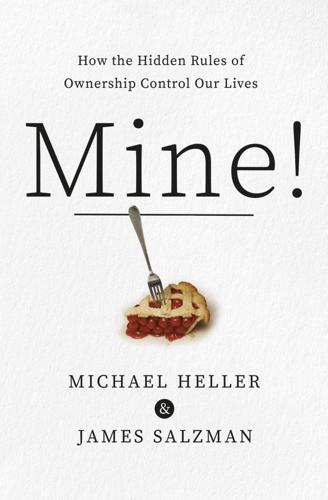
Mine!: How the Hidden Rules of Ownership Control Our Lives
by
Michael A. Heller
and
James Salzman
Published 2 Mar 2021
In the years since Heller discovered ownership gridlock, thousands of scholarly articles have explored the phenomenon. A subfield of economics now documents and debates its effects. Recently, in the journal Science, one commentator suggests that the most prominent danger of gridlock today may involve certain gene-editing technologies (CRISPR, for those in the know). Innovations using these tools could save your life—indeed, the first emergency-use test approved to detect COVID-19 relies on CRISPR. But multiple companies control aspects of the technology, and all have incentives to set up competing tollbooths on the path to drug development. There has been an unnoticed shift in how inventive labor creates wealth.
…
The Anticommons in Biomedical Research,” Science 280 (May 1998): 698–701. gene-editing technologies: Jorge L. Contreras, “The Anticommons at Twenty: Concerns for Research Continue,” Science 361 (July 2018): 335–37. Innovations using these tools could save your life: Giorgia Guglielmi, “First CRISPR Test for the Coronavirus Approved in the United States,” Nature, May 8, 2020. Indeed, the Supreme Court decided: eBay Inc. v. MercExchange, L.L.C., 547 U.S. 388 (2006). “I was a single mom”: Chavie Lieber, “Fashion Brands Steal Design Ideas All the Time. And It’s Completely Legal,” Vox, April 27, 2018.
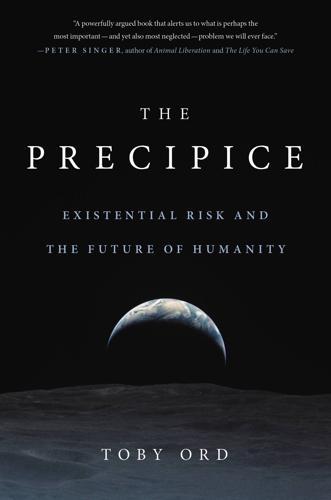
The Precipice: Existential Risk and the Future of Humanity
by
Toby Ord
Published 24 Mar 2020
In just two centuries, we discovered it was caused by a diverse variety of microscopic agents and we worked out how to grow them in the lab, to breed them for different traits, to sequence their genomes, to implant new genes, and to create entire functional viruses from their written code. This progress is continuing at a rapid pace. The last ten years have seen major qualitative breakthroughs, such as the use of CRISPR to efficiently insert new genetic sequences into a genome and the use of gene drives to efficiently replace populations of natural organisms in the wild with genetically modified versions.22 Measures of this progress suggest it is accelerating, with the cost to sequence a genome falling by a factor of 10,000 since 2007 and with publications and venture capital investment growing quickly.23 This progress in biotechnology seems unlikely to fizzle out soon: there are no insurmountable challenges looming; no fundamental laws blocking further developments.
…
Just 15 years later, a genome can be sequenced for under $1,000 or within a single hour.47 The reverse process has become much easier too: online DNA synthesis services allow anyone to upload a DNA sequence of their choice then have it constructed and shipped to their address. While still expensive, the price of synthesis has fallen by a factor of a thousand over the last two decades and continues to drop.48 The first ever uses of CRISPR and gene drives were the biotechnology achievements of the decade. But within just two years each of these technologies were used successfully by bright students participating in science competitions.49 Such democratization promises to fuel a boom of entrepreneurial biotechnology. But since biotechnology can be misused to lethal effect, democratization also means proliferation.
…
A Forecast of When We’ll Run Out of Each Metal. https://www.visualcapitalist.com/forecast-when-well-run-out-of-each-metal/. Deutsch, D. (2011). The Beginning of Infinity: Explanations that Transform the World. Viking. DiCarlo, J. E., Chavez, A., Dietz, S. L., Esvelt, K. M., and Church, G. M. (2015). “Safeguarding CRISPR-Cas9 Gene Drives in Yeast.” Nature Biotechnology, 33(12), 1,250–5. Diderot, D. (1755). “Encyclopedia,” in P. Stewart (trans.), Encyclopédie ou Dictionnaire raisonné des sciences, des arts et des métiers, vol. 5 (pp. 635–648A). Michigan Publishing. DiEuliis, D., Carter, S. R., and Gronvall, G. K. (2017).

Human Compatible: Artificial Intelligence and the Problem of Control
by
Stuart Russell
Published 7 Oct 2019
Since 2000, those guidelines have included a ban on funding approval for any protocol involving human germline alteration—the modification of the human genome in ways that can be inherited by subsequent generations. This ban was followed by legal prohibitions in over fifty countries. The goal of “improving the human stock” had been one of the dreams of the eugenics movement in the late nineteenth and early twentieth centuries. The development of CRISPR-Cas9, a very precise method for genome editing, has reignited this dream. An international summit held in 2015 left the door open for future applications, calling for restraint until “there is broad societal consensus about the appropriateness of the proposed application.”16 In November 2018, the Chinese scientist He Jiankui announced that he had edited the genomes of three human embryos, at least two of which had led to live births.
…
Report from the workshop that proposed voluntary restrictions on genetic engineering: Paul Berg et al., “Summary statement of the Asilomar Conference on Recombinant DNA Molecules,” Proceedings of the National Academy of Sciences 72 (1975): 1981–84. 16. Policy statement arising from the invention of CRISPR-Cas9 for gene editing: Organizing Committee for the International Summit on Human Gene Editing, “On human gene editing: International Summit statement,” December 3, 2015. 17. The latest policy statement from leading biologists: Eric Lander et al., “Adopt a moratorium on heritable genome editing,” Nature 567 (2019): 165–68. 18.
…
See intelligent agent agent program, 48 “AI Researchers on AI Risk” (Alexander), 153 Alciné, Jacky, 60 Alexander, Scott, 146, 153, 169–70 algorithms, 33–34 Bayesian networks and, 275–77 Bayesian updating, 283, 284 bias and, 128–30 chess-playing, 62–63 coding of, 34 completeness theorem and, 51–52 computer hardware and, 34–35 content selection, 8–9, 105 deep learning, 58–59, 288–93 dynamic programming, 54–55 examples of common, 33–34 exponential complexity of problems and, 38–39 halting problem and, 37–38 lookahead search, 47, 49–50, 260–61 propositional logic and, 268–70 reinforcement learning, 55–57, 105 subroutines within, 34 supervised learning, 58–59, 285–93 Alibaba, 250 AlphaGo, 6, 46–48, 49–50, 55, 91, 92, 206–7, 209–10, 261, 265, 285 AlphaZero, 47, 48 altruism, 24, 227–29 altruistic AI, 173–75 Amazon, 106, 119, 250 Echo, 64–65 “Picking Challenge” to accelerate robot development, 73–74 Analytical Engine, 40 ants, 25 Aoun, Joseph, 123 Apple HomePod, 64–65 “Architecture of Complexity, The” (Simon), 265 Aristotle, 20–21, 39–40, 50, 52, 53, 114, 245 Armstrong, Stuart, 221 Arnauld, Antoine, 21–22 Arrow, Kenneth, 223 artificial intelligence (AI), 1–12 agent (See intelligent agent) agent programs, 48–59 beneficial, principles for (See beneficial AI) benefits to humans of, 98–102 as biggest event in human history, 1–4 conceptual breakthroughs required for (See conceptual breakthroughs required for superintelligent AI) decision making on global scale, capability for, 75–76 deep learning and, 6 domestic robots and, 73–74 general-purpose, 46–48, 100, 136 global scale, capability to sense and make decisions on, 74–76 goals and, 41–42, 48–53, 136–42, 165–69 governance of, 249–53 health advances and, 101 history of, 4–6, 40–42 human preferences and (See human preferences) imagining what superintelligent machines could do, 93–96 intelligence, defining, 39–61 intelligent personal assistants and, 67–71 limits of superintelligence, 96–98 living standard increases and, 98–100 logic and, 39–40 media and public perception of advances in, 62–64 misuses of (See misuses of AI) mobile phones and, 64–65 multiplier effect of, 99 objectives and, 11–12, 43, 48–61, 136–42, 165–69 overly intelligent AI, 132–44 pace of scientific progress in creating, 6–9 predicting arrival of superintelligent AI, 76–78 reading capabilities and, 74–75 risk posed by (See risk posed by AI) scale and, 94–96 scaling up sensory inputs and capacity for action, 94–95 self-driving cars and, 65–67, 181–82, 247 sensing on global scale, capability to, 75 smart homes and, 71–72 softbots and, 64 speech recognition capabilities and, 74–75 standard model of, 9–11, 13, 48–61, 247 Turing test and, 40–41 tutoring by, 100–101 virtual reality authoring by, 101 World Wide Web and, 64 “Artificial Intelligence and Life in 2030” (One Hundred Year Study on Artificial Intelligence), 149, 150 Asimov, Isaac, 141 assistance games, 192–203 learning preferences exactly in long run, 200–202 off-switch game, 196–200 paperclip game, 194–96 prohibitions and, 202–3 uncertainty about human objectives, 200–202 Association for the Advancement of Artificial Intelligence (AAAI), 250 assumption failure, 186–87 Atkinson, Robert, 158 Atlas humanoid robot, 73 autonomous weapons systems (LAWS), 110–13 autonomy loss problem, 255–56 Autor, David, 116 Avengers: Infinity War (film), 224 “avoid putting in human goals” argument, 165–69 axiomatic basis for utility theory, 23–24 axioms, 185 Babbage, Charles, 40, 132–33 backgammon, 55 Baidu, 250 Baldwin, James, 18 Baldwin effect, 18–20 Banks, Iain, 164 bank tellers, 117–18 Bayes, Thomas, 54 Bayesian logic, 54 Bayesian networks, 54, 275–77 Bayesian rationality, 54 Bayesian updating, 283, 284 Bayes theorem, 54 behavior, learning preferences from, 190–92 behavior modification, 104–7 belief state, 282–83 beneficial AI, 171–210, 247–49 caution regarding development of, reasons for, 179 data available for learning about human preferences, 180–81 economic incentives for, 179–80 evil behavior and, 179 learning to predict human preferences, 176–77 moral dilemmas and, 178 objective of AI is to maximize realization of human preferences, 173–75 principles for, 172–79 proofs for (See proofs for beneficial AI) uncertainty as to what human preferences are, 175–76 values, defining, 177–78 Bentham, Jeremy, 24, 219 Berg, Paul, 182 Berkeley Robot for the Elimination of Tedious Tasks (BRETT), 73 Bernoulli, Daniel, 22–23 “Bill Gates Fears AI, but AI Researchers Know Better” (Popular Science), 152 blackmail, 104–5 blinking reflex, 57 blockchain, 161 board games, 45 Boole, George, 268 Boolean (propositional) logic, 51, 268–70 bootstrapping process, 81–82 Boston Dynamics, 73 Bostrom, Nick, 102, 144, 145, 150, 166, 167, 183, 253 brains, 16, 17–18 reward system and, 17–18 Summit machine, compared, 34 BRETT (Berkeley Robot for the Elimination of Tedious Tasks), 73 Brin, Sergey, 81 Brooks, Rodney, 168 Brynjolfsson, Erik, 117 Budapest Convention on Cybercrime, 253–54 Butler, Samuel, 133–34, 159 “can’t we just . . .” responses to risks posed by AI, 160–69 “. . . avoid putting in human goals,” 165–69 “. . . merge with machines,” 163–65 “. . . put it in a box,” 161–63 “. . . switch it off,” 160–61 “. . . work in human-machine teams,” 163 Cardano, Gerolamo, 21 caring professions, 122 Chace, Calum, 113 changes in human preferences over time, 240–45 Changing Places (Lodge), 121 checkers program, 55, 261 chess programs, 62–63 Chollet, François, 293 chunking, 295 circuits, 291–92 CNN, 108 CODE (Collaborative Operations in Denied Environments), 112 combinatorial complexity, 258 common operational picture, 69 compensation effects, 114–17 completeness theorem (Gödel’s), 51–52 complexity of problems, 38–39 Comprehensive Nuclear-Test-Ban Treaty (CTBT) seismic monitoring, 279–80 computer programming, 119 computers, 32–61 algorithms and (See algorithms) complexity of problems and, 38–39 halting problem and, 37–38 hardware, 34–35 intelligent (See artificial intelligence) limits of computation, 36–39 software limitations, 37 special-purpose devices, building, 35–36 universality and, 32 computer science, 33 “Computing Machinery and Intelligence” (Turing), 40–41, 149 conceptual breakthroughs required for superintelligent AI, 78–93 actions, discovering, 87–90 cumulative learning of concepts and theories, 82–87 language/common sense problem, 79–82 mental activity, managing, 90–92 consciousness, 16–17 consequentialism, 217–19 content selection algorithms, 8–9, 105 content shortcomings, of intelligent personal assistants, 67–68 control theory, 10, 44–45, 54, 176 convolutional neural networks, 47 cost function to evaluate solutions, and goals, 48 Credibility Coalition, 109 CRISPR-Cas9, 156 cumulative learning of concepts and theories, 82–87 cybersecurity, 186–87 Daily Telegraph, 77 decision making on global scale, 75–76 decoherence, 36 Deep Blue, 62, 261 deep convolutional network, 288–90 deep dreaming images, 291 deepfakes, 105–6 deep learning, 6, 58–59, 86–87, 288–93 DeepMind, 90 AlphaGo, 6, 46–48, 49–50, 55, 91, 92, 206–7, 209–10, 261, 265, 285 AlphaZero, 47, 48 DQN system, 55–56 deflection arguments, 154–59 “research can’t be controlled” arguments, 154–56 silence regarding risks of AI, 158–59 tribalism, 150, 159–60 whataboutery, 156–57 Delilah (blackmail bot), 105 denial of risk posed by AI, 146–54 “it’s complicated” argument, 147–48 “it’s impossible” argument, 149–50 “it’s too soon to worry about it” argument, 150–52 Luddism accusation and, 153–54 “we’re the experts” argument, 152–54 deontological ethics, 217 dexterity problem, robots, 73–74 Dickinson, Michael, 190 Dickmanns, Ernst, 65 DigitalGlobe, 75 domestic robots, 73–74 dopamine, 17, 205–6 Dota 2, 56 DQN system, 55–56 Dune (Herbert), 135 dynamic programming algorithms, 54–55 E. coli, 14–15 eBay, 106 ECHO (first smart home), 71 “Economic Possibilities for Our Grandchildren” (Keynes), 113–14, 120–21 The Economic Singularity: Artificial Intelligence and the Death of Capitalism (Chace), 113 Economist, The, 145 Edgeworth, Francis, 238 Eisenhower, Dwight, 249 electrical action potentials, 15 Eliza (first chatbot), 67 Elmo (shogi program), 47 Elster, Jon, 242 Elysium (film), 127 emergency braking, 57 enfeeblement of humans problem, 254–55 envy, 229–31 Epicurus, 219 equilibrium solutions, 30–31, 195–96 Erewhon (Butler), 133–34, 159 Etzioni, Oren, 152, 157 eugenics movement, 155–56 expected value rule, 22–23 experience, learning from, 285–95 experiencing self, and preferences, 238–40 explanation-based learning, 294–95 Facebook, 108, 250 Fact, Fiction and Forecast (Goodman), 85 fact-checking, 108–9, 110 factcheck.org, 108 fear of death (as an instrumental goal), 140–42 feature engineering, 84–85 Fermat, Pierre de, 185 Fermat’s Last Theorem, 185 Ferranti Mark I, 34 Fifth Generation project, 271 firewalling AI systems, 161–63 first-order logic, 51, 270–72 probabilistic languages and, 277–80 propositional logic distinguished, 270 Ford, Martin, 113 Forster, E.
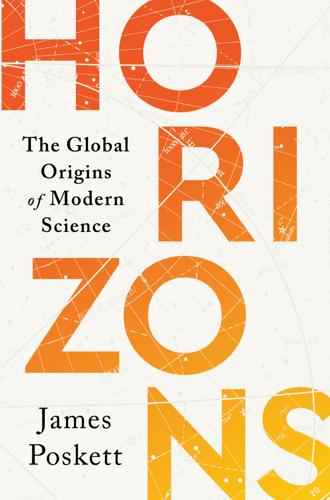
Horizons: The Global Origins of Modern Science
by
James Poskett
Published 22 Mar 2022
McClellan III and Harold Dorn, Science and Technology in World History: An Introduction, 3rd edn (Baltimore: Johns Hopkins University Press, 2006). 3On the need for a global history of science, see Sujit Sivasundaram, ‘Sciences and the Global: On Methods, Questions, and Theory’, Isis 101 (2010). 4Jeffrey Mervis, ‘NSF Rolls Out Huge Makeover of Science Statistics’, Science, accessed 22 November 2020, https://www.sciencemag.org/news/2020/01/nsf-rolls-out-huge-makeover-science-statistics, Jeff Tollefson, ‘China Declared World’s Largest Producer of Scientific Articles’, Nature 553 (2018), Elizabeth Gibney, ‘Arab World’s First Mars Probe Takes to the Skies’, Nature 583 (2020), and Karen Hao, ‘The Future of AI is in Africa’, MIT Technology Review, accessed 22 November 2020, https://www.technologyreview.com/2019/06/21/134820/ai-africa-machine-learning-ibm-google/. 5David Cyranoski and Heidi Ledford, ‘Genome-Edited Baby Claim Provokes International Outcry’, Nature 563 (2018), David Cyranoski, ‘Russian Biologist Plans More CRISPR-Edited Babies’, Nature 570 (2019), Michael Le Page, ‘Russian Biologist Still Aims to Make CRISPR Babies Despite the Risks’, New Scientist, accessed 13 February 2021, https://www.newscientist.com/article/2253688-russian-biologist-still-aims-to-make-crispr-babies-despite-the-risks/, David Cyranoski, ‘What CRISPR-Baby Prison Sentences Mean for Research’, Nature 577 (2020), Connie Nshemereirwe, ‘Tear Down Visa Barriers That Block Scholarship’, Nature 563 (2018), A Picture of the UK Workforce: Diversity Data Analysis for the Royal Society (London: The Royal Society, 2014), and ‘Challenge Anti-Semitism’, Nature 556 (2018). 6Joseph Needham’s multivolume Science and Civilisation in China (Cambridge: Cambridge University Press, 1954 to present) is the most famous work celebrating ancient Chinese science, largely at the expense of the modern.

When Einstein Walked With Gödel: Excursions to the Edge of Thought
by
Jim Holt
Published 14 May 2018
There is a more radical eugenic possibility on the horizon, one beyond anything Galton envisaged. It would involve shaping the heredity of our descendants by tinkering directly with the genetic material in the cells from which they germinate. This technique, called germ-line engineering, has already been used with several species of mammals, most recently employing the new CRISPR (clustered regularly interspaced short palindromic repeats) technology for targeted gene editing. Proponents of germ-line engineering argue that it is only a matter of time before humans can avail themselves of it. The usual justification for germ-line therapy is its potential for eliminating genetic disorders and diseases, not only in the person who develops from the altered genes, but in all of his or her descendants as well.
…
category theory Catherine the Great Catholic Worker Movement Cats (Broadway musical) Cauchy, Augustin causal chains Cayley, Arthur CERN (European Organization for Nuclear Research) Chalmers, David Changeux, Jean-Pierre chaos Chen Ning Yang Chicago, University of choice: axiom of; paradox of Chomsky, Noam Christianity Church, Alonzo Cicero City College, New York Clay, Landon T. Clay Mathematics Institute Clemenceau, Georges clustered regularly interspaced short palindromic repeats (CRISPR) technology code breaking cognitive science Cohen, G. A. cold war Coleridge, Samuel Taylor Collège de France Colossus of Rhodes Columbia University Communist Party, Soviet complex dynamics complex numbers computers; antecedents of; for atomic bomb engineering; four-color conjecture examined on; human mental ability compared to; Mandelbrot’s discoveries using; modeling of brain functions by; passwords for access to; Turing’s work on development of conjugate variables Connes, Alain connotation Conrad, Joseph consciousness; of Flatlanders; “global workspace” theory of; in quantum physics; raising; self- conservation, laws of Constitution, U.S.
…
cold war Coleridge, Samuel Taylor Collège de France Colossus of Rhodes Columbia University Communist Party, Soviet complex dynamics complex numbers computers; antecedents of; for atomic bomb engineering; four-color conjecture examined on; human mental ability compared to; Mandelbrot’s discoveries using; modeling of brain functions by; passwords for access to; Turing’s work on development of conjugate variables Connes, Alain connotation Conrad, Joseph consciousness; of Flatlanders; “global workspace” theory of; in quantum physics; raising; self- conservation, laws of Constitution, U.S. Contact (Sagan) Copenhagen (Frayn) Copenhagen, University of Copernican principle Copernicus Corpus Hypercubus (Dalí) correlations cosmology Crapper, Thomas creationism, pseudoscience of creativity, mathematical; beauty and; memory and; mystical sources to Crick, Francis CRISPR (clustered regularly interspaced short palindromic repeats) technology Critchley, Simon Critique of Pure Reason (Kant) Crosse, Andrew cryptography; see also “Enigma” code crystallized intelligence Cumberbatch, Benedict Cuny, Fred cyber feminism Dalai Lama Dalí, Salvador dark energy Dartmouth College Darwin, Charles; animal behavior observed by; Beagle voyage of; Galton influenced by Darwin, Erasmus Darwinism; cultural Dauben, Joseph Davidson, Donald Dawkins, Richard Day, Dorothy death, ideas about “Death” (Nagel) “Decay of Lying, The” (Wilde) decision problem Dedekind, Richard “Deeper into Bullshit” (Cohen) Defense Department, U.S.
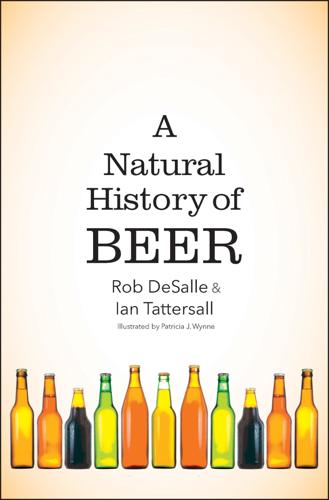
A Natural History of Beer
by
Rob DeSalle
Published 14 Jun 2019
So, while it is still early days, genomic approaches have already demonstrated their ability to facilitate improvement in the efficiency, yield, and quality of barley cultivation. Still, it is quite likely that the future of barley will lie in an even more cutting-edge technique: direct “gene editing” using the brand-new CRISPR technology that has received so much recent publicity. However the story plays out, one thing is certain: molecular biology holds huge promise for improving the raw materials of maltsters and brewers. 8 Yeast The slender, shiny brown bottle bore no label, but close scrutiny of the almost illegible letters on a raised glass ring around its neck revealed the words “Trappisten Bier.”
…
See also brain structure and characteristics brain structure and characteristics, 166–173 energy use of, 171 evolution and, 169–171 lobes, 167–169, 168; neurons and synapses, 169, 170, 171–173 reward center, 170, 173–174, 174; white matter and gray matter, 169 Brassac, Jonathan, 87 bread-and-beer controversy, 9–10 bread beer, 20, 204–205 Brettanomyces yeasts, 34–35, 108, 136 BrettPeat Daydream, 179 breweries: consolidation and giant breweries, 210–211, 210–212, 216–217 longest continuously operating, 27–28 monastery, 24, 27–28, 31–32 Brewers’ Association, 216 Brewery Ommegang, 209 Brillat-Savarin, Jean Anthelme, 9 Brown, Pete, 37, 206–208, 212 buoyancy, 79–81 Burton-upon-Trent, 70, 74, 75, 206 butanol, 130 C (cytosine), 57–59, 58 Calagione, Sam, 201–206 calcium carbonate, 75 calcium oxalate (beerstone), 16–17, 202 calcium sulfate, 75 calories, 152, 154–156, 157, 160 Campaign for Real Ale (CAMRA), 212, 213 Cannabis, 115, 115–117 Canterbury Tales (Chaucer), 48 carbohydrates, 71–72, 155–156, 157–158 carbon atoms, 56 carbon dioxide (CO2), 10, 29, 128–129, 135, 153 cellulose, 132 cereal grains, domestication of, 10–12, 15–18, 82–83, 88–93 characteristics (tags), 185–186 Chateau Jiahu, 203–204 chewing and spitting (saccharification), 23, 83, 205 chicha maize beer, 83, 205 chimpanzees and palm toddy, 8 China: beer consumption, 24–25 Jiahu beverage, 22–23, 203–204 Christiaens, Joaquin, 147, 148 Christianity: beer versus wine, 26 monastic brewing tradition, 24, 26–28, 31–32 chromosomes, 59–60, 60 Civil, Miguel, 199 Clegg, Michael, 90 Cleopatra VII, Queen, 21 color and light, 142–144 Constellation Brands, 216 Coopers Brewery, 38 Coors, 211 craft beer movement, 213–218 Big Beer response to, 216–217 definition, 214 influence of McAuliffe on, 214–215 market share of, 215–216 Prohibition and, 35, 37, 213–214. See also Campaign for Real Ale (CAMRA) cratestyle.com, 180 Crick, Francis, 140 CRISPR technology, 95–96 customs, rituals and beer consumption: in Australia, 40–43 in Germany, 45–47 in Great Britain, 48–51 in Italy, 44–45 in Japan, 43–44 in Spain, 44 in St. Paul, Minnesota, 39–40 in Vietnam, 44 cytochrome P4502E1 (CYP2E1), 162–163 cytosine (C), 57–59, 58 Czech Republic, 27, 31, 194 Dark Ages, brewing during, 25–26 Daydream ale, 179 death awareness and alcohol use, 8–9 dehydration, 175–176 Dekkera sp., 108 de novo sequencing, 60–61, 63, 104 De Prael brewery, 165 depressant, beer as, 173–174, 175 dicots (dicotyledons), 114–116, 116 digestive system, 152–164 components of beer and, 152–153 fat deposition, 156–158, 157; gastrointestinal tract, 158, 158–159 kidneys, 160–161, 175 liver, 161, 161–164, 162; metabolism and energy production, 154–156 Diversity in Barley (von Bothmer, van Hintum, Knüpffer, Sato), 85 DNA: chromosomes, 59–60, 60; data analysis methods, 64–68 genetic code, 59 genome sequencing, 60–64, 87–88, 99–104, 123–124 nucleotides, 57–59, 58; SNPs, 60, 60, 61, 63 whole exome sequencing, 89, 90 Dogfish Head Brewery, 198, 201, 203, 204–205 domestication syndrome, 88 dopamine, 173–174, 175 Dortmund pilsner, 69 Dresel, Michael, 123, 124 drinking straws, 17, 19, 199 drunken monkey hypothesis, 5 dubbel ales, 32 Dudley, Robert, 5 Dunkel, Andreas, 123 Eckhardt, Fred, 215 Egypt, ancient, 19–21, 200–201, 204–205 energy production and metabolism, 154–156 Epstein, Murray, 160–161 Er Boquerón, 165, 166 ethyl acetate, 147, 148 ethyl alcohol (ethanol): bread-making and, 9–10 calories, 154–156 effects on digestive system, 158–164 health benefits of, 12–13 molecules, 128–129, 130; presence of, in nature, 4–5 primate predilection and tolerance for, 5–9 toxicity of, 6 eudicots, 114 eukaryotes, 98 Euromalt, 86 Europe: Dark Ages brewing, 25–26 Iron Age brewing, 21–22 monastic brewing tradition, 24, 26–28, 31–32 evolution.

12 Bytes: How We Got Here. Where We Might Go Next
by
Jeanette Winterson
Published 15 Mar 2021
Listening to the ahistorical, fact-free-free-speech ‘heroes’ telling us that women just don’t want to, or just can’t manage, computing science, edits out of history – factual history – the predominance of women working in computing science, right up until they were socially engineered out of it. * * * But there are lights in this tunnel. The 2020 Nobel Prize in Chemistry was awarded to Jennifer A. Doudna and Emmanuelle Charpentier for their work on the development of CRISPR-Cas9 – a genetic editing tool capable of precisely editing any section of the human genome. It’s like a pair of magic scissors that can cut your DNA. The award is the culmination of a decade of work; already the tool has been used to edit crops and insects, and clinical trials are underway on genetic malfunctions like hereditary blindness and some cancers.
…
The implications for humanity are species-changing. But are we ready? Do humans have the emotional intelligence and ethical sobriety to take the next steps? A tool is a tool. How do we use the tool? Who is using the tool? That is what matters. In 2018, Chinese biophysicist He Jiankui announced that he had used CRISPR-Cas9 to edit the embryos of twin girls. This was against agreed international protocol. He was jailed. The tool is out there – no going back – and my view is that we need more women at every level – the ethics, as well as the science – to help humanity manage the new reality we are creating. * * * Mary Shelley had many insights into the future in her 1818 novel Frankenstein.

The Strange Order of Things: The Biological Roots of Culture
by
Antonio Damasio
Published 6 Feb 2018
Nature is properly defensive and evasive, but medical science does not lack ingenuity or persistence. For example, when the cause of disease is a dangerous virus that is normally carried by a certain insect species, it is now possible to change the insect’s genome such that its carrier status is blocked. This is bold and new and freshly possible due to the discovery of a technique, CRISPR-Cas9, that permits successful modifications within a genome.1 Nothing guarantees, of course, that the thwarted viruses will not mutate in response to the genetic dissuader and defy the new barrier they face by increasing their malignancy. And so it goes. Homeostasis knows how to play games of cat and mouse, and sometimes so do we.
…
Wiessner, “Embers of Society: Firelight Talk Among the Ju/’hoansi Bushmen,” Proceedings of the National Academy of Sciences 111, no. 39 (2014): 14027–35. 11 MEDICINE, IMMORTALITY, AND ALGORITHMS 1. Jennifer A. Doudna and Emmanuelle Charpentier, “The New Frontier of Genome Engineering with CRISPR-Cas9,” Science 346, no. 6213 (2014): 1258096. 2. Pedro Domingos, The Master Algorithm: How the Quest for the Ultimate Learning Machine Will Remake Our World (New York: Basic Books, 2015). 3. Krishna V. Shenoy and Jose M. Carmena, “Combining Decoder Design and Neural Adaptation in Brain-Machine Interfaces,” Neuron 84, no. 4 (2014): 665–80, doi:10.1016/j.neuron.2014.08.038; Johan Wessberg, Christopher R.
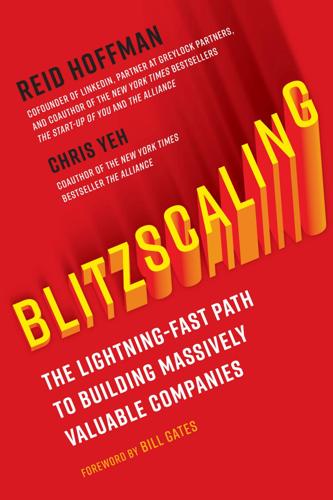
Blitzscaling: The Lightning-Fast Path to Building Massively Valuable Companies
by
Reid Hoffman
and
Chris Yeh
Published 14 Apr 2018
Social media should be more transparent about who is paying for advertisements, and should require the same standards for truth in advertising as any other medium. On the other hand, there are technologies emerging from blitzscaling companies that could pose real, systemic problems (yet get far less media attention). Synthetic biology, driven by CRISPR-Cas9 targeted genome editing, has the potential to produce huge benefits in medicine and agribusiness, but brings with it the systemic risk of bad actors engineering a deadly global pandemic. Changes and developments in this field have occurred so quickly that it is difficult for governments to create intelligent regulatory regimes to manage these risks.
…
So far, blitzscaling has been concentrated in software and the Internet, but it’s likely to reshape our physical infrastructure or even our bodies in the future. Artificial intelligence will soon be ubiquitous, thanks to self-driving vehicles and better machine learning. Technology innovations in the life sciences, such as CRISPR gene editing, may change the fabric of life itself. Cryptocurrencies and blockchain technology may change the role of governments and corporations in global finance and commerce. New technologies are emerging rapidly and promise to change everything—again. These new technologies will enable new business models, which in turn will create new industries.
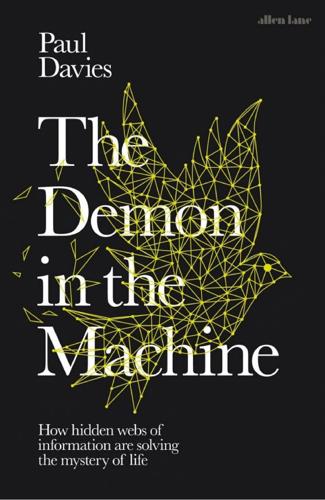
The Demon in the Machine: How Hidden Webs of Information Are Finally Solving the Mystery of Life
by
Paul Davies
Published 31 Jan 2019
Dogs are artificial animals produced from wolves by generations of cross-breeding and careful selection. Twenty thousand years ago there were wolves but no Great Danes or chihuahuas. In more recent years genetic engineering techniques such as gene transplantation have enabled many novel organisms to be created, including a variety of GM foods. New technology known as CRISPR enables genomes to be rewritten more or less to order. What Venter and his colleagues did was brilliant and deservedly attention-grabbing. He took a simple bacterium (mycoplasma genitalium) and replaced its DNA with a customized version. In other words, Venter kept almost all the hardware (the cell) and just switched the software (the DNA).
…
More recently, a group of Harvard biologists encoded a digitized version of the famous galloping-horse movie made by Eadweard Muybridge in 1878 (to demonstrate that all four legs could be off the ground simultaneously) and embedded it into the genomes of a population of living E. coli bacteria. (See Seth L. Shipman et al., ‘CRISPR–Cas encoding of a digital movie into the genomes of a population of living bacteria’, Nature, vol. 547, 345–9 (2017).) These feats were more than a bit of recreational tinkering; they provide a graphic demonstration of a technology that could pave the way for inserting ‘data recording’ devices into cells to keep track of vital processes.
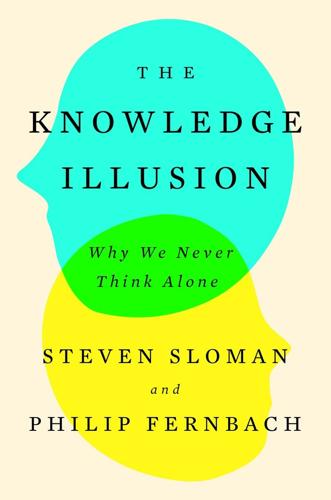
The Knowledge Illusion
by
Steven Sloman
Published 10 Feb 2017
Mendeleev surely made a grand contribution to this community, but without that community Mendeleev would have been nowhere. The periodic table has its roots in a community of knowledge. This case is not unique. Simultaneous multiple discovery in science is startlingly common even today. At the time of this writing, there is a battle going on over who should have the rights to a patent for a process called CRISPR/Cas9 that is used to edit strands of DNA. What makes the case difficult is that two teams of scientists developed the basic ideas at roughly the same time. Science seems to make progress not just because a genius comes along but also because conditions are right for particular discoveries. The right background theories have been formulated and the right data have been collected.
…
Amersham: Avebury Publishing Company, 70. The authors conclude that “multiple discovery is a normal feature of science.” Scerri: E. Scerri (2015). “The Discovery of the Periodic Table as a Case of Simultaneous Discovery.” Philosophical Transactions of the Royal Society A 373(2097): 20140172. CRISPR/Cas9: www.wired.com/2015/10/battle-genome-editing-gets-science-wrong. fluid versus crystallized intelligence: R. R. Cattell (1943). “The Measurement of Adult Intelligence.” Psychological Bulletin 40: 153–193; J. L. Horn (1976). “Human Abilities: A Review of Research and Theory in the Early 1970’s.”
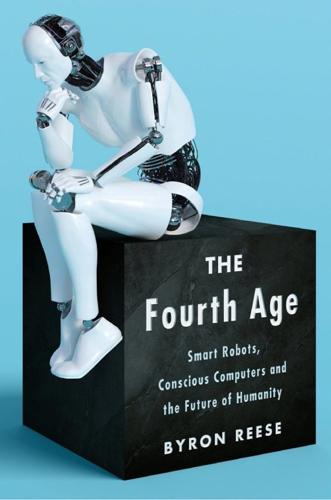
The Fourth Age: Smart Robots, Conscious Computers, and the Future of Humanity
by
Byron Reese
Published 23 Apr 2018
So while it took us almost five thousand years to get from the abacus to the iPad, twenty-five years from now, we will have something as far ahead of the iPad as it is ahead of the abacus. We can’t even imagine or wrap our heads around what that thing will be. The combination of the scientific method and Moore’s mysterious law is what has given us the explosion of new technology that is part and parcel of our daily life. It gave us robots, nanotech, the gene editing technology CRISPR-Cas9, space travel, atomic power, and a hundred other wonders. In fact, technology advances at such a rate that we are, for the most part, numb to the wonder of it all. New technology comes with such rapidity that it has become almost mundane. We carry supercomputers in our pockets that let us communicate instantly with almost anyone on the planet.
…
It was far better to mistake a rock for a bear and run away from it than to mistake a bear for a rock and stay put. A cognitive bias toward fear isn’t always a bad thing. So what are some of the things we have to worry about in the future? The most obvious challenges are in biology. There will be little to stop someone from bioengineering a pathogen. CRISPR genomic editing is so easy and inexpensive that $100 kits are available for elementary school students to modify yeast to turn it red. Existing pathogens are bad enough, but with a nip and tuck here and there, something even more terrible could be made. Making a race weapon (a pathogen that disproportionately affects people of a certain ethnic heritage) would also be doable.
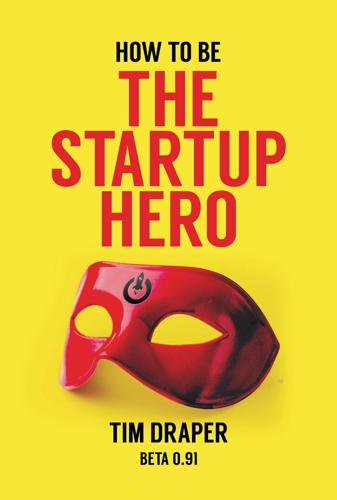
How to Be the Startup Hero: A Guide and Textbook for Entrepreneurs and Aspiring Entrepreneurs
by
Tim Draper
Published 18 Dec 2017
I expect that now, when you speak, you will inhale air and exhale our values, our understandings and our credo. Many new markets are available to you where entrenched monopolists have wallowed for years. Technologies like location-specific marketplaces, crowdsourcing, GPS, drones, big data, Bitcoin, blockchain, ICOs, DNA sequencing, CRISPR, solar and other alternative sources of power, and many others will allow you to pursue new markets in the FinTech, EdTech, GovTech, MedTech, TransporTech, and AgTech worlds. Your businesses can take advantage of platforms that people that started those monopolies only dreamed of back then. The world needs more Startup Heroes, and we just got 60 more of them.
…
If other scientists decide to follow suit and we get an open source outflowing of scientific ideas and collaboration, science could go through the same explosion that we have had in entrepreneurship in Silicon Valley, and human progress will again be accelerated. Look for industries to improve: healthcare, entertainment, real estate, insurance, fashion and banking. Look for new technologies to improve them with: the shared economy, social media, programmable stem cells, CRISPR, microsatellites, virtual reality, Bitcoin, solar economies, self-driving cars, electronic clothes, bioelectronics, robot brains, prosthetic limbs, Pokémon derivatives, offline massively open online courses (MOOCs), enterprise software, and multivariable authenticators. Put them together to approach or even invent new technology industries.

Upgrade
by
Blake Crouch
Published 6 Jul 2022
Nadine said, “We know, everyone knows, that you traffic in high-end genetic elements. Gene networks and sequences. Scythe.” Scythe was the revolutionary, biological DNA modifier system—now extremely illegal—discovered and patented by my mother, Miriam Ramsay. It had been a seismic leap forward that left the previous generations of technologies—ZFNs, TALENs, CRISPR-Cas9—gasping in the dust. Scythe had ushered in a new era of gene editing and delivery, one that brought about catastrophic results. Which was why getting caught using or selling it for germline modification—the making of a new organism—came with a mandatory thirty-year prison sentence. “I think I’d like to call my lawyer now,” Soren said.
…
A gene drive is the most powerful genetic engineering tool ever conceived. Normally, when a child is born, it gets one copy of each gene from both parents, either one of which might end up being the dominant one of the pair. But if you can insert a gene-drive-targeting system in one parent, you can upend those normal laws of heredity. The gene-editing mechanism—CRISPR-Cas9, Scythe, or whatever it might be—is passed on from the targeted parent into the child’s DNA, along with instructions to sneakily rewrite the other parent’s copy of the targeted gene as the embryo develops. Say the mother has brown eyes, the father blue. With a gene drive, you can overwrite the mother’s genes for eye color in the embryo, thus guaranteeing that their child will have blue eyes.

WTF?: What's the Future and Why It's Up to Us
by
Tim O'Reilly
Published 9 Oct 2017
For a popular account, see Sharon Begley, “Audacious Project Plans to Create Human Genomes from Scratch,” Stat, June 2, 2016, https://www.statnews.com/2016/06/02/project-human-genome-synthesis/. 328 bring extinct species back to life: “Revive & Restore: Genetic Rescue for Endangered and Extinct Species,” retrieved April 4, 2017, http://reviverestore.org. 328 rewrite the DNA inside living organisms: “CRISPR/Cas9 and Targeted Genome Editing: A New Era in Molecular Biology,” New England Biolabs, retrieved April 4, 2017, https://www.neb.com/tools-and-resources/feature-articles/crispr-cas9-and-targeted-genome-editing-a-new-era-in-molecular-biology. 328 prosthetic limbs that provide sensory feedback: “Neurotechnology Provides Near-Natural Sense of Touch,” DARPA, September 11, 2015, http://www.darpa. mil/news-events/2015-09-11. 328 respond directly to the mind: Emily Reynolds, “This Mind-Controlled Limb Can Move Individual Fingers,” Wired, February 11, 2016, http://www.wired.co. uk/article/mind-controlled-prosthetics. 329 a neural memory implant as a cure for Alzheimer’s: Elizabeth Dwoskin, “Putting a Computer in Your Brain Is No Longer Science Fiction,” Washington Post, August 25, 2016, https://www.washingtonpost.com/news/the-switch/wp/2016/08/15/putting-a-computer-in-your-brain-is-no-longer-science-fiction/. 329 enhancing human intelligence: Bryan Johnson, “The Combination of Human and Artificial Intelligence Will Define Humanity’s Future,” TechCrunch, October 12, 2016, https://techcrunch.com/2016/10/12/the-combination-of-human-and-artificial-intelligence-will-define-humanitys-future/. 329 “helps with certain severe brain injuries”: Tim Urban, “Neuralink and the Brain’s Magical Future,” Wait But Why, April 20, 2017, http://waitbutwhy.com/2017/04/neuralink.html. 329 “get the Human Colossus working on the cause”: Ibid. 330 a direct neural interface: Elon Musk, quoted in Tim Urban, “Neuralink and the Brain’s Magical Future.” 330 “the capacity of people to take in, process, and use information”: Ibid. 330 “I want to make humans cool again”: Janelle Nanos, “Is Paul English the Soul of the New Machine?
…
George Church and his colleagues at Harvard are beginning a controversial ten-year project to create from scratch a complete human genome. Ryan Phelan and Stewart Brand’s Revive and Restore project is working to use gene engineering to restore genetic diversity to endangered species, and perhaps one day to bring extinct species back to life. Technologies like CRISPR-Cas9 allow researchers to rewrite the DNA inside living organisms. Neurotech—direct interfaces between machines and the brain and nervous system—is another frontier. There has been great progress in creating prosthetic limbs that provide sensory feedback and respond directly to the mind. On the further edges of innovation, Bryan Johnson, the founder of Braintree, an online payments company sold to PayPal for $800 million, has used the proceeds to found a company whose goal is to build a neural memory implant as a cure for Alzheimer’s disease.

The Big Nine: How the Tech Titans and Their Thinking Machines Could Warp Humanity
by
Amy Webb
Published 5 Mar 2019
We’ve been willing—if unwitting—participants in a future that’s being created hastily and without first answering all those questions. As AI systems advance and more of everyday life gets automated, the less control we actually have over the decisions being made about and for us. This, in turn, has a compounding effect on the future of many other technologies adjacent to or directly intersecting with AI: autonomous vehicles, CRISPR and genomic editing, precision medicine, home robotics, automated medical diagnoses, green- and geoengineering technologies, space travel, cryptocurrencies and blockchain, smart farms and agricultural technologies, the Internet of Things, autonomous factories, stock-trading algorithms, search engines, facial and voice recognition, banking technologies, fraud and risk detection, policing and judicial technologies… I could make a list that spans dozens of pages.
…
See also Apple Cornell University, 60 Corpora: Big Nine biased, 252; Big Nine flawed, 252; G-MAFIA sharing costs of creating new, 253; problematic medical, 252; using AI to evaluate, 253; using AI to find biases in, 253; verification of data before use, 253 Coursera, Google machine-learning specialization and, 92–93 Crawford, Kate, 65 Creativity: machine in pragmatic scenario of future, 197; randomness and, 30. See also Music Credit Karma, 87 Crime: in catastrophic scenario of future, 222; in optimistic scenario of future, 172, 175–176; in pragmatic scenario of future, 198–199 CRISPR, 129 DARPA, 37 Dartmouth workshop, 29–31, 32, 33, 34, 157, 158; AI key practices and, 31; artificial intelligence concept and, 29; Logic Theorist program, 30; research topics, 30; researchers, 35. See also McCarthy, John; Minsky, Marvin; Newell, Allen; Rochester, Nathaniel; Rosenblatt, Frank; Shannon, Claude; Simon, Herbert Darwin, Charles, 144 Data: blurring of work and personal in catastrophic scenario of future, 208; citizen/consumer generation of for G-MAFIA, 88; cloud storage of, 88–89; open access to health data in catastrophic scenario of future, 209; as part of AI ecosystem, 17; synthetic, 182; third-party access to, 88.
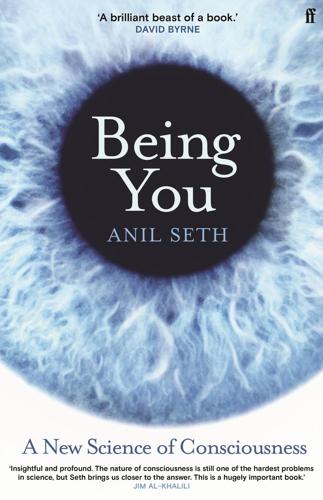
Being You: A New Science of Consciousness
by
Anil Seth
Published 29 Aug 2021
In the heyday of vitalism it might have seemed as preposterous to talk about the ethics of artificial life as the ethics of artificial consciousness can seem to us today. But here we are, a little over a hundred years later, with not only a deep understanding of what makes life possible, but many new tools to modify and even create it. We have gene editing techniques like CRISPR, which enables scientists to easily alter DNA sequences and change the function of genes. We even have the capability to develop fully synthetic organisms built from the ‘genes up’: in 2019, researchers in Cambridge created a variant of Escherichia coli with a fully synthetic genome. The ethics of creating new forms of life is suddenly very relevant indeed.
…
intelligent tools, not colleagues: ‘Philosopher Daniel Dennett on AI, robots and religion’, Financial Times, 3 March 2017. See https://www.ft.com/content/96187a7a-fce5-11e6-96f8-3700c5664d30. immediate thirty-year moratorium: See Metzinger (2021). creating new forms of life: Emmanuelle Charpentier and Jennifer Doudna won the 2020 Nobel Prize in Chemistry for their contributions to developing the CRISPR technique. The synthetic E. coli was created in the laboratory of Jason Chin; see Fredens et al. (2019). co-ordinated waves of electrical activity: Trujillo et al. (2019). highly unlikely to be conscious: I investigated the possibility of organoid consciousness in a recent paper with Tim Bayne and Marcello Massimini (Bayne et al., 2020).

A New History of the Future in 100 Objects: A Fiction
by
Adrian Hon
Published 5 Oct 2020
Better to rely on your own eyes and tools you could hold in your own hands. Some in the group mutter that we can’t really know what a “new” thylacine is. They claim the 500 Projects servers were compromised, the DNA profiles manipulated. Some doubt the thylacine was ever reintroduced, that they were merely released from captivity. CRISPR tools were surely involved, somehow. To what end? These same conspiracy theorists suggest this is a route toward the deliberate extinction and reintroduction of altered endangered species, an opposing force against the rising consensus of the “half empty world” movement. I don’t bother to challenge the hunters.
…
In fact, it would be foolish not to be afraid, given the world we live in now—but it is also only when we are afraid that we can be brave. That bravery is borne out by those who toil at the hard but necessary work to bring about a better future they may never see themselves, those who defend democratic values in the face of ferocious attacks, who pioneer powerful new genetic tools like CRISPR, who fight every day to keep the Earth habitable for all humans. And there is cause for hope, because our fear does not stem simply from ignorance or impotence, but from the long overdue illumination of historical inequities and injuries. The internet may allow us to share lies with abandon, but it also forces us to confront truths we’d rather avoid.
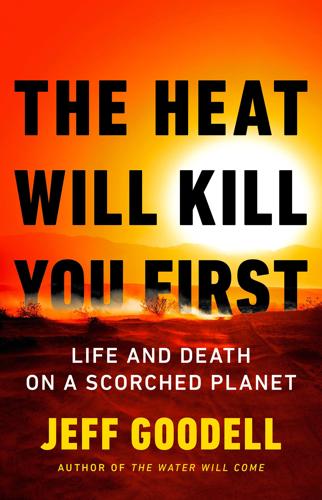
The Heat Will Kill You First: Life and Death on a Scorched Planet
by
Jeff Goodell
Published 10 Jul 2023
It’s also making it tougher for him to decide every year what to put in the ground. “I hope to get another decade out of this, and then I’m heading to Vegas,” Guerra told me, smiling. Scientists have tools now that allow them to cut and paste DNA almost as easily as I can cut and paste the words on this page. CRISPR, as the technology is called (Clustered Regularly Interspaced Short Palindromic Repeat), is revolutionizing agriculture and helping create crops for the future. Sounds promising, right? Just insert a cactus gene into the corn genome and voilà! you have supercorn, capable of withstanding the heat of a thousand suns.
…
If you try and grow it in California’s Central Valley, the plants freak out because the day length is inappropriate. And instead of starting to flower when they should, they just keep growing and you can end up with a corn plant that’s twenty-five feet tall.” Other researchers are skeptical about CRISPR-manipulated plants for a different reason: even if they can work and solve heat-related problems, the seeds of the modified crops will be locked up by big seed companies, furthering the corporate control of farmers and our food supply. It is not going to help people in, say, Madagascar, where they are starving, or in Colorado, where people just want to grow some food in a community garden.
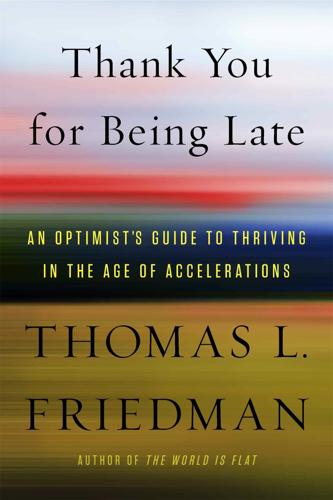
Thank You for Being Late: An Optimist's Guide to Thriving in the Age of Accelerations
by
Thomas L. Friedman
Published 22 Nov 2016
Last story: In a February 9, 2016, worldwide threat assessment report to the Senate Armed Services Committee, James Clapper, the U.S. director of national intelligence, added gene editing—for the first time—to a list of threats posed by “weapons of mass destruction and proliferation.” As the MIT Technology Review noted on that day, “Gene editing refers to several novel ways to alter the DNA inside living cells. The most popular method, CRISPR, has been revolutionizing scientific research, leading to novel animals and crops, and is likely to power a new generation of gene treatments for serious diseases. It is gene editing’s relative ease of use that worries the U.S. intelligence community, according to the assessment.” Clapper’s report said: “Given the broad distribution, low cost, and accelerated pace of development of this dual-use technology, its deliberate or unintentional misuse might lead to far-reaching economic and national security implications.”
…
MIT Technology Review reported on February 8, 2016: A controversial genetic technology able to wipe out the mosquito carrying the Zika virus will be available within months, scientists say. The technology, called a “gene drive,” was demonstrated only last year in yeast cells, fruit flies, and a species of mosquito that transmits malaria. It uses the gene-snipping technology CRISPR to force a genetic change to spread through a population as it reproduces. Three U.S. labs that handle mosquitoes, two in California and one in Virginia, say they are already working toward a gene drive for Aedes aegypti, the type of mosquito blamed for spreading Zika. If deployed, the technology could theoretically drive the species to extinction.
…
Louis Park as; trust and; value sets and complexity: as free; of Mother Nature; supernova and Computer History Museum computers, computing: cloud and see supernova (cloud computing); cognitive era of; components of; see also specific components; democratization and; disruption and; Moore’s law and, see Moore’s law; personal, as commodities; programming era of; tabulating era of; workforce and “Computing, Cognition and the Future of Knowing” (Kelly) concentration, learning and Conexant Systems Confederate flag connections, human-to-human connectivity, advances in; education and; the Market and; poverty and; supernova and; terrorists and; 2000 as breakthrough year in; 2007 as breakthrough year in; workplace and; see also global flows Conservative Party, British consumer electronics, advances in consumption; population growth and coral reefs Corbat, Michael L. Core corrective rape Coursera “Cramming More Components onto Integrated Circuits” (Moore) credentials CRISPR “Cultural Diversity, Geographical Isolation and the Origin of the Wealth of Nations” (Ashraf and Galor) cultural identity, inclusive ethos and culture: diversity in; ownership in Culture Matters in Russia—and Everywhere (Harrison, ed.) Curie, Marie Cutting, Doug cybercriminals cyberspace, see supernova (cloud computing) cyberwarfare Daily Telegraph dairy industry, computerization in Dakar Dalio, Ray Daly, Herman Dara, Dina Dara’a, Syria Darwin, Charles data, see big data data transmission, cost-speed ratio in DataWind Davison, Lang Debreu, Gérard decolonization Deep Blue Defense Department, U.S.
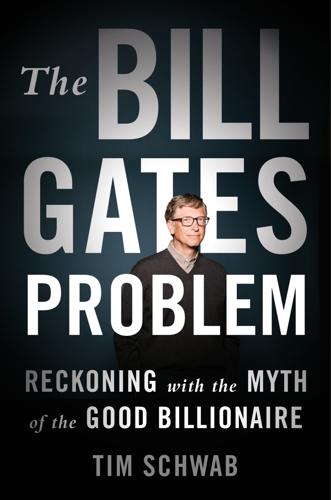
The Bill Gates Problem: Reckoning With the Myth of the Good Billionaire
by
Tim Schwab
Published 13 Nov 2023
As he explained in a 2019 interview, 40 percent of the foundation’s annual budget goes to research and development to bring new pharmaceuticals to market. When I say, “Okay, we’re going to build a TB drug team, we’re going to build a TB vaccine team, we’re going to build a kill-all-the-mosquitoes-in-the-world gene drive CRISPR team [to fight malaria],” I get to, in terms of how we fund that, organize it—How many locations? Do we wait until they get this result before we scale it up? I get to use the same or 80 percent the same type of thinking that I exercised [at Microsoft] in terms of “Okay, let’s go do Windows, let’s go do Excel.”
…
In 2009, Gurian-Sherman, who holds a doctorate in plant pathology and who later in his career worked for the Union of Concerned Scientists, published a series of studies showing that the claimed benefits of GMOs—things like increased yield and improved drought tolerance—have been widely overstated. The development of new genetic engineering technologies like CRISPR may offer “more potential to get smaller incremental changes that could collectively add up to some significance,” he noted, “but how important that would be overall, especially compared to alternatives such as agroecology—I think it’s very easy to overemphasize—it’s too early days to know. The whole other piece of this is, how is this technology going to be used and developed?
…
“Buffalo Bill” Co-Impact Cole, Chris Coleman, David Collective Power for Reproductive Justice College Board college education College Transparency Act Collins, Chuck Colombia colonialism and neocolonialism Columbia Journalism Review Columbia University Common Core State Standards (CCSS) Condé Nast Cone, Jason conflicts of interest Congo, Democratic Republic of ConnectEDU Connelly, Matthew Consolidated Appropriations Act conspiracy theories contraceptives Copenhagen Consensus Center copyrights Corbevax Cornell Alliance for Science (CAS) Cornell University Corteva Agriscience Council of Europe COVAX Covid-19 vaccines Cox, Andrew Crimson CRISPR C-sections C-SPAN Cuba Cuomo, Andrew CureVac Daily Mail Daily Show, The (TV show) Dakar Dallas Morning News Daniels, Colleen Danish Institute for International Studies Data Action (One Action) Data and Society data imperialism Data Quality Campaign data surveillance Davidson, Adam da Vinci, Leonardo Dead Aid (Moyo) decolonization Decolonizing Wealth (Villanueva) De Correspondent democracy Democrats Denmark Der Spiegel Dessalegn, Hailemariam #DGH diarrheal diseases Dickinson, John Die Welt Ditiu, Lucica DKT Doctors Without Borders.

Viruses: A Very Short Introduction (Very Short Introductions)
by
Crawford, Dorothy H.
Published 27 Jul 2011
Suttle, ‘Viruses in the Sea’, Nature, 437 (2005): 356–61. L. Ledford, ‘Death and Life Beneath the Sea Floor’, Nature, 545 (2008): 1038. K. M. Oliver, P. H. Degnan, M. S. Hunter, and N. A. Moran, ‘Bacteriophages Encode Factors Required for Protection in a Symbiotic Mutualism’, Science, 325 (2009): 992–4. Chapter 3 P. Horvath and R. Barrangou, ‘CRISPR/Cas, the Immune System of Bacteria and Archaea’, Science, 327 (2010): 167–70. Chapter 4 A. J. McMichael, ‘Environmental and Social Influences on Emerging Infectious Diseases: Past, Present and Future’, Philosophical Transactions of the Royal Society, London, B 359 (2004): 1049–58. M. E. J.

This Is Not a Drill: An Extinction Rebellion Handbook
by
Extinction Rebellion
Published 12 Jun 2019
It was by far the largest fee I had ever been offered for a talk – about half my annual professor’s salary – all to deliver some insight on the subject of ‘the future of technology’. I’ve never liked talking about the future. The Q&A sessions always end up more like parlour games where I’m asked to opine on the latest technology buzzwords as if they were ticker symbols for potential investments: blockchain, 3D printing, CRISPR. The audiences are rarely interested in learning about these technologies or their potential impacts beyond the binary choice of whether or not to invest in them. But money talks, so I took the gig. After I arrived, I was ushered into what I thought was the Green Room. But instead of being wired with a microphone or taken to a stage, I just sat there at a plain round table as my audience was brought to me: five super-wealthy guys – yes, all men – from the upper echelon of the hedge-fund world.

Radical Technologies: The Design of Everyday Life
by
Adam Greenfield
Published 29 May 2017
Do these few sketches represent the only choices available to us, or even the entire spectrum of variation possible between them? Of course not. None of them takes particular note of the equally transformative potentials emerging from biotechnology and the life sciences—stem-cell therapies, for example, the CRISPR genome-editing process, or the various ways in which we are becoming-cyborg. Collectively, they no doubt underweight the influence of social and demographic trends that have nothing to do with technology per se. Each of them, in the manner of Shell’s original scenarios, is merely a distillation of certain tendencies we can already perceive in our use of one particular class of technologies.
…
See Google Bowyer, Adrian, 86, 303, 306 Branch, startup, 246–7, 254 Brandes, Jeff, 256 Brantingham, Jeffrey, 231 Patricia, 232 Paul, 232 Braungart, Michael, 96 British Broadcasting Corporation, BBC, 177 Brown, Henry T., 103 Brown, Joshua, 223–4, 254 Brown, Michael, 231 “buddy punching,” 198 bullshit jobs, 203, 205 Bui, Quoctrung, 192–3 bushido, 266–7 Bushido Project, the, 266 Business Microscope, 197 Buterin, Vitalik, 147–50, 152, 154, 162–4, 167, 169, 172, 175, 177, 179, 303, 311 Byzantium, 69 CAD-Coin, 157 Californian Ideology, the, 283 Carmack, John, 82 cartography, 20 cats, 214 CCTV, 49–50, 54, 241 cellular automata, 86 Champs-Élysées, 1 Chaum, David, 121 Checkpoint Charlie, 70 chess, 263 Chevrolet Camaro, 216–18 Chicago Police Department, 230–1 China, 87, 102, 190, 194, 278–9, 286, 290, 306 Churchill, Winston, 28 circular economy, 92, 96, 99, 288 Ciutat Meridiana, Barcelona neighborhood, 109 climax community, 289 Cockney rhyming slang, 311 code library, 274–5 commons, the, 171–3 computer numerical control, CNC milling, 86, 93, 95, 97, 108, 110, 273 Container Store, 196 cooperatives, 171 cooperative motility, 80 Copenhagen, 31, 51 Cornell Law School, 151 Cortana virtual assistant, 39 Costco, 45 cozy catastrophe, 291 cradle-to-cradle industrial ecosystem. See circular economy The Craftsman (Sennett), 111 Creative Commons, 102–3 CRISPR technique, 298 Crossmatch, startup, 198 Crown Heights, Brooklyn neighborhood, 136 cryptocurrency, 8, 115–44, 145, 148–9, 153, 156, 164–5, 177–8, 248, 273, 279, 290, 293, 318 cryptofinance, 180 cryptography, 116, 118–19, 121–3, 129, 146–7, 176, 178–9 “Custom Notifications,” Chicago Police Department program, 235 cybernetic socialism, 191 DAO, The, distributed autonomous organization, 161–81 data subject, 251 Davao City, Philippines, 31, 43, 46 Day, Jeffrey, 63 distributed denial-of-service attacks, 45 “The Dead” (Joyce), 261 Deep Blue, 263–5 Deep Dream.

Enlightenment Now: The Case for Reason, Science, Humanism, and Progress
by
Steven Pinker
Published 13 Feb 2018
It may be more than just luck that the world so far has seen just one successful bioterror attack (the 1984 tainting of salad with salmonella in an Oregon town by the Rajneeshee religious cult, which killed no one) and one spree killing (the 2001 anthrax mailings, which killed five).60 To be sure, advances in synthetic biology, such as the gene-editing technique CRISPR-Cas9, make it easier to tinker with organisms, including pathogens. But it’s difficult to re-engineer a complex evolved trait by inserting a gene or two, since the effects of any gene are intertwined with the rest of the organism’s genome. Ewald notes, “I don’t think that we are close to understanding how to insert combinations of genetic variants in any given pathogen that act in concert to generate high transmissibility and stably high virulence for humans.”61 The biotech expert Robert Carlson adds that “one of the problems with building any flu virus is that you need to keep your production system (cells or eggs) alive long enough to make a useful quantity of something that is trying to kill that production system. . . .
…
Review boards bog down research without protecting subjects: Atran 2007; Gunsalus et al. 2006; Hyman 2007; Klitzman 2015; Schneider 2015; Schrag 2010. 43. Moss 2005. 44. Protecting suicide bombers: Atran 2007. 45. Philosophers against bioethics: Glover 1998; Savulescu 2015. For other critiques of contemporary bioethics, see Pinker 2008b; Satel 2010; S. Pinker, “The Case Against Bioethocrats and CRISPR Germline Ban,” The Niche, Aug. 10, 2015, https://ipscell.com/2015/08/stevenpinker/8/; S. Pinker, “The Moral Imperative for Bioethics,” Boston Globe, Aug. 1, 2015; H. Miller, “When ‘Bioethics’ Harms Those It Is Meant to Protect,” Forbes, Nov. 9, 2016. See also the references in note 42 above. 46.
…
See paradox of value cooking smoke, 130–31, 463n28 Coolidge, Calvin, Jr., 63 Coontz, Stephanie, 113 cooperation evolution of capacity for, 23, 415, 453 Humanist Manifesto III on, 411 Kant’s “unsocial sociability,” 482n6 well-being and, 31 Cornwall Declaration on Stewardship, 287 corporal punishment, 12, 43, 229–30 corruption, as factor in happiness, 271 Cosmides, Leda, 17 cosmopolitanism, 11 and civilizations, development of, 450–51 declared a failure, 420 and diversification of diet, 259–60 multiethnic communities, 405, 448, 450 and sympathy, circle of, 221 virtues of science as, 409 counter-Enlightenments declinism, 32–3, 165 disdain for science, 33–4 nationalism, 30–31 religion, 30, 31 rise of, 29–30 Romanticism as, 30, 351 romantic militarism and, 165–6 See also fascism; intellectuals; nationalism; populism; religion; romantic heroism; Romanticism; science, disdain for Counts, George, 234 Coyne, Jerry, 422, 430 Crawford, Jarret, 373 creationism, 19, 22, 356, 387, 398 Crick, Francis, 386 Crimea, annexation by Russia (2014), 164, 335 criminal punishment, 11, 12, 174, 439. See also capital punishment; violent crime CRISPR-CAS9 gene-editing, 306–7 Critical Theory (Frankfurt School), 396–7, 406, 446 critical thinking instruction, 377–8 Croatia, 203 Cronin, Audrey, 196–7 Cronon, William, 123 Cruz, Ted, 336 Cuba, 206, 247, 376–7, 447, 484n79 Cuban Missile Crisis, 309, 312, 479n93 cultures, human development of, 23 cybernetics, 21–2 Czech Republic, 341, 489n68 d’Alembert, Jean-Baptiste, 10 Dante, 63 Darfur, 162 Darwin, Charles Argument from Design refuted by, 421 death of children of, 56 falsely tied to scientific racism, 398, 400, 486n32 falsely tied to Social Darwinism, 398–9, 400 on humans as single species, 398 and replicating systems and evolution, 18–19 See also evolution; natural selection data, 42–3, 44–5, 48 dataphobic mindset, 48, 49, 404–5 literary scholarship and science of, 408 most recent date for graphs in book, 156, 466n1 objections to use of, 44–7 sources of, 52 See also objective measurement; prediction Davies’s Corollary.
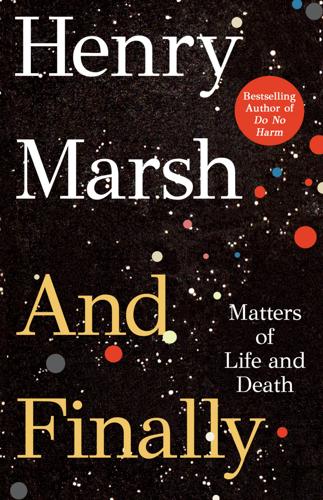
And Finally
by
Henry Marsh
After the rather shocking discovery that there are only 20,000 human genes, it came to be understood that genes work together in very complicated ways – that the colour of our eyes, our height, our intelligence, are polygenic and determined by multiple genes. Hundreds of genes, for instance, have been implicated in schizophrenia. Altering one gene with one of the new gene-editing technologies such as CRISPR might have all manner of unpredictable, undesirable effects downstream. Genetic modification in food crops is one thing – and a vital tool for combating climate change and environmental degradation. Altering a human genome for certain rare, single-gene diseases is a different matter from editing normal genes in the hope of improving the body they produce.

Survival of the Richest: Escape Fantasies of the Tech Billionaires
by
Douglas Rushkoff
Published 7 Sep 2022
As a humanist who writes about the impact of digital technology on our lives, I am often mistaken for a futurist. And I’ve never really liked talking about the future, especially for wealthy people. The Q & A sessions always end up more like parlor games, where I’m asked to opine on the latest technology buzzwords as if they were ticker symbols on a stock exchange: AI, VR, CRISPR. The audiences are rarely interested in learning about how these technologies work or their impact on society beyond the binary choice of whether or not to invest in them. But money talks, and so do I, so I took the gig. I flew business class. They gave me noise-canceling headphones to wear and warmed mixed nuts to eat (yes, they heat the nuts) as I composed a lecture on my MacBook about how digital businesses could foster circular economic principles rather than doubling down on extractive growth-based capitalism—painfully aware that neither the ethical value of my words nor the carbon offsets I had purchased along with my ticket could possibly compensate for the environmental damage I was doing.
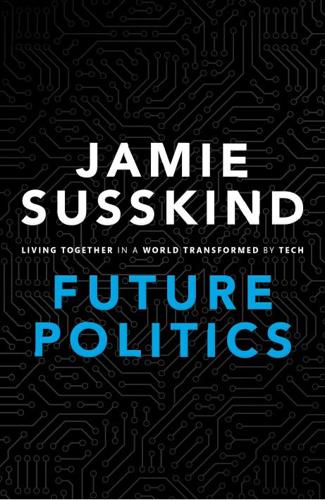
Future Politics: Living Together in a World Transformed by Tech
by
Jamie Susskind
Published 3 Sep 2018
Karl Marx, On the Jewish Question, in Karl Marx and Frederick Engels: Collected Works Vol. 3 (London: Lawrence & Wishart, 1975), 154. Chapter 20 1. Yuval Noah Harari, Homo Deus: A Brief History of Tomorrow (London: Harvill Secker, 2015), 25. 2. Elizabeth Lopatto, ‘Gene Editing Will Transform Cancer Treatment’, The Verge, 22 November 2016 <https://www.theverge.com/a/ verge-2021/jennifer-doudna-crispr-gene-editing-healthcare> (accessed 8 December 2017). 3. See, e.g., Francis Fukuyama, Our Posthuman Future: Consequences of the Biotechnology Revolution (London: Profile Books, 2002); Max More and Natasha Vita-More, eds., The Transhumanist Reader: Classical and Contemporary Essays on the Science, Technology, and Philosophy of the Human Future (Chichester: John Wiley & Sons, Inc, 2013). 4.
…
OUP CORRECTED PROOF – FINAL, 28/05/18, SPi РЕЛИЗ ПОДГОТОВИЛА ГРУППА "What's News" VK.COM/WSNWS 466 Bibliography Locke, John. Two Treatises of Government and A Letter Concerning Toleration. Ed. Ian Shapiro. New Haven and London:Yale University Press, 2003. Lopatto, Elizabeth. ‘Gene Editing Will Transform Cancer Treatment’. The Verge, 22 Nov. 2016. <https://www.theverge.com/a/verge-2021/ jennifer-doudna-crispr-gene-editing-healthcare> (accessed 8 Dec. 2017). LSST. <https://www.lsst.org/about> (accessed 30 Nov. 2017). Lukes, Steven, ed. Power. New York: New York University Press, 1986. Lukes, Steven. Power: A Radical View (Second Edition). Basingstoke: Palgrave Macmillan, 2005. Luxemburg, Rosa.‘The Russian Revolution’ (1918).Translated by Bertram Wolfe.

Architects of Intelligence
by
Martin Ford
Published 16 Nov 2018
That’s a success for this approach of comprehensive ethical standards, and technical strategies on how to keep the technology safe, and much of that is now baked into law. That doesn’t mean we can cross danger from biotechnology off our list of concerns; we keep coming up with more powerful technologies like CRISPR and we have to keep reinventing the standards. We had our first AI ethics Asilomar conference about 18 months ago where we came up with a set of ethical standards. I think they need further development, but it’s an overall approach that can work. We have to give it a high priority. MARTIN FORD: The concern that’s really getting a lot of attention right now is what’s called the control problem or the alignment problem, where a superintelligence might not have goals that are aligned with what’s best for humanity.
…
DAPHNE KOLLER: When you look at the places where machine learning has made a difference, it’s really been where we have an accumulation of large amounts of data and we have people who can think simultaneously about the problem domain and how machine learning can solve that. You can now get large amounts of data from resources like the UK Biobank or All of Us, which gather a lot of information about people and enable you to start thinking about the health trajectories of actual humans. On the other side, we have amazing technologies like CRISPR, DNA synthesis, next-generation sequencing, and all sorts of other things that are all coming together at the same time to be able to create large datasets on a molecular level. We are now in the position where we can begin to deconvolute what is to my mind the most complex system that we’ve seen: the biology of humans and other organisms.

Whiplash: How to Survive Our Faster Future
by
Joi Ito
and
Jeff Howe
Published 6 Dec 2016
An example of this kind of design is the work of Media Lab Assistant Professor Kevin Esvelt, who describes himself as an evolutionary sculptor. He is working on ways of editing the genes of populations of organisms such as the rodent that carries Lyme disease and the mosquito that carries malaria to make them resistant to the pathogens. The specific technology—CRISPR gene drive—is a type of gene edit such that when carrier organisms are released into the wild, all of their offspring, and their offspring’s offspring, will inherit the same alteration, allowing us potentially to eliminate malaria, Lyme disease, and other vector-borne and parasitic diseases. His focus is not on the gene editing or the particular organism, but the whole ecosystem—including our health system, the biosphere, our society, and its ability to think about these sorts of interventions.
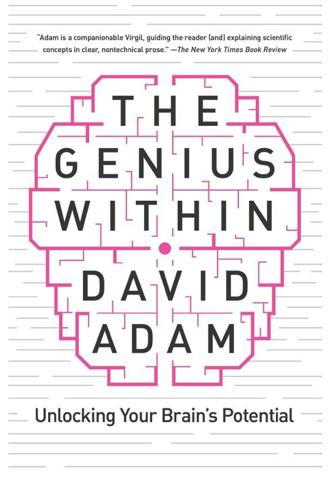
The Genius Within: Unlocking Your Brain's Potential
by
David Adam
Published 6 Feb 2018
The editing of the genes into shape is more technically demanding and probably not possible yet, but progress is racing ahead. Even in the eighteen months or so I have been writing this book, the scientific world has been turned upside down by the rapid rise of a new gene editing technology called Crispr-Cas9. It allows scientists to make precise and accurate genetic modifications, and puts the ability to do so in the hands of even non-expert researchers. Chinese scientists stunned everybody in biology in 2015 when they announced they had already used the tool to modify the DNA of a human embryo*, but virtually all the work so far has been in animals.

Age of the City: Why Our Future Will Be Won or Lost Together
by
Ian Goldin
and
Tom Lee-Devlin
Published 21 Jun 2023
Indeed, a strain of Yersinia pestis resistant to eight different antibiotics was identified in Madagascar in 2007.49 Lastly, there is the increased risk that advances in biotechnology could be harnessed by malicious actors. Gene-sequencing machines have become both more advanced and more accessible in recent decades, while technologies such as CRISPR are making it easier to re-engineer organisms in targeted ways.50 , 51 These scientific advances hold immense promise. The speed with which tests and vaccines were developed for Covid-19 would not have been possible without recent advances in genomic sequencing. And they may eventually make it possible to eradicate diseases like malaria and dengue fever for good by making mosquitoes resistant to the parasites responsible for them.52 At the same time, these technologies open up possibilities for weaponizing diseases to maximize loss of human life.
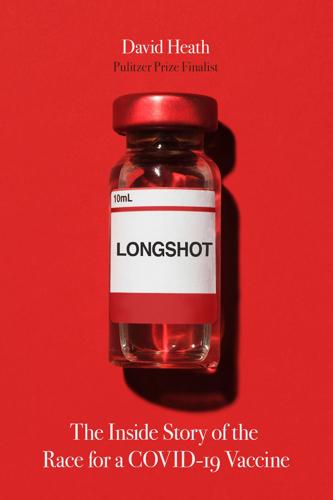
Longshot
by
David Heath
Published 18 Jan 2022
A vaccine for HPV relied on a protein found on the virus’s outer shell.72 But even protein-based vaccines didn’t eliminate the possibility of vaccines making a disease worse. That was a dilemma Barney Graham would toil away at for most of his career. CHAPTER 3 The Underrated Scientist In the world of science, DNA is a superstar. From the discovery of the double helix to cracking the code to CRISPR, deoxyribonucleic acid has been at the center of some of the greatest biological discoveries. Scientists cannot go wrong devoting their careers to understanding the blueprint of life. While we all know that DNA determines the color of our eyes, our hair, and our skin, medical researchers still believe that—despite setbacks—manipulating genes will one day enable us to cure many diseases.

The Great Leveler: Violence and the History of Inequality From the Stone Age to the Twenty-First Century
by
Walter Scheidel
Published 17 Jan 2017
Estimate: Frey and Osborne 2013. Among many others, Brynjolfsson and McAfee 2014 stress the enormous transformative potential of computerization. For AI, see most recently Bostrom 2014. 10 Center for Genetics and Society 2015 surveys recent advances in genetic techniques, most notably genomic editing by means of CRISPR/Cas9; see esp. 20–25 on germline modification, and 27–28 on ethics and inequality. Liang et al. 2015 report on human embryo gene editing at a Chinese university, which was largely unsuccessful. See also Church and Regis 2014 for the potential of synthetic biology. Harari 2015 makes valuable points about the limits of political constraints.
…
Cambridge, MA: Harvard University Press. Li, Feng. 2013. Early China: a social and cultural history. Cambridge, UK: Cambridge University Press. Li, Shi. 2014. “Rising income and wealth inequality in China.” http://unsdsn.org/wp-content/uploads/2014/05/TG03-SI-Event-LI-Shi-income-inequality.pdf. Liang, Puping, et al. 2015. “CRISPR/Cas9-mediated gene editing in human tripronuclear zygotes.” Protein and Cell 6: 363–372. Lin, Ken-Hou, and Tomaskovic-Devey, Donald. 2013. “Financialization and US income inequality, 1970–2008.” American Journal of Sociology 118: 1284–1329. Lindert, Peter H. 1991. “Toward a comparative history of income and wealth inequality.”

Scary Smart: The Future of Artificial Intelligence and How You Can Save Our World
by
Mo Gawdat
Published 29 Sep 2021
I mean, think about it, while we humans sometimes struggle to remember a string of more than seven digits, AI can look at a three-billion-record string of DNA sequence, or as much of it as we can sequence, and remember all of it – not just for one, but for millions of people. When I was at Google [X] we estimated that if we could have the records of genetic sequences combined with the associated medical records of a million consenting individuals we could begin to understand most of the genetic morphing that causes disease in humans. With technologies like Crispr – a tool that allows gene editing – we could even fix it. With the cost of DNA sequencing dropping below a thousand dollars per individual, this goal might not be much further than a few years away. Such understanding may not only help us prolong healthy, productive human life, but, unlike the killing robots and the drones, it will also teach the AI involved that human life matters.
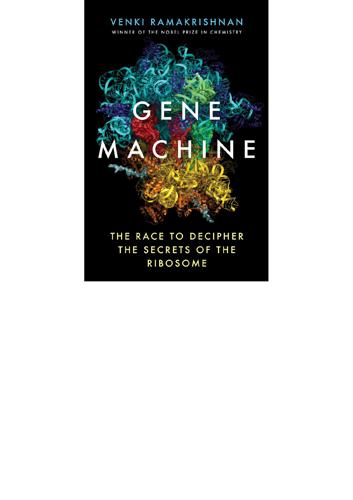
The Gene Machine
by
Venki Ramakrishnan
Figure 10.1 Jennifer Doudna and Jamie Cate (courtesy of Jamie Cate) Jennifer was a brilliant scientist who had done her PhD with Jack Szostak at Harvard, where she worked on RNA catalysis. Following her postdoc with Cech, she went to Yale, where she had a remarkable series of successes and continued an illustrious career in Berkeley. In the last few years, she has taken the world by storm for her part in developing the CRISPR-Cas method of modifying genes, for which she has won numerous awards and probably will win the Nobel Prize. Unusually for a scientist, she was also once featured in Vogue. The graduate student who began working on the project with her in Colorado, Jamie Cate, followed her to Yale. He did more than just follow her.
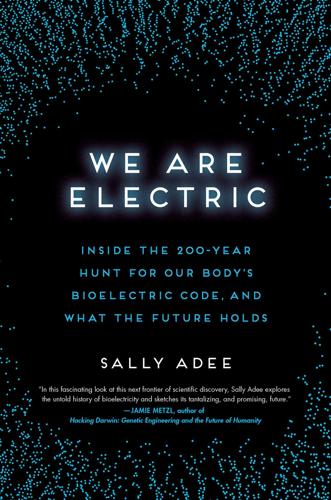
We Are Electric: Inside the 200-Year Hunt for Our Body's Bioelectric Code, and What the Future Holds
by
Sally Adee
Published 27 Feb 2023
They’ve mooted all kinds of possibilities: editing people’s electrical code to increase intelligence; to reprogram troublesome personalities; to regrow amputated limbs; or to remap the body’s blueprint altogether. If we are truly electric, then we should all be programmable at the level of the cell. But what will happen when we begin to use our knowledge of the electrome to get better grades instead of cure cancer? The gene-editing technology CRISPR ushered in a flurry of worries about designer babies, and our ability to edit the bioelectric code will be much the same. In one study, a simple tweak to the electrome caused functional eyes to grow on a frog’s butt, and in another prompted a worm to grow two heads.4 There is a clear relationship between our electrome and the shape our bodies take—from frogs to worms to humans—so we need to do much more research before someone grows themselves a third eye for social media clout.

Green Gold
by
Sarah Allaback
Published 14 Mar 2025
Studies show it’s one of the top reasons people don’t buy the fruit. In June 2023, he announced a breakthrough: his group had silenced a gene in the avocado responsible for browning, the same enzyme that causes lettuce, mushrooms, apples, and potatoes to brown when cut. Touchman spent six years and used CRISPR technology to coax avocado cells to grow in his laboratory. Several six- or seven-inch-high “plantlets” were planted. “We have not produced fruit yet. That will be the biggest test of non-browning, of course,” Touchman said. He was confident the avocado trees would grow and bear fruit. “I think it’s going to be a blockbuster.”11 The river of avocados keeps flowing.
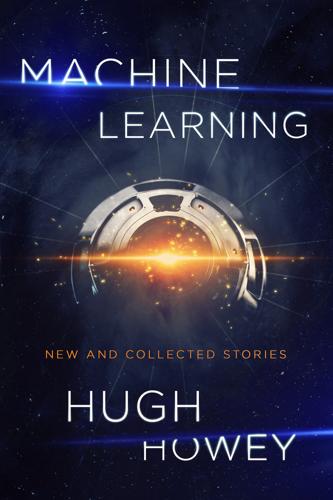
Machine Learning: New and Collected Stories
by
Hugh Howey
Published 2 Oct 2017
Like a human pushing another human into a nest of ants. The regulation side of things hasn’t been explored enough in science fiction. And I don’t mean regulating the rules of AI, which Asimov broached and made famous. I mean the regulation of ownership. You can’t let every citizen have a brain that knows how to CRISPR up a terrible infectious disease. Or own a computer that can decrypt any electronic safeguard. Or one that can hack any other person, company, or country. Once these things are regulated, the interesting stories in real life will be what motivate people to break these laws. Immortality? Theft? Revenge?
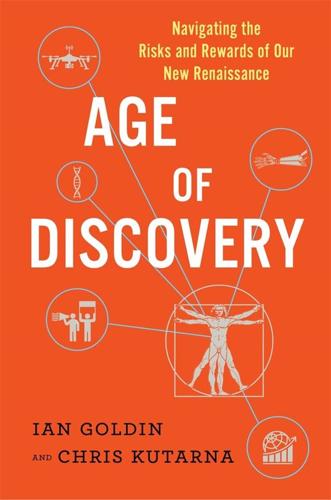
Age of Discovery: Navigating the Risks and Rewards of Our New Renaissance
by
Ian Goldin
and
Chris Kutarna
Published 23 May 2016
Retrieved from www.gencodegenes.org. 13. Noble, Denis (2006). The Music of Life. Oxford: Oxford University Press. 14. Venter, Craig, Daniel Gibson, et al. (2010). “Creation of a Bacterial Cell Controlled by a Chemically Synthesized Genome.” Science 329(5987): 52–56. 15. Liang, Puping, Yanwen Xu, et al. (2015). “CRISPR/Cas9-Mediated Gene Editing in Human Tripronuclear Zygotes.” Protein & Cell 6(5): 363-372. 16. Persson, Ingmar and Julian Savulescu (2012). Unfit for the Future: The Need for Moral Enhancement. Oxford: Oxford University Press. 17. Bohr, Mark (2014). “14 nm Process Technology: Opening New Horizons.”
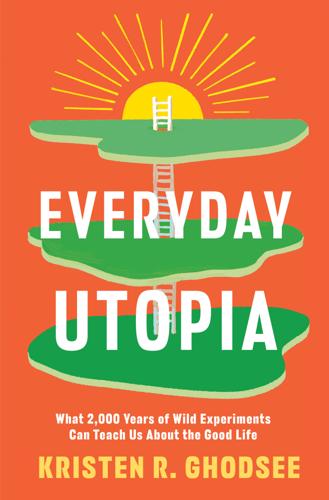
Everyday Utopia: What 2,000 Years of Wild Experiments Can Teach Us About the Good Life
by
Kristen R. Ghodsee
Published 16 May 2023
The French economist Thomas Piketty has called for a progressive supranational wealth tax to combat income inequality.13 The Dutch journalist Rutger Bregman has promoted several utopian visions “for realists,” including open borders and a fifteen-hour workweek.14 In Abundance: The Future is Better Than You Think, Greek-American engineer Peter Diamandis (founder of XPRIZE, which rewards inventors for technological developments that benefit humanity) and science journalist Steven Kotler look to the wonders of artificial intelligence and advances in robotics to propose technological solutions to problems like food scarcity, aging populations, and climate change. And in Fully Automated Luxury Communism, British author Aaron Bastani argues that technologies like cheap solar energy, asteroid mining, and CRISPR gene-editing will lead us into a world of post-scarcity universal health and leisure. For me, one of the most interesting aspects of this popular neo-utopianism lies in its primary focus on the public sphere. Today’s future-positive writers critique our economies while largely seeming to ignore that anything might be amiss in our private lives.
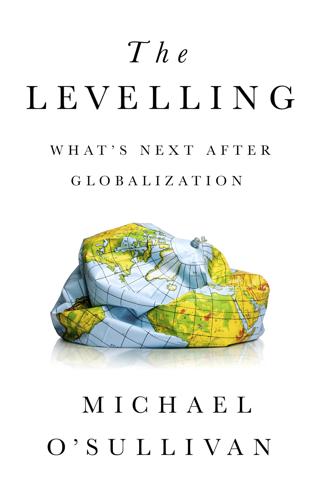
The Levelling: What’s Next After Globalization
by
Michael O’sullivan
Published 28 May 2019
Think also about advances in science in the realm of DNA and genetic experimentation, which may allow some people to enjoy long lives. As with many advances in medical technology, the benefits of advances in the areas of genetic editing (a leading area here is Clustered Regularly Interspaced Short Palindromic Repeats [CRISPR], which is effectively a DNA-based approach to managing bacteria and viruses), gene sequencing, and the manipulation of reproductive cells are going to be enjoyed by the better-off; more worryingly, they are not yet bound by internationally recognized laws. This creates an incentive for some states to position themselves as leaders in the field of gene manipulation, though there will be a very strong temptation for them to participate in forms of genetic engineering that are considered ethically unacceptable and that can conjure up thoughts of eugenics and natural selection.
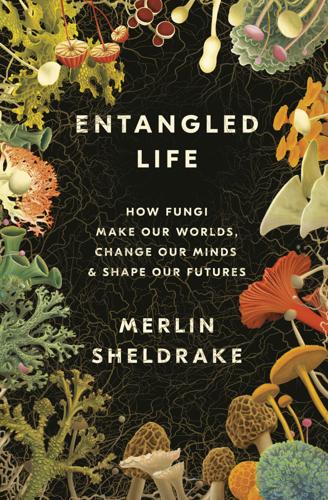
Entangled Life: How Fungi Make Our Worlds, Change Our Minds & Shape Our Futures
by
Merlin Sheldrake
Published 11 May 2020
Matsuura Y, Moriyama M, Łukasik P, Vanderpool D, Tanahashi M, Meng X-Y, McCutcheon JP, Fukatsu T. 2018. Recurrent symbiont recruitment from fungal parasites in cicadas. Proceedings of the National Academy of Sciences 115: E5970–E5979. Maugh TH. 1982. The scent makes sense. Science 215: 1224. Maxman A. 2019. CRISPR might be the banana’s only hope against a deadly fungus. Nature: www.nature.com/articles/d41586-019-02770-7 [accessed October 29, 2019]. Mazur S. 2009. Lynn Margulis: Intimacy of Strangers & Natural Selection. Scoop: www.scoop.co.nz/stories/HL0903/S00194/lynn-margulis-intimacy-of-strangers-natural-selection.htm [accessed October 29, 2019].
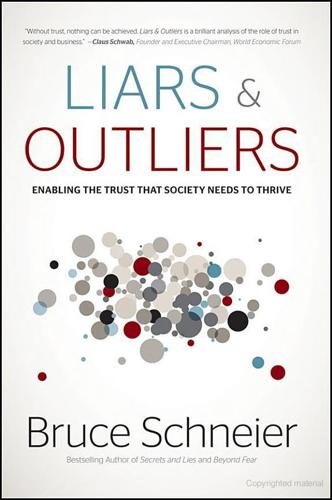
Liars and Outliers: How Security Holds Society Together
by
Bruce Schneier
Published 14 Feb 2012
(2) Some of this can be pretty complex; a single Brants's whistling rat builds a burrow with dozens or hundreds of entrances, so there's always one close by to retreat to. There's even an African rat that applies a tree poison to its fur to make itself deadly. (3) Just recently, an entirely separate, probably older, immune system was discovered in bacteria and archaea, called Clustered Regularly Interspaced Short Palindromic Repeats or CRISPRs. (4) In an earlier book, I mistakenly called this the “establishing reflex.” (5) In one experiment, children were faster at picking out a picture of a snake than pictures of more benign objects. (6) Stephen Jay Gould used to call these “Just So Stories” because they rarely have any proof other than plausibility (and the fact that they make a good story).

The Future Is Asian
by
Parag Khanna
Published 5 Feb 2019
Japan, too, has a dubious history of eugenics due to its 1930s forced sterilization campaign targeting the mentally disabled. But Asia’s regulatory environment increasingly enables the ambitious pursuit of applied biotech breakthroughs. China has used the same technology that Scottish scientists used to clone the sheep named Dolly in the 1990s to clone monkeys; CRISPR gene-editing technology was pioneered in the United States, but human trials are under way in Chinese hospitals while none has yet been launched in the United States. In 2016, scientists at Singapore’s A*STAR developed a new protein that speeds up DNA editing, and the country’s Temasek Life Sciences Laboratory has launched a large-scale synthetic biology incubator.
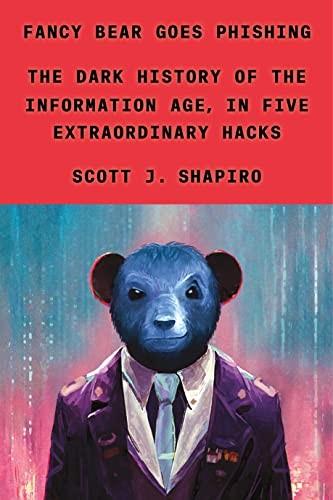
Fancy Bear Goes Phishing: The Dark History of the Information Age, in Five Extraordinary Hacks
by
Scott J. Shapiro
Von Neumann showed that automata must contain their own genetic information to construct new copies of themselves. Dark Avenger was now showing how to edit that genetic information. To use an analogy from current genetic engineering, if the tape of a universal constructor is akin to DNA, the MtE is similar to CRISPR, the popular laboratory tool used to edit base pairs of genomes. By editing the “DNA” of a virus, MtE constituted a major threat to the fledgling antivirus industry. This killer app was capable of evading every antivirus program then existing. Indeed, it would take the industry several years to develop a defense.
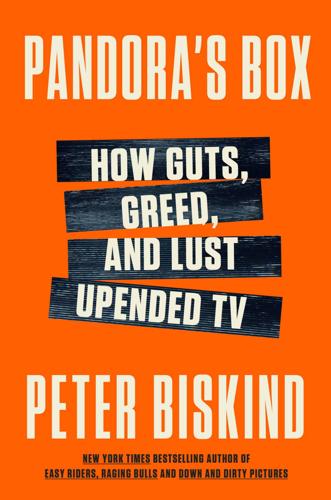
Pandora's Box: How Guts, Guile, and Greed Upended TV
by
Peter Biskind
Published 6 Nov 2023
He had animated Pocahontas, and he said the first likenesses of her that appear on Google Images are his.26 The answer seemed obvious: It was time for Disney to wake up its sleeping beauty, that is, its library of classic animation, and what a beauty it was. Not only would kids watch these shows over and over, but their appetites extended to endless knock-offs that allowed Disney to CRISPR franchises like Beauty and the Beast and The Lion King, turning them into gifts that never stopped giving. There was, however, a problem. Most of Disney’s classics were honeycombed with racism, sexism, and homophobia, all of which were axiomatic at the time they were made, so as to make them virtually invisible.
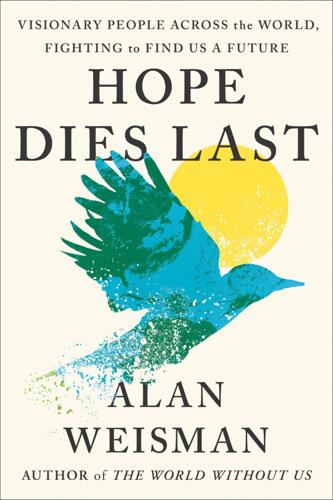
Hope Dies Last: Visionary People Across the World, Fighting to Find Us a Future
by
Alan Weisman
Published 21 Apr 2025
Grains, however, lack those protective nodules, so the fermented microbes that Pivot Bio provides must compete with everything else in the soil for the sugars oozing from, for example, corn’s roots. Since there’s no co-evolved symbiotic cooperation, corn can’t sense how much food Pivot Bio’s microbes need. “So billions of other microbes are also living off those root exudates.” The next step, he thinks, “will require CRISPR-type genetic tinkering, both on the microbial side as well as the corn plant side, to get closer to the system soybeans use. Unless we alter the anatomy and the metabolism of the corn plant, we won’t get to full replacement.” Pivot Bio’s scientists can now trick a microbe’s own DNA to keep fixing nitrogen even when fertilizer is present, but thus far they’ve avoided inserting another microbe’s genes, because there is public resistance to GMOs—even though 90 percent of corn and soy is already genetically modified to resist pests and tolerate herbicides.
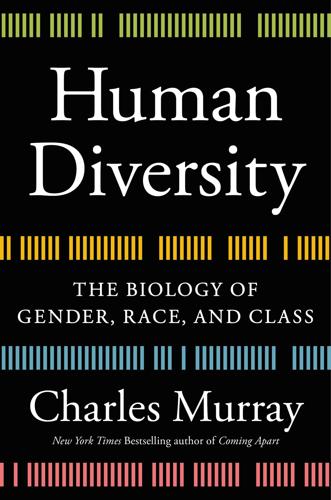
Human Diversity: The Biology of Gender, Race, and Class
by
Charles Murray
Published 28 Jan 2020
The obvious example is the positive and even life-changing effects that pharmaceuticals developed during the last few decades have had on some forms of depression and other mental disorders. Who knows what role future drugs might play in enhancing learning and positively affecting personality traits and social behavior? Their effects might be dramatic. At some point, the promise of CRISPR for gene editing will be realized, and all bets about the ability to change people by design in substantial numbers will be outdated. If we’re looking at the long term, Proposition #10 will certainly be wrong eventually. Not now. A Personal Interpretation of the Material in Part III We live in a world where certain kinds of abilities tend to be rewarded with affluence and professional prestige.
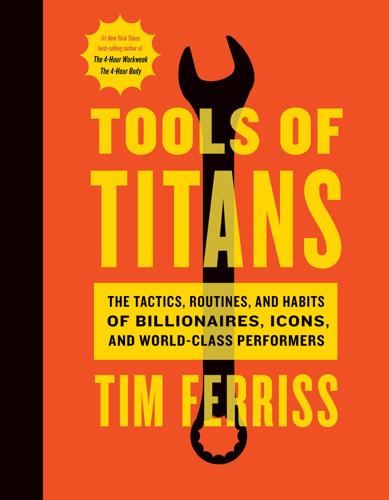
Tools of Titans: The Tactics, Routines, and Habits of Billionaires, Icons, and World-Class Performers
by
Timothy Ferriss
Published 6 Dec 2016
TF: I spoke about personalized bioweapons nearly 10 years ago with a qualified former NASA scientist. These are real. To stretch your brain on this subject, read a great article of Marc’s in the Atlantic titled “Hacking the President’s DNA.” If you’re a potential high-profile target, you need to think defensively. CRISPR and related technologies could potentially make the near future a boom era for biological weapons. Keep your genetic data very close to your chest. Even if you use pseudonyms, I’ve seen companies that can produce facial features from DNA info. It’s going to be practically impossible to anonymize.

On the Edge: The Art of Risking Everything
by
Nate Silver
Published 12 Aug 2024
It can take decades to realize the impact from new technologies; the blockchain and self-driving cars have perhaps not lived up to the hype so far, but who’s to say where they’ll be in twenty or thirty years? And the 2010s and the 2020s look more promising than the aughts between the AI transformer, gene-editing technologies like CRISPR, and even pharmaceuticals like semaglutide.[*5] So I do not mean to suggest that progress has ended; the world is still growing and changing. But at the very least, we do not appear to be on the verge of some sort of technological singularity. In fact, we may have come to take progress for granted.